
No.69 • MARCH / APRIL 2023 • HAWKE’S BAY UP CLOSE, IN DEPTH 9 772253 262016 02 Mar/Apr $ 10.00 INC. GST
next? Band-aids or new thinking? Stuart Nash on recovery Economic impacts Our mental wellbeing Superheroes
Hawke’s Bay shows heart What’s

OF H AW K E’S B AY



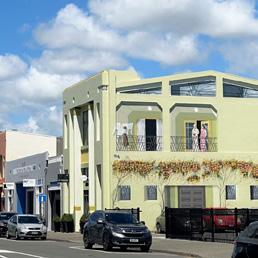



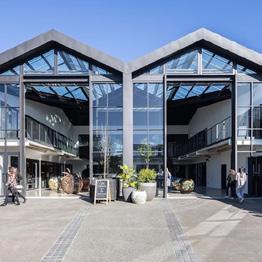

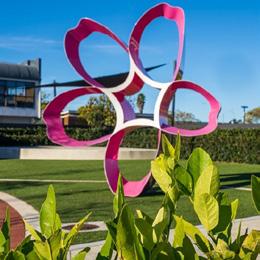





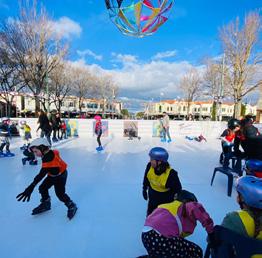



DRINK EAT SHOP EXPERIENCE DISCOVER www.hastingscity.co.nz HASTINGS
The cyclone disaster gets our attention in several articles – what went wrong, future planning, economic impact & recovery … and a kaleidoscope of recovery heroes. Especially timely, we assess the adequacy of HB’s mental health services. To brighten spirits, we look inside two iconic mansions which have stood the test of time, visit an urban winery and meet New Zealand’s new poet laureate. And we extol eggs, grand dreams, graphic novels and gift vouchers.

BayBuzz March/ April 2023 69
Photo: Florence Charvin
Follow us at: baybuzzhb
Articles online at: baybuzz.co.nz
Editorial enquiries editors@ baybuzz.co.nz
Advertising enquiries
Mandy Wilson 027 593 5575
mandy@baybuzz.co.nz
Reach BayBuzz by mail BayBuzz, PO Box 8322, Havelock North
The Buzz
6 From the editor
8 Hawke’s Bay’s heart
16 The Buzz
18 Grateful Tess Redgrave
Paul Paynter reflects.
Features
20 Build, baby, build
Tom Belford
Recovering and learning from the disaster.
26 Where to now?
Bonnie Flaws
Interview with Stuart Nash, Ministerial lead for recovery in Hawke’s Bay.

BayBiz
38 Who’s who in the economic development zoo?
Brenda Newth
We have a number of ‘cooks in the kitchen’ regarding regional business development.
48 Cool for school
Fiona Fraser
HB-based business helps teachers teach digital skills.
52 Cyclone delivers differing short and medium-term impacts
John Carran
About the cover
A t-shirt and a tray of baking sum it up. Heart for hope and muffins for sustenance and strength. With both we will survive. See page 8 for our photo essay of Hawke’s Bay’s superheroes. Photo: Florence Charvin

BayBuzz Team
EDITOR: Tom Belford

LIFE EDITOR: Michal McKay
SENIOR WRITERS: Tom Belford; Abby Beswick; Rosheen FitzGerald; Bonnie Flaws; Michal McKay; Tess Redgrave; Mark Sweet
COLUMNISTS: Andrew Frame; Fiona Fraser; Yvonne Lorkin; Kate McLeay; Paul Paynter; Dominic Salmon; Jess Soutar Barron; Ian Thomas; Louise Ward
BUSINESS WRITER: Brenda Newth
VIDEOGRAPHER: Patrick O'Sullivan
EDITOR’S RIGHT HAND: Brooks Belford
PHOTOGRAPHY: Florence Charvin
ILLUSTRATION: Ruth Mitchener; Brett Monteith
DESIGN: Unit Design - Max Parkes; Giselle Reid
PRODUCTION MANAGER: Giselle Reid
ONLINE: Elizabeth-Marie Nes; Lee Tong
BUSINESS MANAGER: Steph Lowry
PRINTING: Blue Star Group
ISSN 2253-2625 (Print)
ISSN 2253-2633 (Online)
30 Are we getting enough mental health help?
Tess Redgrave
Reforms and funding were touted to reach the ‘missing middle’. Are they?
A look at the Gabrielle economic fallout.
54 Two ports in a storm
Brenda Newth
Our port and airport met the cyclone challenge.
This document is printed on an environmentally responsible paper produced using Elemental Chlorine Free (ECF) pulp sourced from Sustainable & Legally Harvested Farmed Trees, and manufactured under the strict ISO14001 Environmental Management System.

4 BAYBUZZ March + April 2023
90 Egg appreciation Ian Thomas knows his eggs
20
disaster
Ideas + opinion
56 Go car-lite Dominic Salmon
We need less auto use, not just more EVs.
58 Eggless Ian Thomas
Why do we have an egg shortage?
Life
60 A tale of two houses
Mark Sweet
Two historic mansions –Tauroa and Arden –stand the test of time.
70 Chris Tse: a Poet Laureate to make our toenails twinkle
Louise Ward
Hawke’s Bay’s gift to the New Zealand poetry world.
74 You can do it! Kate McLeay
How to realise your dreams.
76 Artists in residence

Rosheen FitzGerald
Phillip John Smith (‘tortured toiling’) and Waiaroha Kaiwhakairo (public art).
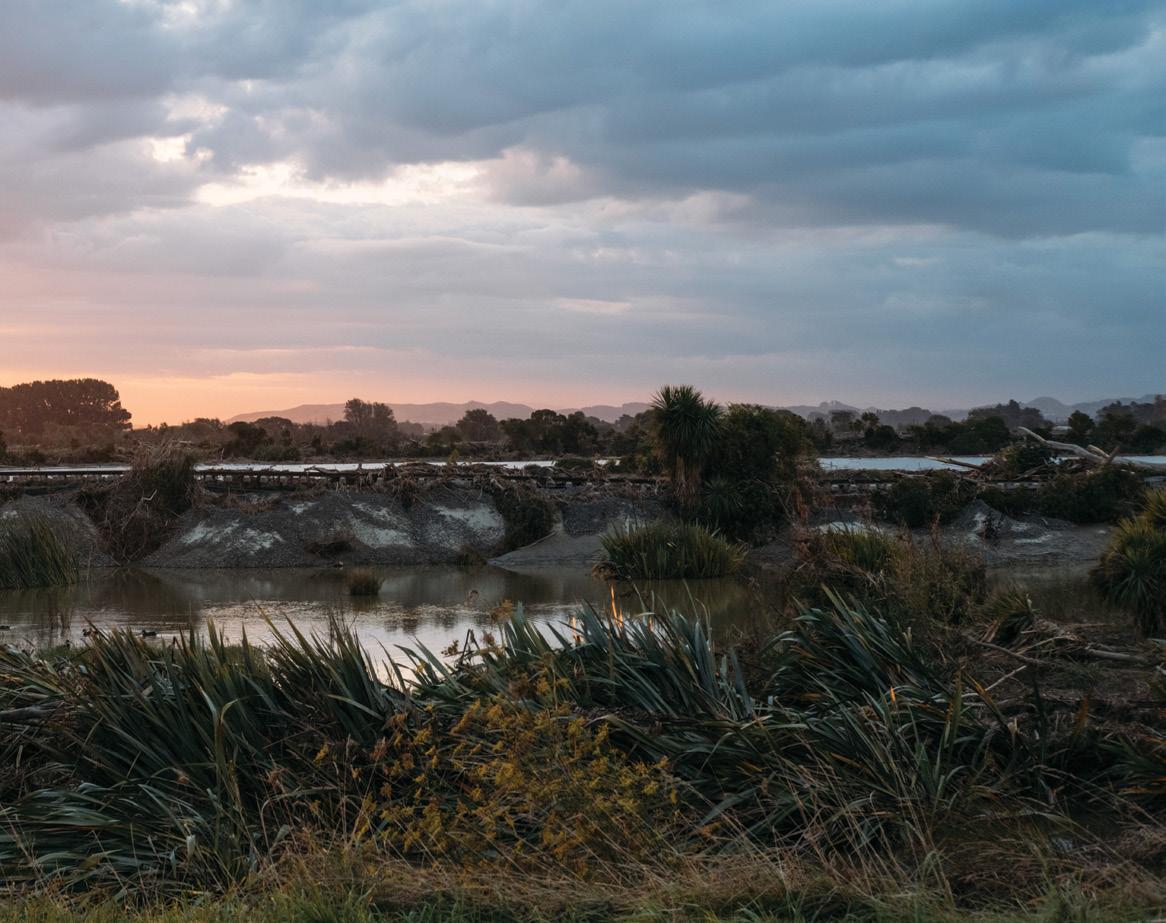
82 Saved by the Decibel Yvonne Lorkin
Meet Daniel Brennan, his Decibel Wines and urban wine cellar.
90 Egg appreciation Ian Thomas 20 things you must know about eggs!
92 Gratuitous graphics
Louise Ward
Comic books become graphic novels.
96 Just enjoy the pizza!
Jess Soutar Barron
Gift vouchers … your happiness timebomb.
All photos: Florence Charvin
Build, baby, build Recovering and learning from the
March + April 2023 BAYBUZZ 5
76 Artists in residence
From the editor Tom Belford

First and foremost, from the entire BayBuzz team we offer best wishes for recovery to those suffering loss –for many, very extreme loss that will endure – from our cyclone disaster.
We were well along in preparing the content for this edition when Cyclone Gabrielle struck, by far the biggest regional ‘event’ in BayBuzz’s 15-year history.
We made the changes we could to offer some analysis here of the disaster and ‘what next’ (and also substantially amplified our online coverage). But we also retained articles on topics of ‘normal’ interest in the Bay – from restored historic homes to the egg shortage to the state of mental health care in the Bay (an even higher priority as we absorb the full impact of Gabrielle).
In the weeks ahead BayBuzz will report in-depth on the recovery effort, which will involve both immediate and long-term elements. Immediate in terms of getting ourselves back on our feet emotionally and in our ‘normal’ daily lives and businesses. And longterm, looking at the plans and actions required at a community, regional and national scale to protect ourselves from future events like this one.
Also, there will be accountability issues to raise in due course. We will not shy away from those.
Regional structure and plans were in place to deal with possible major disasters, with potential earthquakes probably top of mind for most. Those plans would have anticipated bridge failures, power outages, flooding, loss of transit between our communities. How applicable were those plans in the face of this mega-disaster? Beyond paper
plans, did ‘on the ground’ preparations include adequate pre-positioning/storage of necessities like potable water, food and medical necessities, generators and pumps?
Importantly, we must question the long-term viability of such plans and measures. How well can they be assumed to protect residents, businesses and farmers/growers in low-lying areas, which constitute much of ‘metropolitan’ HB? How adequately will our stopbanks, being raised and upgraded even as this disaster struck, serve us in the future? Have we made some plain stupid decisions in our region regarding the location of housing and critical infrastructure (like power stations)?
What more can be done to ensure the resilience of our communications system and provision of emergency comms? The loss of contact with family, friends, rescue workers and the officialdom dealing with the crisis was perhaps the greatest cause of distress to everyone in the community, even those watching from safe and secure locations.
These and many questions like them need to be asked and addressed by our community in the weeks ahead. Beneath it all, what risks are we prepared to accept … or not?
There’s heaps to be learned. Of course, there will be a national inquiry into our disaster preparedness and response because the issues are obviously country-wide in scale and importance.
But that does not mean we should not comprehensively review our situation locally, so we have a clear, unified voice when it comes to advising
government on our immediate recovery needs, our assessment of what worked and what didn’t in the face of the disaster, and what measures should be taken to better protect ourselves and our region in future disasters of this magnitude. Our interview with Stuart Nash, Minister in charge of recovery for Hawke’s Bay, describes how all this will be approached.
We must prepare for more ‘once in a lifetime’ events. Climate change guarantees more frequent and higher intensity weather events, just like Cyclone Gabrielle.
Our sincere condolences go to those who have lost loved ones in this disaster. And again, our deep gratitude to those on the front line literally saving lives and putting themselves at personal risk, and spending long hours and days on our behalf away from their own families facing challenges on their own home fronts. Thanks too to the army of volunteers and donors who have risen heroically to the occasion with helping hands.
While the disaster might bring to light inadequate planning and capacity, thankfully here in Hawke’s Bay we are seeing it also brings out the best from those able to provide aid and support.
Tom Belford
Tom has been a two-term HB Regional Councillor. His past includes the Carter White House, building Ted Turner’s first philanthropic organisation, doing heaps of marketing consulting for major non-profits and corporates.

6 BAYBUZZ March + April 2023
BayBuzz is subject to the New Zealand Media Council. Complaints to be first directed in writing, within one month of publication, to editors@baybuzz.co.nz. If unsatisfied, the complaint may be pursued with the Media Council at: info@mediacouncil.org.nz. Further detail and complaints form are available at www.mediacouncil.org.nz.
GROWING A SUSTAINABLE FUTURE TOGETHER
This year, Pan Pac celebrates 50 years in Hawke’s Bay. We are proud to be one of the Bay’s largest employers, contributing $1 in every $16 towards our local economy. For Pan Pac to continue to grow sustainably, our community and environment also need to thrive.
In addition to our company sponsorships, Pan Pac contributes $100,000 annually towards local environmental and cultural projects through the Pan Pac Environmental Trust. Since launching in 2020, the Trust has funded many cultural and environmental projects such as the regeneration of the Esk River catchment by the Te Huka Waiohinganga (Esk) River Care Group (pictured).
The Pan Pac Environmental Trust is now taking applications for the 2023 funding round. Visit ppet.org.nz for more details. Applications close 31 March 2023.
You can read more about Pan Pac’s sustainability programme, at panpac.co.nz/sustainability

Photo credit: Aimee van der Weyden.
HAWKE'S BAY'S HEART
When the power went out and the comms went down and the bridges and roads cracked and homes and livelihoods buckled under the weight and power of Cyclone Gabrielle, the people of Hawke’s Bay found countless ways to rise, to come together, to assist one another and our beloved region. As news of heartbreaking loss rolled in, we got to work.
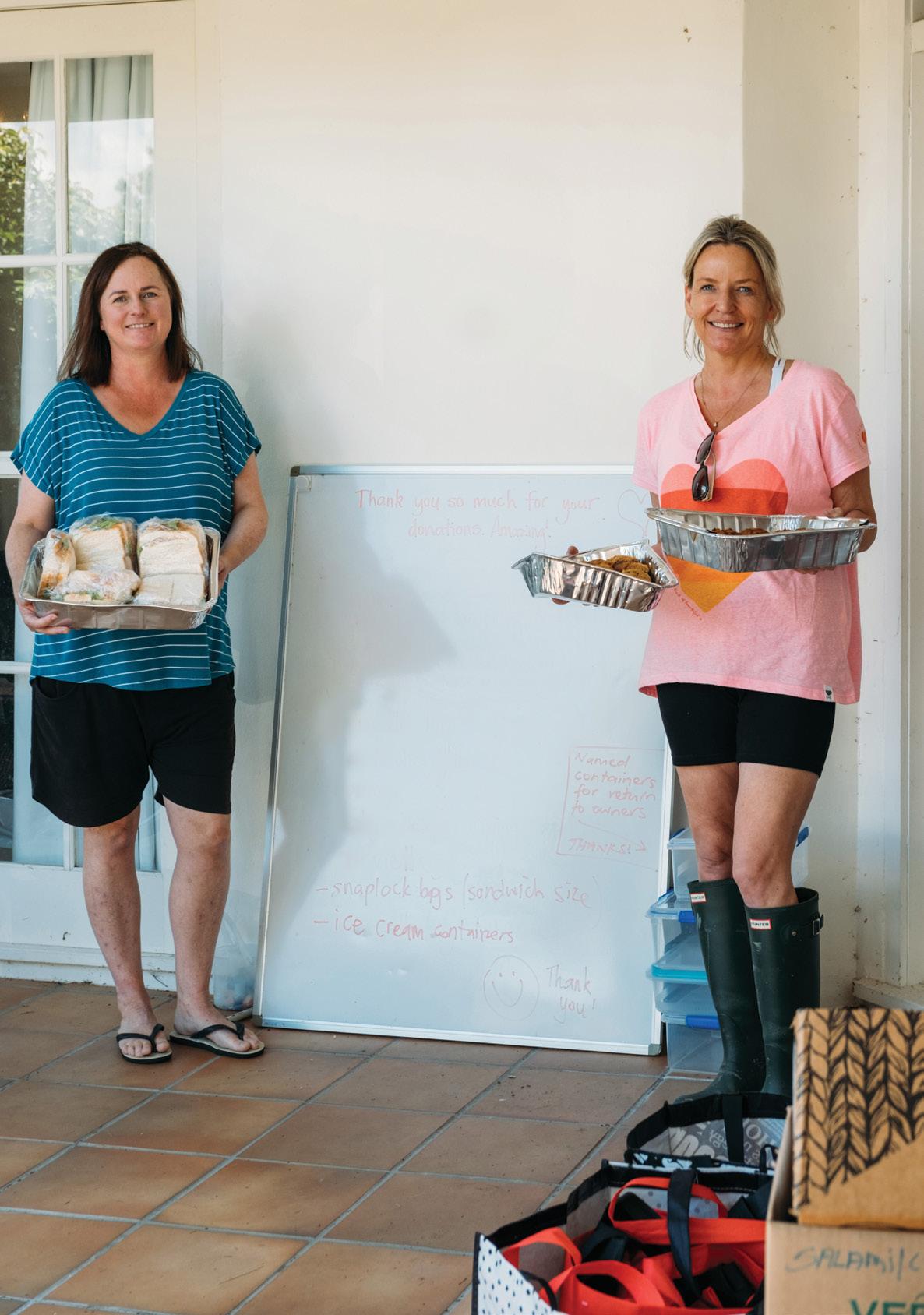
Digging and dragging and clearing. Searching and guarding and caring, cooking and sorting and baking. And more baking. Calling, donating, delivering, supporting, laundering and childminding. And smiling. Through wet eyes, the smiles. Here are some of the scenes captured by BayBuzz lead photographer Florence Charvin around the region in the fortnight following Gabrielle. There is of course, no way to hold the mighty response completely in one collection of photos. But we hope these pages will help us to celebrate and remember the sense of hope and help in the aftermath. Beauty amidst the bewilderment. Kindness within the carnage. Strength with softness, and unity at a time of such destruction and separation. Big heart, Hawke’s Bay.
Photos by Florence Charvin
Words by Lizzie Russell
8 BAYBUZZ March + April 2023
ESSAY
PHOTO

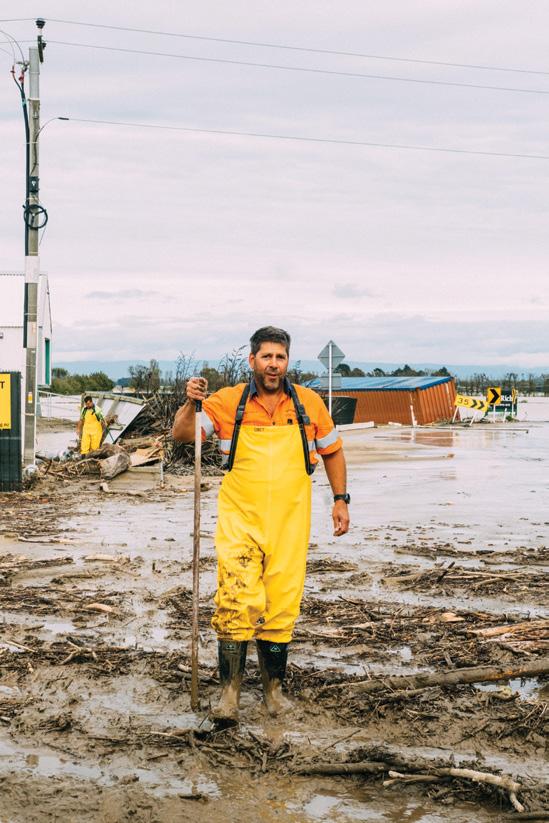

March + April 2023 BAYBUZZ 9
OPPOSITE PAGE: Christina (left) set up a fresh food donation hub at her home in Havelock North. Her phone doesn’t stop beeping. Volunteer Leah (right) has just returned from delivering some of the donated food parcels and hot meals. Enough kai to feed about 700 people was sent out this morning.
ABOVE: Clean up crews in Pakowhai and Puketapu.
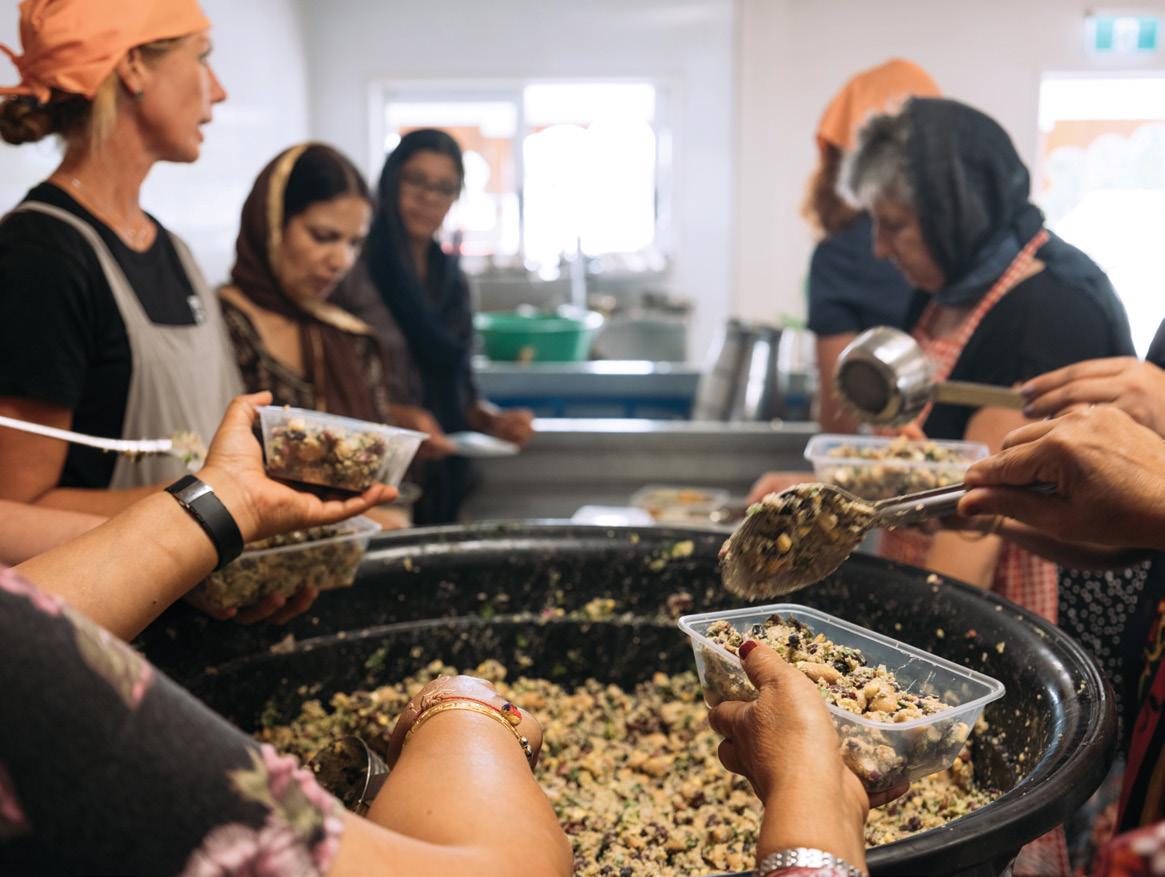
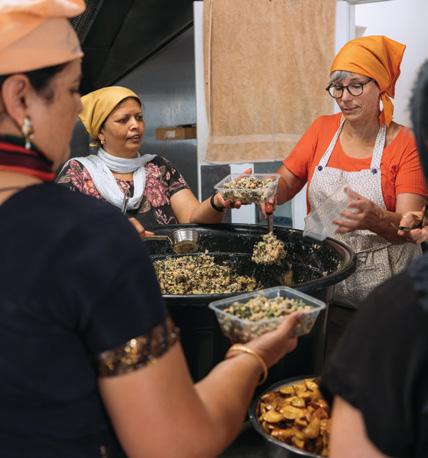

10 BAYBUZZ March + April 2023
ABOVE: Volunteers (led by Lynore and Leonie) cook plant-based meals at Guru Ravidass Sikh temple.
RIGHT: Puketapu school principal, Chris Fox, coordinating community aid from his school hall.
OPPOSITE PAGE: RSE worker cleaning up an orchard.
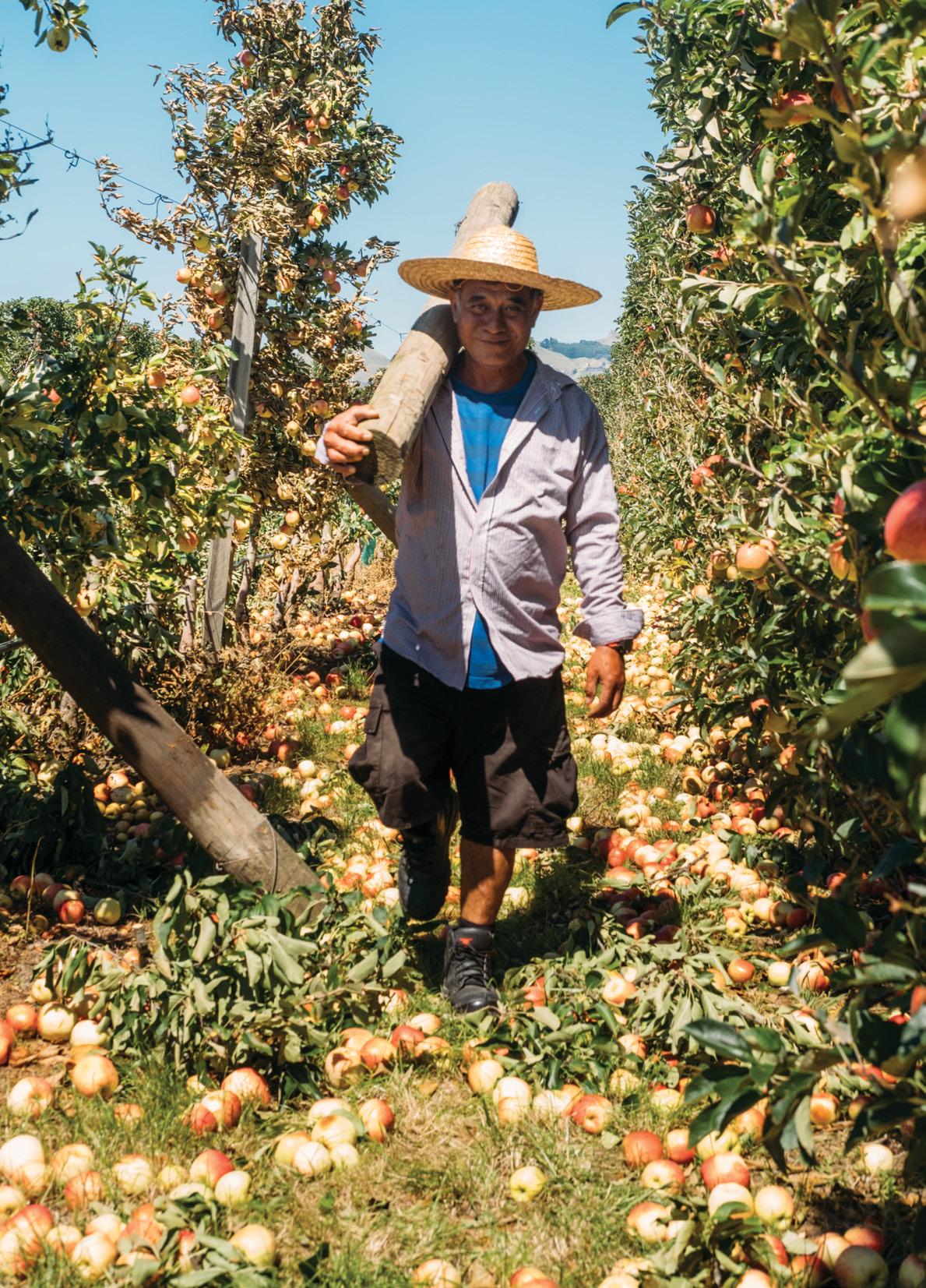
March + April 2023 BAYBUZZ 11
Hastings Racecourse was the home of the HUHA temporary animal evacuation shelter for pets and livestock displaced. The HUHA team of volunteers and vets ensured all animals were fed, warm and in good health as well as coordinating the huge amount of donated goods to be distributed to communities and families in need. Use of the space was generously donated by Hawke’s Bay Racing.

ABOVE: Volunteer dog walkers.
RIGHT: Debbie, HUHA equine.
BELOW: So many salt-of-the-earth volunteers turned up for the rural clean-up; like Syd, who travelled the region repairing tractors where ever they may be, and Logan, pictured with his 4WD.
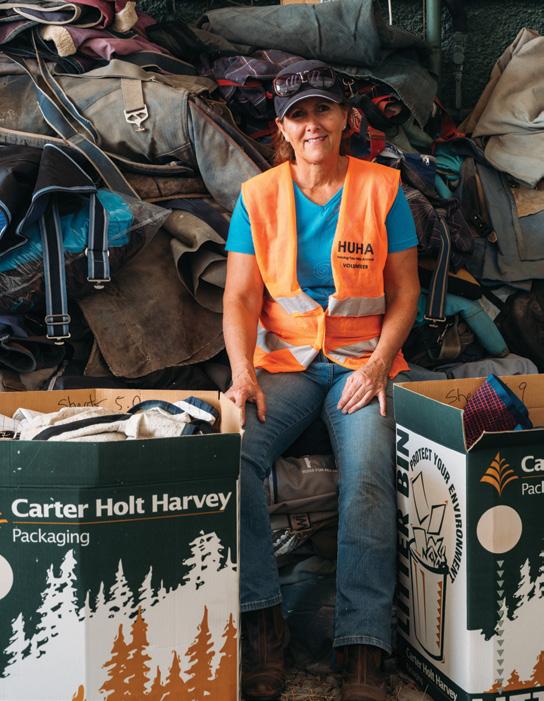

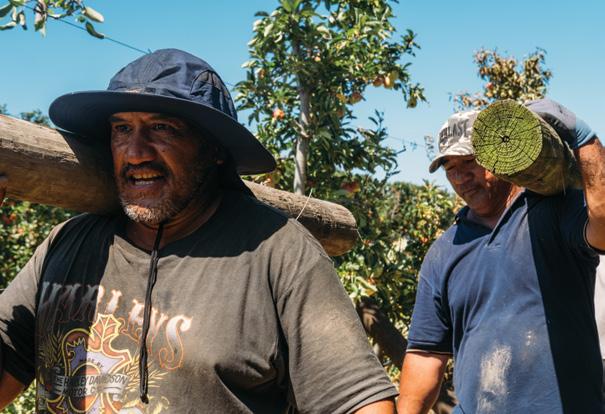
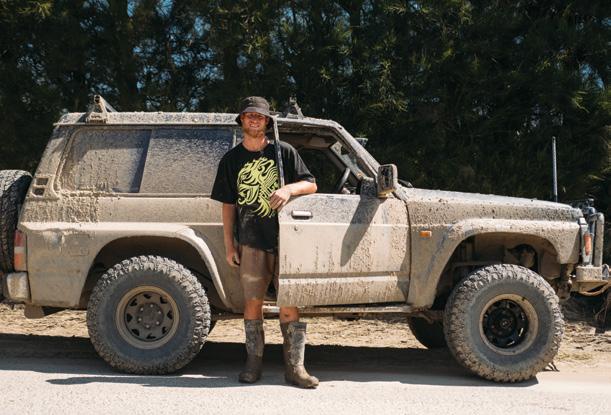
12 BAYBUZZ March + April 2023





March + April 2023 BAYBUZZ 13
TOP: HUHA’s Mandy and Carolyn with black lab, Coco. These three are based in Wellington, and came straight to Hawke’s Bay from setting up a similar shelter in Auckland after the floods.
ABOVE: Mucking in at Joll Road. Linesman Dan repairing hot water area faults in Napier. Army reinforcements to support locals in 'the trenches'.
BELOW: The women behind Cyclone Hawke's Bay Help – an online directory designed to consolidate the overwhelming amount of information out there and provide a starting point for people who want to help. L-R: Jess, Chloe, Georgie, Jo. Hawke's Bay A&P Society General Manger, Elisha, with the Commander of the Southern Pacific Fleet, Major Keith Millar.

BOTTOM: Volunteers Roy and Veronica with Nadine, founder of Re-Source.
Re-Source coordinated over 100 volunteers a day to sort and process 78,000 donated goods, and ensure the right relief supplies got to the people that desperately needed them.


14 BAYBUZZ March + April 2023



March + April 2023 BAYBUZZ 15
Here in Hawke’s Bay we tended to take Fane Flaws for granted. He came to every art gallery opening, he turned up at parties (sometimes he was even invited!), he supported other people’s shows, he got involved in events and happenings, he hung out at our local and pulled his band together for gigs at the Cabana. Everybody loved him. He was one of us. He was a constant. His artworks – tiki, heart, bird, vase – are part of our Hawke’s Bay aesthetic, like a Trubridge lightshade and a Terstappen in the garden. When he died in 2021, there was so much love for him left hanging in the air that it took a while to realise he was actually gone. There was so much of him left on our walls, in our homes, in our memories. What many may not have known about Fane Flaws was what a titan he was in the commercial arts sector. He was a skilled auteur, designer and deviser,
illustrator and typographist. He had whole careers in advertising, music video production, television, before he landed back in Napier. In the months since Flaws died, MTG curator Toni MacKinnon has explored these other lives, the sides of Flaws that focused on professional production. Many in the Bay had a personal friendship with Flaws and loved his work as part of our love for him; MacKinnon and MTG want to remind us that he was also an accomplished professional mark maker. To us here he was Fane our friend, Renaissance man and bon vivant but for the rest of the country Flaws was a pivotal character in the forming of our cultural and creative fabric. Making his Mark: The Work of Fane Flaws opens at MTG on 11 March 2023.

16 BAYBUZZ March + April 2023 The
Buzz / Jess Soutar Barron
Photo: Brian Culy
Antique Roadshow’s Marc Allum visits the Bay

The Arts Society Hawke’s Bay had a bumpy time through the Covid era, with the difficulties of bringing speakers into New Zealand, but the 2023 schedule for visiting speakers and experts is set, and looks sharp. Becoming a member now would be wise as the first speaker, here in March, is the UK’s popular Antiques Roadshow presenter, valuer and arts journalist, Marc Allum. Marc’s two events at the Havelock North Function Centre promise to appeal to collectors and lovers of material culture, art, curiosities and history:
Sunday, March 19 at 1:30pm
The Anatomy of Collecting & Bring an Object
A fascinating time-line talk focusing on why we collect and how our predilection for collecting has evolved through history, illustrated with examples from the great historical collectors and illuminated with objects from Marc’s own eclectic collection. This flows into one of Marc’s most popular formats – a spontaneous talk using objects brought in by the audience to form an instant ‘Antiques Roadshow’ of history, anecdotes and audience involvement.
Monday, March 20 at 7pm Fakes and Forgeries
Marc has long been a collector of interesting and historical fakes and this talk centres on man’s age-old fascination with faking and forging. Citing some of the greatest exponents of the craft and illustrated with a plethora of challenging examples, you are certain to never look at art antiques in the same way again!
To learn more about Marc Allum’s visit, other visiting speakers coming in from the UK, Australia and around New Zealand, and/ or joining the Society, visit the website theartssociety.org.nz or email hawkesbay@theartssociety.org
AN INSIDER’S GUIDE TO DENTISTRY WITH WYNTON PERROTT

Dental Implants What you need to know
Dental implants have been around for a long time in dentistry. Today, they are still considered an optimal option for replacement of missing teeth.
THE REAL DENTAL BENEFITS OF IMPLANTS ARE:
• Looks and feels like a real tooth
• Very stable, can be used for chewing just like a real tooth
• Long term solution
• Conservative treatment as adjacent teeth are not altered
• Can be used for single tooth or multiple tooth replacement
An initial assessment is needed with your dental professional. This will ensure that you have adequate bone support to have a dental implant.
The dental implant can then be placed under local anaesthetic and not long after, you will have a natural looking tooth in your smile.
92 Te Mata Road, Havelock North
March + April 2023 BAYBUZZ 17
The Buzz / Lizzie Russell
Mark Allum
877 7278 | smilehaus.nz
Story by Tess Redgrave
Photo by Florence Charvin
GRATEFUL
“arrangements concluded” – when he looked at weather maps and could see Cyclone Gabrielle was going “to be big”.
looks like the Somme. It’s apocalyptic’.
Paul Paynter quotes German philosopher Arthur Schopenhauer as we sit at the table in his Yummy Fruit meeting room in St Georges Road South reflecting on the aftermath of Cyclone Gabrielle.
“I think that our lives are not supposed to go well all the time,” he says expanding on the idea behind the famous philosopher’s quote. “Our lives are not pointless, and neither are our tragedies. If you don’t believe that then it’s too easy to give yourself up to nihilism and despair.
“There is more love and kinder people when the road is hard.”
It is 2lst of February, a beating hot blue-sky day and eight days since the cyclone ravaged Hawke’s Bay and caused mayhem and destruction to the orchard empire Paul’s grandfather founded in 1904.
“There is much for me to be grateful for today,” he says. “I’m poorer (15 of his orchards were swamped in more than two metres of water, 17% of his trees have been immediately wiped out, his apple crop available for harvest is down 35%) and I’ve got plenty of work to do and things to think about. But most importantly no one has died. Our 22 RSE workers were rescued and are safe, and the company’s total staff of 480 are all okay, too.”
Paul was on his way back to New Zealand from the Berlin Fruit Trade Fair – the first time he’d been to it since Covid in 2019 and with some
When he flew into Auckland on the Monday, domestic flights were cancelled. “I don’t know why. I don’t like flying but I was prepared to fly, the weather wasn’t terrible.”
He got stuck in an airport hotel for two nights and then diverted to Palmerston North.
By the time he got home his tally of orchards had become a tale of two worlds: Trees south of the Ngaruroro River were bursting with shiny fruit and, in fact as we speak, Yummy Fruit has just sent 47 pallets of apples out to the domestic market.
By contrast, over on Yummy Fruit’s Pakowhai, Meeanee and Eskdale orchards it was a story of loss: Fifteen tractors rendered useless, irrigation pipes disappeared, rich soil, trees and crops gone.
“We’ve got some real issues with the silt,” he says. “Some of it is very fine and has become a muddy slurry.
“All of HB was formed by this river silt,” he points out, “but it takes 50 -100 years, even better, 200 years, to create good soil that is fully developed and has oxygen in it. There is so much life in soil even though we can’t see it.
“But this silt from Cyclone Gabrielle has literally drowned the soil. It has lost its microbial content. Trees will suffocate in it,” he says.
“So a lot of the trees that look ok now won’t be in three months, especially if they are subject to heat.”
Paul doesn’t think it’s worth even trying to remove the silt at his Eskdale properties. He’s been out there and as Prime Minister Chris Hipkins says, ‘It
“We won’t recover anything out there – it’s shut the gate. In Meeanee we’re trying to recover the crop. There we had surface water but not into the tree canopy.”
Paul paid his entire staff the week after the cyclone. “The payroll administrator, trapped with no power or phone, drove across town to get Wi-Fi and ran the payroll off her laptop. She was a hero. But how many weeks can I do that and pay staff for doing things that are not generating money? We need a wage subsidy as soon as possible.”
“The issue for growers,” he says, “is that many have lost their income for this year and if the trees die, their income for the next five years. Also, if they lose all the value of those productive assets then even their land may be worth a lot less than it was two weeks ago. So financially they are crippled. The banks will fund the harvest but won’t be keen to provide cash for anything else. Their security is now uncertain too. Without some government assistance there will be a lot of suffering.
“I’m just wounded while others are destroyed.
“We will downsize significantly or find some new investors or something so this is an inverse lottery win for us and it feels unjust. But as I see it I’ve got two options: I can be grateful for what I do have or I can become bitter and resentful.
“With these events, like the Christchurch earthquake, there’s a huge sense of injustice. Here I have a beautiful block of trees, the sun’s shining through them and they couldn’t look better, yet a short distance away
18 BAYBUZZ March + April 2023
“If the immediate and direct purpose of our life is not suffering, then our existence is the most ill-adapted to its purpose in the world.”
Paul Paynter reflects on ‘being grateful’ in Gabrielle’s aftermath
you’ve got people who have lost their homes and orchards and been lucky to escape with their lives.

“I don’t feel poorer than I was last week, even though I am. Today I’ve got less and I’m not sure I needed it all anyway. If I lost it all I’d write that epic novel we all have planned. All of this stops me being who I want to be … so I’d be
free. And maybe I am a little freer than I was, less burdened by possessions.
“I do a bit of plant breeding in my spare time, and I might have time to do more. It is glorious, it’s the thing that makes me happiest.”
Paul says people’s emotional shock absorbers are worn out. “They’re really struggling. So, trying to stay positive
and refusing to let yourself feel pity, resentment, is important.
“Because I am a borderline creative, I have a perpetually gloomy soul, but the cure to all that I have discovered is to be enduringly grateful and refuse to be anything else.
“I think we need to be grateful for all our days, even the bad ones.”
March + April 2023 BAYBUZZ 19
NAPIER-HASTINGS FERRY
McLEAN PARK
Illustration: Brett Monteith
BUILD, BABY, BUILD...
As AUT Chancellor Rob Campbell wrote recently in Newsroom:
“Obviously we currently have to do a lot of repair jobs, across many sectors, arising both from current destruction and from past neglect. But let’s not confuse that with letting the bigger, tough, but ultimately defining issues stand aside. They start with more ‘why’, ‘what for’, ‘what if’ than the ‘build, baby, build’ brigade would like.”
As he notes, most of the discussion of how to respond will be driven by the interests who “delivered the infrastructure we have now. They planned, engineered, built and maintained the roads, buildings, bridges and connections that we have now. If only we give them more money to do more it will all be okay? You reckon?”
As the ‘how to respond’ debate unfolds, some like Campbell will raise fundamental questions about the kind of growth we actually should aspire to, which old paradigms to abandon, and whether our elected governors are able to provide leadership and make the difficult but foresightful decisions that best secure a sustainable environmental and economic future.
Others, many with their hands on the actual levers of response, will simply fall back to the classic infrastructure mantra: ‘patch, repair, upgrade’. This approach got us where we are, and is especially the default approach in areas like Hawke’s Bay, where small rate bases and large spaces create “a strong requirement to ‘make the best’ of any infrastructure that is put in place,” as AUT (School of Future Environments) Professor John Tookey puts it. Roads are patched, repaired or upgraded. They are only very rarely replaced. The same is true of water supplies,
"Roads are patched, repaired or upgraded. They are only very rarely replaced. The same is true of water supplies, bridges, drains, stormwater systems."
John Tookey, AUT School of Future Environments
bridges, drains, stormwater systems. That fairly describes our Hawke’s Bay situation.
Let’s look at some specifics and then the bigger picture, which is about more than fixing infrastructure.
Flood control
A 2018 review by NZ Rivers Group of Hawke’s Bay flood protection schemes, as part of a national review, estimated a net present value benefit of over $28.8 billion.
The largest component of our regional flood control is the Heretaunga Plains Flood Control and Drainage Scheme which protects Napier and Hastings cities and the highly productive land in their vicinity – 157 kilometres of stop banks, with a replacement value of $152 million, costing $7.5 million annually to operation. (Data in this section from HBRC current Long Term Plan.)
But as the 2021-31 LTP stated: “The flood control schemes have substantially reduced the incidence of major flooding in Hawke’s Bay. As a result, many of the Hawke’s Bay public and businesses have little or no knowledge of the potential impact of a major flood on them and are not well prepared for the consequences should a major flood occur.”
HBRC actually modelled the economic losses that would occur with three major stop bank breaches at Roy’s Hill on the Ngaruroro River, Taradale and Moteo on the Tūtaekurī River within the Heretaunga Plains.
The table below summarises potential breach economic impacts CPI (Consumer Price Index) adjusted to 2020.
Unfortunately, we are now about to test the real world accuracy of such estimates!
100-year return flood beach impacts Direct industry production losses Total Hawke's Bay-wide GDP/value added economic impact losses Net present value/ discounted annualised value of these impacts Roy's Hill on the Ngaruroro River $546 million $613 million $46.1 million Taradale on the Tūtaekurī River within the Heretaunga Plains $415.3 million $369.8 million $27.7 million Moteo on the Tūtaekurī River within the Heretaunga Plains $28.4 million $37 million $2.8 million
... is not the answer to recovering from Cyclone Gabrielle and planning our future.
March + April 2023 BAYBUZZ 21
Tom Belford
That work was only completed a few months ago on the Taradale [stopbank] stretch, notes HBRC Councillor Neil Kirton, and if it had not been done, “much of Taradale would now be in the ocean,” he says.
‘spongy’ cities/areas (less hard surface, more wetlands), etc.
No one is suggesting walking away from the enormous ‘sunk investments’ already made in our low-lying lands. Says Kirton: “We’re here. We want to stay. But we need to pay the price.” Both Barker and Kirton insist we must stop making stupid decisions about the future.
And these decisions appear dumber and dumber as councils race to build housing in known flood plains, Napier’s Te Awa area perhaps the most obvious example, but perhaps topped by Ngāti Kahungunu’s proposal to build 600 more homes nearby.
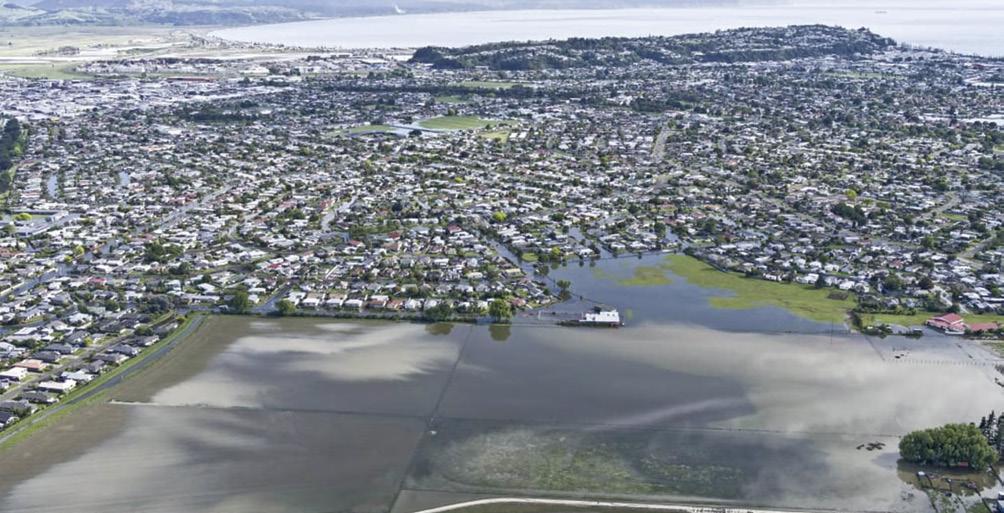
To its credit HBRC, looking ahead at climate change, consulted and received endorsement for raising the stop banks in anticipation of more intense climate-induced rainfall events – aiming for security from a 500 year event instead of the existing 100 year event protection.
That work was only completed a few months ago on the Taradale stretch, notes HBRC Councillor Neil Kirton, and if it had not been done, “much of Taradale would now be in the ocean,” he says.
But this rebuild, begun in 2020, has been too slow in coming and Kirton wonders if the $20 million project would have been untaken if the Government had not provided $12.8 million of the funding as one of its Covid ‘shovel ready’ projects.
Kirton notes that even with the uplift, stop banks were over-topped, questioning “now what?” These protections cannot simply keep going higher, a point echoed by former HBRC Councillor and Chair Rick Barker.
Both agree Plains protection – and in fact all flood control – will need a strategic re-think, starting with where people are allowed to live and including what land uses should occur in protected areas. And looking at more extensive drainage infrastructure,
Of course, it is our councils who decide where people live and development can occur. And these decisions appear dumber and dumber as councils race to build housing in known flood plains, Napier’s Te Awa area perhaps the most obvious example, but perhaps topped by Ngāti Kahungunu’s proposal to build 600 more homes nearby.
In 2008 I wrote a satirical BayBuzz article about a (fantasy) ‘Growing Under Water’ (GUW) strategy being hatched for Te Awa at NCC:“GUW envisions a partially submerged residential development with homes connected by meandering canals. Residents would leave their cars at the edge of the development, and use personal gondolas to pole around within the complex. Deluxe homes would have underwater viewing rooms to watch sea life purpose-bred for a life of entertainment in the complex by a rejuvenated Marineland.
“Planners are dripping with excitement over the sustainability benefits of this approach — no carbon footprint within the village, a new lease on life for Marineland, and an estimated 175 new jobs for gondoliers, marine biologists, hydraulic engineers, water-proofing contractors and pump repair mechanics.”
We followed NCC’s progress with building homes below sea level with a
2011 article (also satirical) titled: City
Under the Sea. It featured the illustration that we’ve recycled to open this article, which now deals with the real world, with hundreds of homes built in Te Awa in the meantime.
While it might be unfair to fault development and land use decisions made decades ago, when we still thought we could outmanoeuvre Mother Nature, there’s been no excuse in the last 30 years for knowingly putting people’s homes, lives and livelihoods at risk.
And even less excuse for continue doing so.
Power
Our region’s elected officials have some say over managing our water. They have no say over managing our power (although the HB Power Consumers Trust does get to hand out a yearly dividend, which hardly constitutes oversight).
Power management lies with our region’s electricity distributor, Unison, and its supplier, Transpower.
As we now know all too well, a critical node in that system is the Redclyffe substation, a so-called Grid Exit Point (GXP) owned by Transpower. It sits
22 BAYBUZZ March + April 2023
Te Awa flooding, November 2020
astride the Tutaekuri River, in the Waiohiki area, protected by a stop bank … or so everyone thought.
At this substation (as with Fernhill and Whakatū), Transpower hands-off about 30% of our incoming electricity to Unison, whose substations and grid network then distribute it to our homes and businesses throughout the Hastings district and Napier.
When Redclyffe was planned and built in 1927, we didn’t yet have global warming deniers. We did have floods, so the facility was built to withstand a 1 in 100 year flood. One would have imagined that over the years power planners have cogitated over ways of mitigating the risk of this location, from re-location to additional bunds around the site to installing redundant
pathways for their electricity to be routed into the area.
In 2020 Trustpower did undertake a ‘desktop’ review of the flood risks to its infrastructure around the country, now with climate change entering the equation.
The review identified Redclyffe as a risk facility and Transpower began planning mitigation measures for a dozen such locations, with work to occur in the 2025-2030 time frame. It needs permission from the Commerce Commission to spend the estimated $109 million required. So, plans on a shelf. Reporter Tom Pullar-Strecker has detailed all this in an excellent 16 Feb Stuff article
For now, with the ‘water over the stop bank’, Transpower is left with
The review identified Redclyffe as a risk facility and Transpower began planning mitigation measures for a dozen such locations, with work to occur in the 2025-2030 time frame. It needs permission from the Commerce Commission to spend the estimated $109 million required.

clean-up and band aids, and owes Hawke’s Bay a huge apology.
In the days after the cyclone struck, it must be said that Transpower and Unison frontline workers strove mightily in very dangerous conditions to sort the problem and build the needed work-arounds.
How prepared were Unison planners?

Unison prepares comprehensive Asset Management planning documents, which include Risk Assessment. In its latest risk discussion for Hawke’s Bay, Unison focuses on potential earthquake, tsunami and volcanic ash. Listed in the ‘Other’ category are major storm events including cyclones, and flooding.
Unison notes: “…it is recognised from studies of major mishaps around

In death as in life we can express ourselves authentically. Tong & Peryer’s family care team are there to support you in whatever form of care you choose to honour the person who has died and to respect the needs of the living. March + April 2023 BAYBUZZ 23
To honour. To remember. To heal.
www.tnphb.co.nz
the world, e.g. Three Mile Island USA, that Unison needs to protect itself from a combination of unforeseen design, operational and asset management decisions, which can combine in an obscure manner and lead to a major incident and prolonged outages.”
Reflecting this, in 2019 Unison had commissioned an independent resilience report to determine how well Unison, as a ‘Lifeline Utility’, was prepared to cope with natural disasters, such as major earthquakes and extreme weather, and significant network and system failures.
The report noted good progress with aspects of risk reduction, such as seismic strengthening and the provision of an Alternative Operations Centre in which to base a disaster recovery response. It also identified a “lack of documentation detailing network vulnerability studies that quantified the potential impact on the network of various extreme event scenarios or major asset and asset system failures.” This was signalled as the main area for improvement.
An updated Unison 2022-32 Asset Management Plan reports:
“… Unison is undertaking a Capability Project to better understand the vulnerability of its network to extreme events. The objective of this project is to develop a sustainable, network vulnerability assessment model that can be used to quantify the potential damage of various “extreme events” on Unison’s assets and asset systems and the likely consequences of this damage, focused predominantly on Unison’s ability to supply its customers. The project is progressing, and a “proof of concept”, Hawke’s Bay earthquake scenario was selected to initially develop the model’s required functionality and outputs. Once the model’s outputs have been identified and validated, additional scenarios will be incorporated.”
Unfortunately, an analysis that is a bit behind the curve. That said, might a ‘Cyclone Gabrielle’ scenario provide better ‘real-world’ data for this exercise?
Now what – recovery, then re-set
The Government has announced its structure – the Cabinet-level committee Extreme Weather Recovery Committee – and initial funding of $300 million for addressing Cyclone Gabrielle recovery, with more to come. Minister Stuart Nash has been designated as ‘Ministerial lead’ for our region, with MP and Associate Agriculture Minister

Climate scientists warn that each 1-degree centigrade rise in the global temperature adds 7% more water to the atmosphere ... and it will fall with intensity. It would appear we must refresh our models if they are to be used for serious future planning!
the nation. In the present situation, he warns against “rear view mirror” planning, a habit he sees ingrained in governmental bureaucracies at all levels (as well as most elected officials). ‘We’ll do what we’ve done before, only better.’
Meka Whaitiri playing a key role in the agricultural recovery.
But this is focused on picking up the pieces and restoring basic service functionality.
It is not yet clear what the ‘re-set’ process with look like, once national and local decisionmakers begin to face our long-term climate change future. And locally, it’s not readily apparent where ‘break from the past’, paradigm-busting thinking will come from … not likely from council bureaucracies.
The re-set process, as we cited AUT Chancellor Rob Campbell opening this analysis, cannot be built around old paradigms.
Rick Barker as MP held the Civil Defence Ministerial portfolio from 2005-08, when central government first set about upgrading and making consistent civil defence planning across
Linked to this, he warns against misjudging the scale, pace (“it’s geometric”) and nature of change our future planning must anticipate. “We need to make a quantum leap in our planning,” necessitated by climate change. Planning predicated upon past experience he likens to “walking into a casino and placing our entire life savings on Red-7!”
Along the same lines, Mayor Alex Walker says the region will need “brave decision-making”. Mayor Sandra Hazlehurst says we need a deep community discussion about risk. Walker commented to BayBuzz, “We need to accelerate big picture, inter-generational thinking” about the future direction of Hawke’s Bay.”
In practical terms, what might this mean?
For starters, Barker, whose fervent about climate change, would throw out the window all the old ‘1 in 100 year’ assumptions. The very assumptions presently made by experts from Transpower to NIWA.
For example, take the NIWA report on projected climate change impacts
Photo: NZ Defence Force
24 BAYBUZZ March + April 2023
for Hawke’s Bay and Tairāwhiti, prepared in 2020. This included projections of rainfall events throughout the region in ‘mid-century’ (2031-2050).
For example, at Glengarry in Napier, for 100-year events, the average rainfall in 12-hours was projected to rise from a historical 176 mm in 12-hour event and 244mm in 24-hour event to 189mm and 260mm respectively in ‘mid-century’. With a maximum 5-day rainfall across the year averaging 144.8mm.
Cyclone Gabrielle makes those projections seem absurd. Numerous measures throughout most-affected parts of the region showed 12-hour rainfall exceeding 500, 600 and even 700mm.
Climate scientists warn that each 1-degree centigrade rise in the global temperature adds 7% more water to the atmosphere … and it will fall with intensity. It would appear we must refresh our models if they are to be used for serious future planning!
More accurate, future-focused science aside, another essential planning goal must be redundancy. We simply cannot be so reliant on stop banks (our major Red-7 bet), any single power station … or even on one mode of communication!
If the bulk of our region’s population and production is to live on low-lying land, we must plan a far more comprehensive network for channelling and pumping storm-inflicted water to the sea, lessen our urban non-permeable surfaces (more urban ‘sponges’/ wetlands) and hugely importantly, support more ambitious initiatives for holding soil, silt and water in place –out of our streams and rivers – in our river catchments.
As for power redundancy, Unison’s ten-year asset management plans show hundreds of upgrade and maintenance projects – across the cost spectrum – on the drawing boards. Many of these relate to improving connectivity amongst the various nodes in the system, precisely to move electricity around the region in case of more localised power failures.
As noted earlier, Unison crews worked hard on the ground to establish emergency work-arounds to accomplish this. We might expect Unison execs to take a fresh look at their prioritising of redundancy projects … their pace and funding levels. Perhaps we need to sacrifice a few years of our treasured dividend payments from the HB Power Consumers Trust!
As for communications redundancy, no one has been able to justify this
nation’s lack of an Emergency Radio Network to communicate to the public in disasters like Cyclone Gabrielle. Personally, I just assumed that all nations on the planet had such a rudimentary tool. Not us, our (another) Red-7 bet is placed entirely on mobile communications and the internet. Visit the national civil defence website – getready.govt.nz – to see how ludicrously unready we are to communicate in an emergency. I’m sure you’ve all heard of ‘Emergency Mobile Alerts’ (a service available on some mobile phones, and no landlines). Here’s their Q&A response to loss of phone towers or power: “Emergency Mobile Alert may not work if mobile phone towers are damaged or if there is a power outage. For this reason, you must also rely on other information sources.” As we now know, good luck with that!
Congratulations to all our school leaders across Hawke’s Bay
You are standing proud for your peers and for the future of our region.
You have started your year of leadership at a time in our history where school life, your learning environment and how you keep connected with friends and teachers has certainly changed from when you began in Year 9. Who would have imagined that mask wearing would basically become part of the uniform, and yet as young people always do, you rise the challenge, adapt and make the most of technology to also teach us a thing or two!
In a sense, building in redundancy, while imperative, is still somewhat of a band-aid solution to addressing future need.
A more fundamental response must include discussion and decisions around spatial planning for the region – what activities, homes, infrastruc ture will be permitted where? – and ultimately, diversification – how can we lessen our dependency on weath er-critical economic activity?
With five daughters who, like me have grown up and gone to school here, I am forever learning more by listening to the younger generation’s ideas for a better world, for Climate Change, for wellbeing. I know you will keep making the most of every opportunity ahead now and as you continue on your own journey for lifetime success. Keep flying high.
Anna Lorck
Your local MP for Tukituki


Follow
These are huge topics to be explored in future BayBuzz articles.
The Government is requiring regional spatial plans in the future and our mayors insist to a person that they will deliver one. Will it restrict building homes in flood plains? Even if they’re to be built by iwi for low-income families? What about the hundreds already there? Watch this highly political space!
Diversifying our regional economy should fall in the bailiwick of our new Regional Economic Development Agency, just getting off the ground.
Scales Corp, owner of major grower Mr Apple (which just had 28% of its land damaged), recently announced it was shifting its investment focus to ‘global protein’. Managing director Andy Borland reassures that the decision was not a move away from horticulture and the company remained committed to the division: “It’s not about exiting, it’s just about prioritising our investment and where the best opportunities are at the moment.”
What other agribiz investment decisions might/should be re-prioritised?
Another critical space to watch as we plan for the new normal.
Authorised by Anna Lorck MP, 129 Queen Street East, Hastings
me on Facebook: /AnnaLorckMP
870 1470 anna.lorck@parliament.govt.nz
06
06 8 70 1470 anna.lorckMP@parliament.govt.nz
my Facebook:
Tukituki MP Anna Lorck with Youth MP and former Karamu High School student Keelan Heesterman.
Follow
localcommunities, pleasegetin touchtoorganise avisitorbookan appointmentatmy office.”
Your local
“I’moutmeetingwith
Anna Lorck
MP for Tukituki Working foryou
March + April 2023 BAYBUZZ 25
Authorised by Anna Lorck MP, 125 Queen St East Hastings
 Puketapu Bridge washed out. Photo: Patrick O'Sullivan
Story by Bonnie Flaws
Puketapu Bridge washed out. Photo: Patrick O'Sullivan
Story by Bonnie Flaws
WHERE TO NOW?
Hawke’s Bay in the slash enquiry he announced 10 days after the cyclone was immediately criticised, as was the question of why it took a storm of such force to get it done.
productive area, then the consequences are far reaching and significant. You can spend a little bit of time reflecting on that but only a little bit of time. Because then you’ve got to really hit the ground running and you’ve got to start the recovery phase.”
Napier MP Stuart Nash is at the eye of the political storm when it comes to the recovery and rebuild of Hawke’s Bay in the aftermath of Cyclone Gabrielle.
Along with his responsibilities to the people of Napier, he is Minister for Economic Development, Policing and Forestry – each portfolio has come into focus these last weeks, as the damage to Hawke’s Bay’s critical infrastructure is assessed and plans for the recovery get underway.
Similarly, as Police Minister he has had to respond to the unfortunate looting that’s been taking place – an unforgivable insult to a people already suffering so much – and address the fact that residents have been feeling exceptionally vulnerable to this exploitation.
There’s no question he is under pressure to perform and get things right. The court of public opinion is wobbly though, and his decision not to include
We can expect the outcome of that enquiry in April. Nash says it will inform the government’s wider response to the extreme weather events seen across the country.
I sat down with him to find out how he's approaching what must be his biggest challenge as a leader yet – the region’s material and economic recovery post-Gabrielle and the opportunities for diversified economic development.
Turning attention to recovery
Nash is the regional lead for Hawke’s Bay on the response and recovery cabinet committee assembled by the Prime Minister, and he’s adamant that things are going to happen very quickly. An event the magnitude of Cyclone Gabrielle hasn’t been seen in the Bay for a very long time, he says.
“Unlike Christchurch where commerce was able to continue pretty soon after the earthquake because businesses were able to relocate, when you take out a decent chunk of the region’s
This is what he’s spending all his time on at the moment. Ministerial leads have been instructed that the recovery will be tailored and unique to each region rather than a one-size-fitsall approach, and Nash’s first task is to assemble his team and set an order of priorities. This will happen under the auspices of a new Hawke’s Bay Regional Recovery Agency.
“I haven’t got all the answers. I need to get a whole lot of really good people around me who do have the answers, who are experts in certain areas. I have to put a CEO and delivery board in place, and make sure that we have a process where all the mayors and elected representatives and iwi feed in to everything that’s going on and have ownership of the recovery and the build-back.”
The delivery board will include experts in RMA law, construction, infrastructure, social services and horticulture, with each person either in or tied to Hawke’s Bay – the thinking being that if these people are in or are part of the region they will be wedded to its recovery.
March + April 2023 BAYBUZZ 27
We expect recovery agencyand leadership details to be announced by the time you are reading this article.
Urgent things would be addressed first – repairing stop banks, and getting basic infrastructure such as power, fibre and roads back up and running. We’ve already seen a lot of that done.
“There may well be some bandaids in the first instances – temporary patches for things like stop banks for the next three to six months, and then we do a longer-term fix over the next six to eighteen months.”
As well as stop banks, the integrity of Hawke’s Bay’s infrastructure will be looked at as a major priority. Again, temporary fixes may be a feature of

that just to get commerce and people moving, he says.
Long term resilience will be a major part of recovery planning as we move past that phase.
Hard conversations to come
The Regional Recovery Agency will then address the short, medium and long-term priorities, in consultation with the region and delivery board. Nash says there will be some “really, really hard conversations”, including whether or not people will be allowed to build back in the Esk Valley.
“There was a massive flood there in 1938. I’ve read the report, the silt was two meters high in some areas. We’ve
had that flood again. I’d like to think that is highly unusual and won’t happen again but none of us can say that, certainly with changing weather patterns.
And without pre-empting work the council may be doing in this area, Nash believes there is a need to cast a slightly different lens on decisions about housing developments, including whether we allow people to build back on flood plains, and whether we allow building on classes of land that were previously off limits, he says.
Another big question is what the region does with all the land that was highly productive prior to the storm, and now isn’t. The silt deposits that have landed across the region will need to be assessed, and calculations about how long it could take before they become productive again need to be done. “What are the costs of rehabilitating that land?” Nash asks.
These questions are of immediate consequence to those people whose property and homes were wiped out in the storm in places like Esk Valley and Puketapu, and who will be seeking insurance payouts in order to make decisions about their future.
“So, there are some very important decisions that we have to make to give people a lot more certainty than they have at the moment.”
Regional economic development post Gabrielle
The recently established Regional Economic Development Agency (REDA), chaired by Alastair McLeod, will be working very closely with the Recovery Agency’s delivery board, Nash says.
While the Recovery Agency’s main role is getting the resilience of the region’s infrastructure sorted, the REDA board’s mandate of economic diversification is even stronger, and takes on more importance in light of Gabrielle.
“I have always said our region is overly dependent on three variables we have no control over: exchange rates, weather and commodity pricing.”
The Bay has done extremely well in the last three years, particularly through Covid, with great summers, favourable exchange rates and decent commodity prices, and it had been a top economic performer when compared to other regions, he says.
“What we have now seen is one of those variables go horribly wrong in ways that we never anticipated, and it
Minister for Economic Development, Policing and Forestry, Stuart Nash.
28 BAYBUZZ March + April 2023
Photo: Florence Charvin
has just taken out a huge tract of our economic engine. We absolutely need to build that back but that cannot be the primary focus. Whilst the primary sector is a focus of the recovery agency, REDA must continue their focus of diversification of our region from an economic perspective.”
Nash believes that the region should look at avenues that can provide some competitive advantage.
Start-ups for example, can be based anywhere and incubator hubs are found in most big centres. They are one piece of the regional economy but Nash says with our high performing port and airport, which both have excellent governance teams, there might be opportunities in warehousing and logistics.
In his past, Nash traded in high volume, low margin commodities and recalls how holding stock in Auckland, depending on time frames, could be more or less affordable.
“Now, a company seeking to opti

stock you’ve got or to dispatch stock, and in fact you can be based literally anywhere in the world and understand what’s there up to the minute and what needs to be dispatched. There’s no reason we can’t be a logistics and warehousing hub for the central and lower North Island.”
Good infrastructure and roading would be a must for such an industry to take hold and given that Napier was an island for a period of time, building back must focus on the quality of the region’s infrastructure – hard and soft: roads, bridges, fibre and power. The substation that flooded at
I asked him if he was a supporter of the proposed film studios at Te Awanga. Nash had been briefed on it but had never spoken to the investors, or been asked for central government support. However, as economic development minister he had had responsibility for investing in film studios in Auckland, Wanaka and Queenstown.
“They are quite expensive to set up. So, I would have thought in order to justify that form of investment there would have to be some pretty solid commitments. To the investors behind it, more power to them. You don’t do that without some serious due diligence.”

Nash finished by underscoring his family’s long history in Napier and his commitment to Hawke’s Bay.
“I am an incredibly proud Hawke’s Bay boy and I love living here. One thing I am absolutely adamant about is that we will get things moving again as fast as we possibly can. You will not see inertia with committees set up and people talking without getting things done.
“I have always said our region is overly dependent on three variables we have no control over: exchange rates, weather and commodity pricing.”
IONIQ 5 Designed for beauty, but engineered for efficiency. BOOK YOUR TEST DRIVE, CONTACT US TODAY. Bayswater
www.bayswatervehicles.co.nz March + April 2023 BAYBUZZ 29
Stuart Nash
Hyundai Hastings: Paul Kerr - pkerr@bayswatervehicles.co.nz, Phone 021 226 8218 Bayswater Hyundai Napier: Keagan Govender - keagan@bayswatervehicles.co.nz, Phone 021 305 470

ARE WE GETTING ENOUGH
MENTAL HEALTH HELP?
Story by Tess Redgrave
Is our mental health system truly broken or is that an on-going trope we default to?
This question kept coming into my mind as I set out recently to do a health-check on Hawke’s Bay mental health services.
Late last year Opposition politicians lambasted the government’s Wellbeing Budget of 2019, which had set aside $1.9 billion to tend to New Zealanders’ mental wellbeing, as a huge waste of money, with 2021 Stats NZ data showing a significant increase in the proportion of people with poor mental wellbeing – up from 22% in 2018 to 28% in 2021. Alongside that, alarm was raised at mental health staff leaving their jobs in droves, creating an ever increasingly depleted and burnt out workforce.
“There is a lot of mental illness in our community and this is likely to
increase,” says retired Napier GP and Senior Medical Officer, Tim Bevin. He was recently awarded an Order of Merit for his work as a general practitioner for 30-odd years in Hawke’s Bay, and for his long-time involvement with our addictions treatment community.
“The load of uncertainty with mental health is greater than with most other medical conditions,” says Tim. “You can’t just do a blood test and say this is what we’ll do. It takes time and we need to give it that time.”
I began my story by getting some statistics from David Warrington, General Manager Mental Health and Addictions Group Hawke’s Bay. He confirmed that, “Recruitment remains a well-documented challenge across the health sector and Te Whatu Ora Hawke’s Bay
is actively working to recruit health workers into the region, including mental health professionals.”
His stats show that in all areas the numbers of mental health staff for HB falls short of the roles budgeted. For example, Te Whatu Ora has budgeted for 12.4 consultant psychiatrists and currently employs 8.4. So four vacancies for psychiatrists in our secondary services. And incidentally there appears to be no psychiatrists in private practice in HB. Te Whatu Ora is down 3.9 on budget for full-time psychologists and down a big 17.7 registered nurse vacancies to work in Mental Health and Addictions.
Current FTE for Hawke’s Bay Mental Health and Addictions in Hawke’s Bay is as below:
March + April 2023 BAYBUZZ 31
Profession Budget (FTE) Employed (FTE) Vacant (FTE) Consultant Psychiatrist 12.4 8.4 4 Psychologist 12.0 8.1 3.9 Registered Nurses 78.3 60.6 17.7
Photo by Florence Charvin
“Trauma is a big one.
guilty
have
taking a
approach
treating
“We form biases against people with a substance use disorder (SUD) and label them as hopeless, worthless and weak,” he says. “I always have a saying that the person is not the problem, the problem is the problem. We need to see people with a SUD as someone who has major trauma and the addiction aspect is a maladaptive coping strategy for survival. These judgements stop people accessing treatment or in some cases it creates professional biases where the individual does not receive the correct treatment.”
suicide prevention but as part of the first session all staff attend a one hour module called Aroā (Awareness).
“Often people become aware, maybe for the first time, of how to bank coping and prevention strategies for their on-going mental health and how to get support if they need it.
“The aim of Mates4Life is to create life-supporting workplaces and ultimately life-supporting communities.”
The serious patients
One person who sees the impact of depleted services on Hawke’s Bay’s mental health patients is Andrew McGarrol. He runs his own private counselling practice in Hastings (Nautical Counselling Ltd) and has had extensive experience as a clinical manager of several mental health and addiction services for DHBs and major addiction facilities in Hawke’s Bay. He is currently clinical director of Hastingsbased Ocean Hills private detox and rehabilitation addiction centre.
Andrew is often working with a very difficult portion of our mental health population – people with co-existing problems: serious mental health and addiction issues. His view is that our Secondary Mental Health Services for seriously ill patients is “run like a factory. Someone is seen but discharged very quickly.
“This is due to high demand with limited resources,” he says. “When you work in the system, you are band-aiding problems that create a perpetual cycle where patients remain untreated and the workforce becomes fatigued.
“Most people I deal with have trauma from adverse childhood experiences that include physical, sexual, emotional neglect, and substance abuse.
“Trauma is a big one. Secondary services have been guilty of taking a medical model approach in treating someone’s symptoms, but at times they never get to the root cause as to why someone is unwell in the first place. When you treat someone with addiction – it’s not their substance consumption that is the issue, but it is the underlying causes that drives that behaviour.”
Andrew, who is a trained social worker and counsellor, is concerned that there is still stigma and discrimination around people with addictions in our HB community.
Andrew says we need a step care approach that provides a plethora of services with a biological, psychological and social focus. “However that is the tip of the iceberg, we also need leadership, governance, community awareness, workforce development, risk management, and infrastructure. All those things that the mental health inquiry promised but unfortunately hasn’t delivered. It’s a bottomless pit that creates a sick society.”
One aspect of Andrew’s work which has a preventative focus is as a clinical advisor to Hawke’s Bay’s very successful suicide awareness and prevention training programme Mates4Life Te Matau-A-Maui. “They are doing a lot of mental health prevention work, building connections and establishing a mental health tool kit in the workplace.”
Mates4Life came out of a model TUMU Group developed for its staff, in particular to support people who might be feeling suicidal in the workplace and have no one to talk to and no way of expressing how they are feeling. It is now a four-step free programme funded by local businesses and charities – not government – and has already reached 1,400 people in the Bay.
This year the model is starting to be picked up by other regions and is going out to more HB businesses and even into some staff rooms at schools. It is definitely a positive part of Hawke’s Bay’s mental health services puzzle and an example of the community taking action into their own hands.
Kaiwhakahaere ( operations manager) Tyson Ataera , who leads eight facilitators, says “we know that there are people within local businesses who are struggling with their mental wellbeing. It’s on the rise and it’s important that programmes such as Mate4Life identify those that are struggling and give them some tools to cope, as well as providing support for them within the business.”
Mates4Life has a specific focus on
The ‘mild to moderate’ patient The 2019 Wellbeing Budget, in particular, earmarked half a billion dollars for the ‘missing middle’ – New Zealanders suffering from mild to moderate anxiety and depressive disorders that did not require hospitalisation, but significantly affected their quality of life.
Funding was funnelled to Primary Care under the Access and Choice programme with new frontline mental health workers to be stationed in doctor’s surgeries and Māori and Pacifika clinics, with the government aiming to help 325,000 people with ‘mild to moderate’ mental health and addiction needs by 2023-24.
Some of this funding was funnelled towards Rangatahi Services addressing the needs of young people aged 12-24 years experiencing mild to moderate levels of distress. Probably the biggest recipient of this in Hawke’s Bay is Āwhina Whānau, based in Hastings and also operating an out-reach service in Napier.
Visit Āwhina Whānau at 110–120 Queen Street East and you’ll find an impressive, highly-resourced Kaupapa Māori organisation. Set up in 1984 to ensure whānau within the community living with trauma and violence had access to support and counselling services, Āwhina Whānau is now a major resource for our whānau and community.
Tumaki/Manager Sam Christie guides me through light-filled counselling rooms resourced with creative tools to help youth ‘to talk’, a kitchen where they can learn to cook and recreation rooms where ‘kids will often get off their phones, play table tennis or pool and make a connection with us, and from there start to open up about their problems’.
Awhina Whānau employs 16 counsellors and about 360 youth (38% nonMāori) are going through the service each year. They present with everything from anxiety, depression and negative thinking to substance abuse, confusion around body image, gang recruitment
32 BAYBUZZ March + April 2023
Secondary services
been
of
medical model
in
someone’s symptoms, but at times they never get to the root cause as to why someone is unwell in the first place.”
Andrew McGarrol
Open Tuesday to Saturday
From 11am for lunch & evening service
Bookings recommended
Hours may change through holiday periods

Home of the $17 lunch and other great deals

jarks.co.nz

March + April 2023 BAYBUZZ 33
JARKS RESTAURANT & BAR, 118 Maraekakaho Rd, Hastings • Ph 06 870 8333 • JARKS
and lack of male role models. (The centre under a different contract also deals with issues of sexual violation and counsels mainly youth sent to it under the Police Diversion scheme.)
Sam Christie, a former Rugby Union Development Officer, Hawke’s Bay Māori Sport Coordinator and Corrections Facilitator among other things, is very positive about work being done at the centre.

“If we weren’t fortunate in securing this funding, our Rangatahi may not have easy access to our services or the support and help they require, when they actually need it,” he says. “Our Rangatahi are valuable and this opportunity for us to have a positive impact means the world to us here at Āwhina Whānau!”
Another more controversial initiative to cater to people with ‘mild to moderate’ mental health issues is the deployment of Health Improvement Practitioners (HIPs) and Health Coaches (HCs) in General Practices across the country.
In HB, there are currently 15 people employed as HIPs and 14 as HCs, with Health Hawke’s Bay (HHB), who is running the local programme, aiming to have these roles in all its clinics by the end of 2023.
Called Te Uru Matai – Integrated Primary Mental Health and Addictions Service in HB – these new roles are modelled on behavioural health consultant roles in the United States. The focus of their work is to facilitate and support behavioural change in their patients. To date 20,235 people have accessed services through Te Uru Matai.
A HIP is a qualified clinician, usually either a counsellor, social worker, occupational therapist or registered nurse with mental health credentials.
“If we weren’t fortunate in securing this funding, our Rangatahi may not have easy access to our services or the support and help they require, when they actually need it.”
Sam Christie, Āwhina Whānau
They hold a current annual practicing certificate and have preferably worked in mental health and addiction.
Health Coaches are from a variety of backgrounds with training and experience in community health and/or people with lived experience of mental/ health issues. They provide self-management support that will help individuals and whānau to achieve their goals.
Anyone who turns up at their GP practice with a ‘mild/moderate’ mental health condition – “has thoughts, feelings, or actions that are impacting on their daily health and wellbeing” – can be seen for 30 minutes by a HIP almost immediately.
There are no barriers as to who can see a HIP if the person is enrolled in the Practice. Appointments are available every day for 20-30 minutes and doctors and other General Practice staff can do ‘warm handovers’. Often the Health Coach will follow up and help keep a patient focused on a behavioural change.
“It’s not classical counselling,” says Samara Kelly, Mental Health Service Lead for HHB. “It’s patient led, it’s structured, and usually the most important behaviour change for the person is identified and what steps they can take.
“One example of a behavioural change could be someone who is really stressed at work making a plan not to answer an email from their manager straight away, but instead take a breath.”
A newly diagnosed diabetic who has to change the way they think around diet and exercise might be another example of someone who could benefit from a HIP and Health Coach, to put some plans and behaviour changes in place.
In September 2021 BayBuzz looked at these new roles as they first rolled out in HB and spoke to Veronica Luckman, a former inpatient mental health nurse, now a long-term HIP working across several Napier Centres. She said then that the role had taught her, “It’s not big, grand gestures but what we do every day that makes or breaks mental wellbeing. It’s about those small steps that we do, and habits.”
David Warrington Te Whatu Ora says nationally, the Government’s Access and Choice programme has introduced more than 1,000 contracted FTE roles to support people with mild and moderate mental wellbeing challenges. He adds that the programme is delivering frontline primary mental health and addiction support that simply didn’t exist a couple of years ago.
Karen, a qualified counsellor who trained as a HIP and worked in Napier, holds another view. She sees the validity in trying to deal with the ‘mild to moderate’ and take the burden off the Secondary Care health system. However, she became disillusioned with the HIP role as “too prescriptive” and was concerned that some patients being directed her way were much more serious than ‘mild to moderate’ and actually needed to be at an addiction centre. She has since returned to a counselling role.
“Primary health is not always dealing with the ‘mild to moderate’ clients as per the contract,” says Andrew McGarrol. “This shows the real need and Secondary Services inability to manage referrals or demand when they are pushing this back to Primary.”
Dr KJ Patel, director of Havelock North’s Te Mata Peak Practice, expressed frustration at funding being withdrawn from two mental health nurses in their clinic to fund a HIP and a HC.
“We are promised funding and initiatives and then serially have them re-fashioned or withdrawn by either the PHO or the government. The most egregious example of this is giving us funding to train two immensely capable mental health nurses, then withdrawing it.
“What happens if in two years they do the same thing to our new and very valuable Health Improvement Practitioner and Health Coach?”
Howard Dickson, managing director of Tōtara Health with practices in Hastings and Flaxmere, says he gets grumpy and cynical about constant bureaucratic changes in General Practice. But he says the Health
34 BAYBUZZ March + April 2023
Improvement Practitioner and Health
Coach roles are working well alongside counsellors in their Practices.
“I think it is a good initiative,” he says. “It took a while to get going but it is working really well for us and is meeting the level of need it is designed for and helping quite a lot of our patients. “But it is not enough,” he cautions. “More is required, particularly for people with a greater complexity of mental health needs.”
Tim Bevin retired from his practice at Central Medical in 2019 so can’t comment directly on the new Primary Care HIP and HC roles but he suggests increased funding of GP practices for the provision of practice-based mental health workers is vital as is the provision of adequate leadership and peer support for this group.
He also thinks there needs to be more emphasis in the community and in schools on preventative strategies for mental health; encouraging things like exercise, good diet, teaching people how to deal with issues in their life, mindfully.
Our alcohol consumption is also of great concern. “We have a drinking culture and alcohol underlies a lot of our mental health conditions.”
Another place I was directed to for this article was the Heretaunga Women’s Centre. Like Mates4Life it is not reliant on government funding and is run as a charity.

Since October 2020 the Centre has employed a trained counsellor on staff, Jenny Whitehead, for 30 hours per week, and she is supported by additional volunteers, either counsellors, or in-training. Between June 2022 and December 2lst 2022, the centre ran 96
counselling sessions. These one-hour sessions can be ongoing and are paid on a koha basis.
“We get referrals from police, Age Concern, doctors and we have walk ins,” says Jenny. “We can’t take borderline cases, but we have noticed an increase in complexity and intensity of things women are dealing with – grief, loss, depression and anxiety, family violence and wanting emotional support.
“I see women come in here and leave looking lighter,” says Jenny.
And that feels like the right note to end on. There is some good work going on in mental health in Hawke’s Bay – probably more than I have covered here.
And perhaps it’s time to hold onto that.
Royston Hospital is pleased to sponsor robust examination of health issues in Hawke’s Bay. This reporting is prepared by BayBuzz. Any editorial views expressed are those of the BayBuzz team.

March + April 2023 BAYBUZZ 35
“We get referrals from Police, Age Concern, doctors and we have walk ins. We can’t take borderline cases, but we have noticed an increase in complexity and intensity of things women are dealing with – grief, loss, depression and anxiety, family violence and wanting emotional support.”
Jenny Whitehead
We’re proud to be your private surgical hospital in Hawke’s Bay for over 100 years. Our commitment to you - our continuous investment to grow our hospital to meet our community needs, backed by a leading healthcare provider across Aotearoa, New Zealand!
Over 100 years of exceptional care, right here at Royston Hospital
royston.co.nz Evolution Healthcare
Thanks to our BayBuzz Sponsors

Sponsors commit


Our Foundation Sponsors provide year-long support to our magazine and online service, helping to ensure BayBuzz can deliver quality journalism to Hawke’s Bay readers, connecting and informing our community.

BayBuzz commit




With that support, at a time when local journalism has never been more important, we commit to bringing Hawke’s Bay in print and online:
• The most in-depth insight into the major environmental, economic and social issues challenging the region.
• The most comprehensive window into our region’s arts and culture and community achievements.


• The most provocative and inspiring views and opinions on where Hawke’s Bay should head and why.

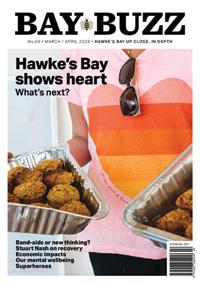
Not receiving our free weekly e-newsbrief, The Buzz? Simply visit www.baybuzz.co.nz and register your email. baybuzz.co.nz facebook.com/baybuzzhb
Subscribe to the best thinking in the Bay.
BayBuzz Premium BayBuzz Digital BayBuzz Print
• 6 issues of BayBuzz magazine per year
• 6 issues of BayBuzz Digital version exactly as printed (great for your tablet)
• All BayBuzz website content
• Weekly e-newsletter
• Free six-month gift subscription for friend
• 6 issues of BayBuzz Digital version exactly as printed (great for your tablet)
• All BayBuzz website content
• Weekly e-newsletter
• 6 issues of BayBuzz magazine per year
• Free six-month gift subscription for friend

Online

Follow the easy steps on the website and pay with credit card baybuzz.co.nz/ subscribe
By email
Pay via bank transfer to 02-0655-0083775-000, including your name as the reference, and email your address details to editors@baybuzz.co.nz
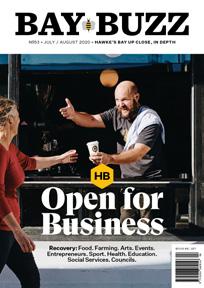
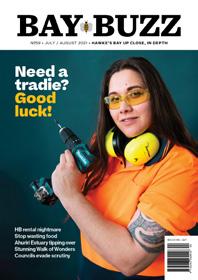
baybuzz.co.nz/subscribe

plant ex ingredient has been clinically proven to reduce didn’t go ahead, but then kept thinking, now, when will do it? There’s never a perfect time to launch business, so just leapt in and went for it.” Prior to lockdown, she had been in negotiations with four major NZ retailers, but those conversaimmediately. In this instance, being response to one unsponsored post on that Facebook “mental”, says Mel, “I had over 1,000 comwas really stressful trying to get from Auckland. The support from other local businesses was incredible.” Mel put out call for help and Steve Christie from Blackroll NZ, Tom Ormond from Hawthorne Coffee, Nathan from Blackbird Goods from Ecokiosk were among the
$10 off for joining … $49.95/yr
$10 off for joining … $24.95/yr
$10 off for joining … $39.95/yr
$39.95/yr $14.95/yr $29.95/yr
STRATEGY 2023 WOMEN & GIRLS
Vision
Enhancing the health and wellbeing of women and girls in Hawke’s Bay by creating inclusive and equal opportunities to be involved in play, active recreation and sport.
Year 1 Activities
$
Increased opportunities Funding
Women and Girls feel confident to participate to participate in play, active recreation and sport. Creating an environment that is safe so that everyone can thrive and grow with courage to participate. This could include ‘Give It A Go’ days that have an alignment with the start of sports seasons and have a participation pathway for their chosen activity.
Leveraging off existing funding opportunities through Sport Hawke’s Bay. Being the connector for other funding opportunities through the likes of the funding roadshows. Promoting the importance of supporting opportunities that can increase participation for all females in Hawke’s Bay.
Leadership
More women and girls in Hawke’s Bay are leading, coaching, and volunteering in play, active recreation and sport. Regional Sports Organisation are committed to upskilling coaches through new and improved coaching courses and education.
Ongoing commitments
Yearly review
Hosting an annual ‘Women and Girls Forum’ that will provide an opportunity for the sector to review the previous year activities and set priorities for the year ahead.
Celebrate success
WHY WOMEN & GIRLS
Ongoing commitment to celebrate women and girls in play, active recreation and sport through promotional channels. Regular connection with national campaigns such as #itsmymove and ‘Its Time”
Key Outcomes
By increasing opportunities for women and girls to get active, leveraging off existing funding opportunities and by having more women and girls in coaching, volunteering and leading the play, active recreation and sport, we hope to have;
What we want to achieve by 2025 of secondary school aged girls involved in organised sport
XX% 95%
• 60% of all secondary school aged girls involved in sport
of Hawke’s Bay female tamariki and rangatahi take part in at least one activity over a 7-day period
Advocating
Being the independent voice for women and girls across Hawke’s Bay in the play, active recreation and sport sector
Increasing female involvement in sport and active recreation at all levels is a key driver of this commitment, as well as recognising the power that gender balance has to positively change the social, economic and cultural future of our country.
Regularly connecting with other advocates supporting this Kaupapa, including WISPA, and Sport NZ
• 95% of Hawke’s Bay female tamariki and rangatahi take part in at least one activity over a 7-day period.

Evidence of student voice/ leadership groups
Work with regional sports organisations to support the establishment of these groups, supporting future direction of sport. This will help guide them with student voice and voice of rangatahi.
Annually celebrating International Women’s Day
Hosting annual events in Hawke’s Bay to celebrate inclusive opportunities and bring everyone in the sector together.
To reach their potential, women and girls must be enabled and empowered as decision makers and leaders with the skills and capacities to be agents of change in their whanau, families and communities. This strategy strives to achieve equity for all women and girls within sport and active recreation, as well as seeking to understand and address the multiple barriers women and girls can face.
Commitment to women and girls in their strategic plan
Work with physical activity providers to ensure they have a genuine commitment to increasing participation for women and girls.
The needs of young women are unique when it comes to sport and recreation. Factors like time pressure and lack of confidence mean they gradually participate less and drop out of structured activity at a faster rate than young men. Iniatitives such as #itsmymove and #femalesonthemove are all about supporting them in leading heathy, active lives. It starts by understanding what matters to them.
sporthb.co.nz
BayBiz
Who are the region’s economic development players? Meet a business teaching teachers. Port

 Jarden is proud to sponsor BayBuzz regional economic coverage.
Digital Circus. Photo: Florence Charvin
& airport cope with cyclone.
Jarden is proud to sponsor BayBuzz regional economic coverage.
Digital Circus. Photo: Florence Charvin
& airport cope with cyclone.
WHO’S WHO IN THE ECONOMIC DEVELOPMENT ZOO?

BayBiz Brenda Newth
2023 promises to be a big year for Hawke’s Bay’s economic development capability. Major initiatives are about to come on-stream that should make a real difference to regional prosperity over the long term and our ability to attract people, businesses and investment.
Here’s a snapshot of the major economic development players and what they’ll be working on in 2023. But first, a definition.
MBIE says that economic development is about improving the well-being of New Zealanders by supporting our economy to become more productive, resilient, and sustainable. The OECD says economic growth is the most powerful instrument for reducing poverty and improving quality of life.
Havelock North-based economic development expert Gus Charteris says that economic development is like a jigsaw puzzle.
“At its heart, it’s about bringing pieces of the puzzle together and real value is added when it helps business and communities do things that they can’t do alone. This is often because it requires decisions and/or investments in other areas that they do not have control over.”
There are many organisations contributing to our regional economic development landscape. In 2020 an independent review – commissioned by councils and authored by Charteris – identified gaps and overlaps, a lack of co-ordination and optimisation, and under funding. It recommended the establishment of a new agency with a strategic focus that could operate as a champion for Hawke’s Bay and take the lead on economic development.
The REDA
Hawke’s Bay’s newly created regional economic development agency or REDA, is possibly the region’s last best hope of creating an agency that can speak with one voice for the needs of Hawke’s Bay. Funded to the tune of around $1.7 million annually by local councils and with an independent (and paid) board led by former Port chairman Alasdair MacLeod, surely this will be the time that the region gets it right?
We’ve been here many times before (setting up a regional economic development agency) and nothing has stuck. Possibly due to a lack of mana, mandate, and money. Hopes are high for this version.
The REDA will be primarily responsible to deliver Pou 4 (economic growth) and Pou 5 (promoting our place) of Matariki, Hawke’s Bay’s Regional Development Strategy. Recapping on Matariki’s vision, it’s where “every whānau and every household is actively engaged and benefitting from a thriving Hawke’s Bay economy”. Lofty goals indeed. It seems like a big challenge when considering that at (almost) full employment, Hawke’s Bay has more people on jobseekers now than before the pandemic. There will always be a group of hard core long term unemployed, but it seems that right now, everyone who wants to work, is doing so.
REDA Chair Alasdair MacLeod is acutely aware of the task ahead. Fresh from the first REDA board meeting recently, he commented to BayBuzz:
“Day to day business stuff is not what we’re in; the REDA will be an enabler and amplifier for the region.”
Alasdair MacLeod, REDA Chair
“I took the job because it is incredibly important for Hawke’s Bay, and it’s going to get a lot of focus (from me). Day to day business stuff is not what we’re in; the REDA will be an enabler and amplifier for the region.”
He wants youth from disadvantaged backgrounds to dream bigger because “there’s potential for really good employment in Hawke’s Bay”.
When asked if the REDA would be delivering social outcomes, MacLeod was clear that it wasn’t the REDA’s responsibility, but “it will be high on the list of filters we apply”.
The REDA will work with stakeholders to develop Hawke’s Bay’s economy, collaborating to ensure the various players are better connected and have a better understanding of roles and activities. It will identify gaps and barriers for making progress, and amplify the efforts of others.
MacLeod says the REDA will not attempt to deliver on all the expectations of a diverse set of stakeholders. Instead, it will work with stakeholders to identify priorities, applying its limited resources on focused delivery on agreed targets.
March + April 2023 BAYBUZZ 41
CLOCKWISE FROM TOP RIGHT: David Trim, Karla Lee, Craig Foss, Alasdair MacLeod, Nigel Bickle.
Photo: Florence Charvin
Also on the REDA board is Shayne Walker, Erin Simpson, Rawinia Kamau, and Caren Rangi. The REDA board allows for seven directors including the chair, and MacLeod is on the hunt for one more person to join the team. He’s looking for a “fairly heavy hitting business person”, with the search “in progress as we speak”.
It would be unfair to expect too much of the REDA this year. A letter of expectation for delivery is in the works, but it will focus on foundational activity like onboarding a chief executive, operationalising the organisation, and spinning up initial streams of work.
The Chamber
Helping businesses today is the job of Hawke’s Bay Chamber of Commerce. BayBuzz caught up with CEO Karla Lee and President David Trim in late
right now. Looking at the future needs of business, that’s not our space.”
Karla Lee, CEO HB Chamber of Commerce
January, a day before the Chamber and other tenants of the Hawke’s Bay Business Hub upped sticks and moved to new Business Hub premises in Queen Street Hastings.
The Hawke’s Bay Chamber is a membership organisation focussed on the needs of business today, says Lee. “We’re a regional entity supporting all businesses between Wairoa and Central Hawke’s Bay.”

As Trim and Lee see it, there’s no overlap between the role of the Chamber and the new REDA. “We’re about developing businesses right now,” Lee explains. “Looking at the future needs of business, that’s not our space.” Trim adds: “We look after business, and business growth.”
The Chamber, whose members includes small, medium, and large businesses, has seen membership
Elevate and rejuvenate
with custom camping & marine fabrication this winter

If you understand the value of custom crafting, reuse, repair, and a quality finish, our team at Douglas would love to connect.
Talk
Breathe life into your boat upholstery, lift visibility, and weather protection. We create clever marine solutions using a range of PVC and textiles.
increase around 10% since the pandemic. It serves members in a number of ways – addressing pain points and needs through training, education and capability building; holding events; advocacy at a national level via the NZ Chamber network as well as locally with councils on issues like infrastructure and transport; RSE and immigration; and celebrating success through the Hawke’s Bay Business Awards.
Lee has recently been appointed to the NZ Chamber’s board, which should help bring to national attention the needs of our business community.
When asked about the role of the Chamber, she says it has a micro, individual business focus, compared to the macro focus of the REDA. As to her expectation of the REDA, Lee hopes the Chamber and REDA will “walk beside each other, understand our lanes very
Repair, extend and reupholster for more joy, space and comfort when caravanning. We craft retractable and tent awnings, custom squab covers, and more.

42 BAYBUZZ March + April 2023
“We’re about developing businesses
TRANSFORM YOUR OUTDOOR SPACE • REJUVENATE YOUR BOATS & VEHICLES info@douglasinnovation.nz | douglasinnovation.nz | 06 878 6300 Hastings Showroom – 413 Queen St West, Mon - Fri
to
of fabricators25+ years in the Bay - for a smart result.
our experienced team
clearly, and respect each other”.
Trim says that the Chamber’s and REDA’s purposes are aligned. “We want a great Hawke’s Bay, booming business, and for it to be an attractive place to set up business.”

Lee hopes that the REDA will take the time to really understand the lay of the land, develop a clear strategy, understand its “lane” very clearly, and link up.
In 2023 the Chamber will have a bigger focus on member needs and networking. It will leverage its Young Enterprise work to create more opportunities for youth, including taking students into businesses (helping ready them for work), as well as getting businesses ready to interact with today’s youth, their future workforce, and act as an essential connector for business.
foodeast
foodeast is another new addition to Hawke’s Bay’s economic development scene. Envisioned as a food innovation hub, the $20 million project has been plagued by pandemic-affected delays, as well as skyrocketing costs, and has had to significantly scale back on its original building plans.

Craig Foss, former regional councillor and current chair of foodeast remains upbeat.
“From its inception, the foodeast vision has been to develop a facility focused on assisting our food producers and manufacturers to expand and develop their offerings to bring new products to market.
“Within the development landscape, it will be a pivotal link between businesses (from start-ups to medium players) and the science and technology
expertise they need to innovate and grow, as well as (things like) linking them with production facilities across the region that have manufacturing capacity. It is all about innovation, collaboration, and excellence.”
foodeast has been modelled on and is intended to link to the New Zealand Food Innovation Network. It will act as a connector, enabling businesses to take the next step in bringing new products to market or to further develop existing products.
The project reached an important milestone at the end of January, with construction of Building B underway. Lodging of the consent application for Building A is imminent, with completion of both expected by the end of the year.
Foss says foodeast and the new REDA will work closely together.

March + April 2023 BAYBUZZ 43
“We need to be more than the sum of our parts, and that’s got to be through things that are truly strategic and regional, having a really coherent strategy around the big pillars.”
phone 06 833 6655 email office@louvretec com free no obligation quote & site visit
Nigel Bickle, CEO Hastings District Council
take the indoors outside with our custom opening roofs and louvre screens
“With the REDA assisting all businesses with their ‘business gaps’ –things like business cases, management structure, and support – and foodeast assisting food and beverage businesses to get to the deliverables stage, this will be the perfect marriage.
“Working with all economic agencies is critical to the region’s success.”
Top priorities for foodeast in 2023 are to complete construction, sign key tenants, develop the team, and the board refocusing to the operational model, says Foss.
Foss wouldn’t be drawn on potential tenants, sharing only that there is significant interest from a varied and exciting range of innovative food and beverage businesses, interested in both long term leasing and the services the facility can offer.
“As detailed design and fit out are finalised, construction gets underway and availability dates are confirmed, we will be able to progress these discussions,” he says.
The councils
Business needs assistance with consenting, infrastructure, and capability, and that’s where councils come in. Not only do they have a big role to play in supporting economic development, they are also major funding stakeholders of the REDA.
BayBuzz understands that both Hastings District Council and Napier City Council have given their ED staff assurances that their jobs won’t be affected by the establishment of the REDA.
Napier City Council Acting CEO Richard Munneke says that Napier City provides funding and support for sector development at a lot of levels.
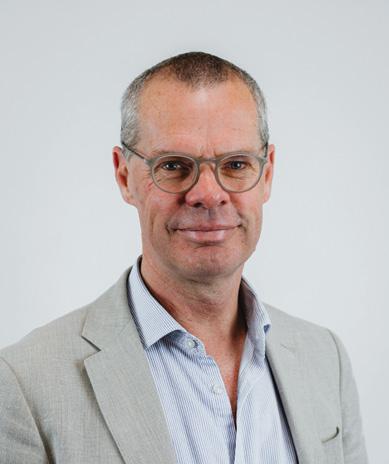
“Our support includes business and
talent attraction, business support, employment initiatives, business and innovation start-ups training and support through Rebel Business School and Young Enterprise Scheme, business events such as the recent Greg Foran lunch, development and management of sister city relationships, close relationships with the Chamber of Commerce, local business associations, and other councils.
“In everything we do, it’s a team effort, with us working with partners and stakeholders,” says Munneke.
Hastings District Council (HDC) CEO Nigel Bickle says his council provides support for business relocation, account management services, and establishes industrial parks, as well as the things it does with the Hastings business community working with the Chamber on things like the quarterly ‘focused on business breakfast series’.
Of HDC’s activities and those of the REDA, he says: “They need to be aligned, but they’re completely different things.”
Bickle says that we can expect more regional collaboration than previously.
“Two of the biggest priorities (for all councils via the triennial agreement) are regional spatial planning and greater levels of collaboration across the region.
“We need to be more than the sum of our parts, and that’s got to be through things that are truly strategic and regional, having a really coherent strategy around the big pillars.”
Other players
Hawke’s Bay Regional Investment Company (HBRIC). The investment arm of the Regional Council. At June ’22 it had assets, such as the majority share of Napier Port, valued at
approximately $440 million, including nearly $50 million of managed funds remaining from the port IPO. HBRIC is also an investor in foodeast. Its goals are to optimise financial and strategic returns to assist Council achieve its vision of “a healthy environment, and a resilient and prosperous community”.
Post treaty settlement groups (PTSG). A range of PTSGs are currently investing on behalf of Iwi across the region, with more to come. Two examples: Tātau Tātau o Te Wairoa has invested in orchards for its people, with plans to plant 160 hectares of Envy apples providing jobs that will change role models in communities. Ngāti Pāhauwera Development Trust has the Pākuratahi orchard near Tangoio. Last year the iwi bought land in Raupunga, with the plan of turning it into orchards for its people, leading to sustainable jobs, housing in Mohaka-Raupunga, and eventual home ownership.
Central Government agencies. MBIE, MSD, and MPI in particular play a vital role in regional economic development.
If the promised collaboration proves to be more than obligatory rhetoric, Hawke’s Bay could be in its best position ever to capitalise on our regional competitive advantage and deliver economic development that achieves the Matariki goals of “every whānau and every household”. All the pieces of the jigsaw puzzle are in place, at least as far as the bureaucrats are concerned.
But what do actual business leaders think of all this ‘support’? Stay tuned for further BayBuzz coverage.
44 BAYBUZZ March + April 2023
“In everything we do, it’s a team effort, with us working with partners and stakeholders.”
Richard Munneke, Acting CEO Napier City Council



LOCALLY GROWN
It has been a big few years for Vet Services Hawke’s Bay: two building projects, expanding services, a global veterinary shortage, and a pandemic which we would all like to forget. General Manager Brendan James tells us what makes Vet Services Hawke’s Bay tick and why they are getting recognised as innovators, industry leaders and winning business awards.
Vet Services Hawke’s Bay (VSHB) started from humble beginnings, initially established as a club by the local farming community in Waipukurau to ensure there were adequate veterinary services available in their area. Over 70 years later, the CHB Farmers Veterinary Club has over 500 members and the partnership between VSHB and the Club is stronger than ever.
“We are proud to be a locally owned business with all owners living locally and actively working within our clinics.” The business now employs over 100 people including more than 37 vets across three sites.
As a mixed practice Vet Services provide veterinary care for companion animals, horses and service farms with sheep, beef, dairy and deer production. “This means our veterinary team develop a wide range of skills
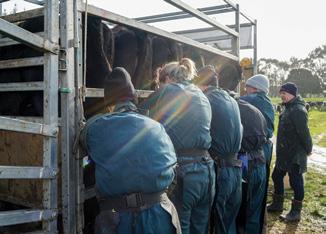

which provides them with a great opportunity to pursue their areas of passion. Some vets choose to have a very broad career looking after a mix of pets and large animals, others choose to specialise in an area like equine focusing their care on a more specialised area such as horses.”
We are passionate about supporting the communities that our clinics service. “It’s a privilege to know many of the people who visit our clinics, and in some cases, we have worked with three or four generations of farmers.” The collaboration of a big team of veterinarians and support staff across the regions allows Vet Services to provide a comprehensive suite of services for the client and animals’ benefit.
In 2022, a four-year renovation project, funded by the CHB Farmers Vet Club, was completed at Vet Services Waipukurau. ‘The upgrades to the building are spectacular! We have doubled the size of the small animal clinic and invested in high-tech diagnostic equipment to ensure Vet Services can continue to provide world-class animal health services for the CHB community for many years to come.’
Vet Services Napier has had even bigger changes, recently relocating into brand new facilities within ‘The Crossing’ development on Taradale Rd.
“It has been highly rewarding process to fit out a new building with everything you need to accomplish an excellent onsite experience for clients and staff.” The facilities now allow for companion animal, horse and farm veterinary services to be offered within the same building and add new spaces for specialised medical and surgical services to support the growing animal health needs in Napier and surrounding areas.
“The end of 2022 felt like a race to the finish line. We were really driven to meet and exceed our high expectations with two long-term building projects coming to an end and were thrilled to have a number of veterinarians join us from overseas to support the workplace shortage faced during Covid 19.” To cap it all off, Vet Services received Excellence in Innovation and Supreme Business of the Year at the Hawke’s Bay Chamber of Commerce Business Awards.
How did a small Waipukurau veterinary club grow into a thriving business with big ideas?
IN RESPONSE TO CYCLONE GABRIELLE
Our heart goes out to our wonderful region with the deepest sympathy for those who have been caught in the warpath of Cyclone Gabrielle. We know that many people in our community are under immense strain and some have suffered significant loss and we want you to know that we are here to help and will do everything we can to support the response and recovery efforts.
The Vet Services team are available 24/7. Don’t be afraid to contact us if you need a hand, information or just a chat. Besides veterinary care we are happy to be a sounding board and to help coordinate with response teams anyway we can.



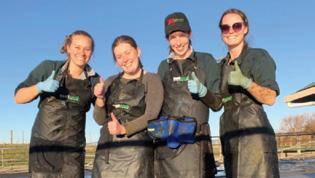

We are in this together.
Brendan James & the entire Vet Services team


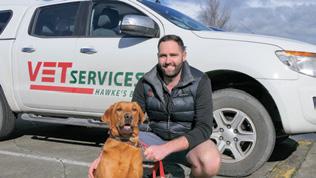
Waipukurau: (06) 858 9060 43 Takapau Rd, Waipukurau Hastings: (06) 876 7001 801 Heretaunga St West, Hastings Napier: (06) 843 5308 170 Taradale Rd, Napier www.vsequine.co.nz www.vshb.co.nz
Purpose built facilities in Napier opened in late 2022 – a massive improvement on what essentially started as a shed with specialist equipment.
ADVERTORIAL
New spaces have been added for specialised medical and surgical services to support the growing animal health needs in Napier and surrounding areas.
COOL FOR SCHOOL

BayBiz Innovators Fiona Fraser
Thousands of teachers across New Zealand have Digital Circus, a Hawke’s Bay business to thank for their proficiency and understanding of digital technology. Now, that same business has branched out into providing easily searchable classroom resources teachers can access at the click of the mouse.
Nicola and Ian Kenny were flummoxed. The year was 2017 and the Ministry of Education had signalled that digital technology would become a key component of each school’s lesson planning by, at the latest, 2020.
This was more than just a recommendation that students BYOD (bring your own device). The curriculum changes meant schools and kura were required to develop programmes that would introduce children as young as five to a range of digital technologies, allowing students to hone their digital fluency during their years at school. It was hoped that the changes would prepare learners to use digital thinking in a range of roles across sectors as diverse as agriculture, healthcare, transport, construction, media, fashion and food production.
But that’s not why Nicola and Ian were perplexed.
“We were seeing a lot of schools go out and buy robots,” recalls Nicola.
“Robots are expensive, and while learning to programme them is fun, it would probably only provide a fraction of the digital proficiency students would need under the updated curriculum.”
Nicola and Ian had just founded Digital Circus, balancing their jobs as digital technology teachers at Lindisfarne and Central Hawke’s Bay College respectively, with their fledgling business providing fellows and colleagues with exceptional professional learning and development (PLD) opportunities.
“At the time, we’d had to travel out of the region to attend PLD,” explains Ian of the bold move from teaching students to teaching teachers. “There just wasn’t anything local that upskilled
teachers in digital technology. So it became a case of doing it ourselves!”

The pair – with over three decades of digital tech teaching experience between them, combined with an inexhaustible passion for the topic –launched out of a renovated bungalow on Hastings’ Queen Street. But it was a long, slow and hard road to make their idea viable.
“The lesson we learned very very quickly was that school budgets were going to be our biggest barrier,” says Nicola. “While both teachers and schools were enthusiastic about getting to grips with digital technology, for many, the cost of doing so fell into their too-hard basket. So we had to change tack.”
Digital Circus launched a series of immersive holiday programmes and after school clubs which, in those early days, helped pay the bills. ‘With keeping it in the family’ already a proven model for the Kennys, Nicola and Ian brought their IT expert son Matt into the fold to help them facilitate their offering and lead short courses for kids in things like robotics, gaming and coding. He’s been with them ever since says proud dad Ian, who remembers the many weeks the family would check out the office whiteboard and celebrate the fact they were “almost breaking even”.
Things changed rapidly when the Ministry of Education introduced a new accreditation model for organisations such as Digital Circus, who could apply to become funded support to New Zealand schools. The business no longer relied on schools having their own budget to afford their services, and Digital Circus was immediately viable.
Nicola left her teaching role to concentrate on the family start-up fulltime, she and Ian employing teachers Toni Westcott and Juliet Revell to help manage the workload.
Toni says joining the team has been a career highlight, not only because of the supportive atmosphere nurtured by Nicola and Ian, but due to the constant contact with teachers, who are excited about learning fresh ways of integrating technology into daily classroom activities. “Teachers know that simply putting a stack of Chromebooks
in a classroom doesn’t change anything. We typically find that the schools applying to have us come and share our kaupapa, already strongly resonate with what we’re doing. They’re the teachers and schools willing to learn alongside their students, make mistakes in front of them, and have a go,” says Toni.
As word of Digital Circus’s approach to PLD spread, the requests from schools came flooding in, with the small team travelling to some of our most remote locations, including Great Barrier Island, and the tiny East Cape community of Ruatōria. Toni estimates they’ve been into 300 schools New Zealand wide so far, with many schools requesting repeat visits.
“I think our point of difference is that our support is meaningful, we’re fun, and we’re flexible. With hands-on classroom experience ourselves, we don’t just train teachers – we sit alongside them, and even model how a lesson could look for them.”
Toni Westcott
And the response each time is incredible. “I think our point of difference is that our support is meaningful, we’re fun, and we’re flexible. With hands-on classroom experience ourselves, we don’t just train teachers – we sit alongside them, and even model how a lesson could look for them. Digital tech is very hands-on and for some teachers, the fear is so real – it’s really rewarding to go in and be their fairy techmother and wave our magic wands!”
What teachers wanted to know in 2017 was worlds apart from what they need to learn now. “Back then, it was ‘How do I use Google and Microsoft effectively? How do I introduce an iMovie?’ It was a matter of supporting teachers over their own personal learning hurdles so they could have the confidence to then bring some of that tech into the classroom,” says Ian.
March + April 2023 BAYBUZZ 49
In 2023, it’s about using technology to allow students to demonstrate what they’re learning, says Toni. “Teachers want to know how to engage their kids and integrate as many subjects as possible into one lesson. And these days, it’s also about encouraging students to be creators of technology, rather than solely consumers of it,” she notes.
“At one school we visited, the kids had just come back from camp so rather than write a recount of what they did, we got them to pick their favourite thing about it and make a diorama, using playdough and copper tape and circuit boards. Then they had to write and record a voiceover script, the whole thing was hooked up to computers, and a fully interactive experience was created! We held an exhibition night where whānau could come along and have their child present their diorama. It was amazing for the kids and so empowering for the teachers to understand that digital technology isn’t just about apps and playing with gadgets.”
And, it can – and should – be used to bring a fresh dimension to the teacher’s lesson plan. “As I always tell teachers,” says Ian, “if digital technology is not going to enhance or improve what you’re already doing, don’t use it.”
It was amid the challenges of Covid19 that the Digital Circus team saw another way they could support busy, overwhelmed teachers. “That period exposed a series of gaps in how well schools were set up digitally, and many teachers really struggled with ideas on how to teach classes remotely,” says Toni.
So, the team began releasing free teaching resources over Facebook, with their Te Wiki o Te Reo Māori resource, published during our second nationwide lockdown, being downloaded 25,000 times (equating to one in six New Zealand teachers). The volume of views, likes and shares had the unintended consequence of raising Digital Circus’s brand equity at a time where teachers were captive, at their laptops, and desperately needing help.
“Around the same time, we recognised the importance of diversifying our business for greater stability. We wanted to explore new opportunities,” says Nicola. “Toni had the great idea of establishing Digital Kete, which would be a platform where teachers could find resources and inspiration for all sorts of teaching topics.”
So, she and Ian supported Toni and web developer Matt to get the platform
“We didn’t come into this to become entrepreneurs, we came into it because we wanted to make a difference in the education space. Everything else is a bonus.”
Ian Kenny
off the ground. “I don’t think we would have done it if we didn’t have Matt on the team,” admits Nicola. “But having the skills to do all the development, all the coding and content in-house meant the risk and the cost were minimised.”
Just over a year later, in late 2022, the subscription-based platform launched, quickly garnering a solid following of individuals and schools looking for a leg-up in the classroom.
“At the moment, we have a database of both free and paid resources on the site and we’re producing at least 10 new resources each week,” says Toni, who adds that she is keen for teachers to tell her what they want so she can make it.
“We’re aiming to cover off all the calendar events like ANZAC Day, Matariki and so on but we love it when teachers message us with their needs.”
Digital Circus and Digital Kete now support seven full time employees and a number of contractors, and their diversification plans continue – Nicola is publishing a series of educational books, and Ian is scoping out ways the team can best support the new Aotearoa histories curriculum as it’s rolled out across New Zealand this year. They run community initiatives through Hastings Library, the Hastings Schools Digi Awards and held their very own education conference here in Hawke’s Bay called Inspire.
Within the private sector too, Digital Circus works with both local and national organisations to help redesign their educational packages to include the latest, cutting edge teaching tools. And they’re part way through a rebranding process, introducing a new logo and set of values that are important to them as they move forward.
As busy as it sounds, at the business’s heart are a group of people who are – quite simply – passionate about teaching. “We didn’t come into this to become entrepreneurs,” says Ian.
“We came into it because we wanted to make a difference in the education space. Everything else is a bonus.”
www.digitalcircus.co.nz
www.digitalkete.co.nz



THE STATION WHERE WE PUT YOU
THE AIR Radio Hawke’s Bay has been ‘Putting the community on the Air’ since 1995! Got an idea for a program? Call Kelly on 06 878 8710 50 BAYBUZZ March + April 2023
ON
Protect your eyes with a pair of sunglasses from Shattky Optometrists

Fashion sunglasses from Shattky Optometrists are not just a chic accessory, they provide your eyes with comfort, protection and they can also have your prescription lenses fitted so you can see with precision and enjoy all that Hawke's Bay has to offer.



A well selected pair of sunglasses will not only protect your eyes, it will show off your individual style! Shattky Optometrists delivers the highest quality eyecare and eyewear for all ages Come in and see us in Hastings or Waipukurau
HASTINGS / 116 Russell Street South / 06 876 3777
WAIPUKURAU / 36 Ruataniwha Street / 06 858 9117



shattkysoptometrists shattkyoptometrists





www.shattky.co.nz

You
You can find it all here: www.baybuzz.co.nz/digital 1. The Buzz e-newsletter 2. Expanded
3. BayBuzz digital magazine looktothefuture.RespondingtoHB’srisingfamilyviolence.ABCsofEVdriving.EnvironmentCentre isbuzzing.Localsolutionfortyres.DHB'sOmicronadvice.Economiccalamityawaiting?Wastecanbe valuable.MeetRicksTerstappen.Natureasaperson.Artistsneedspace. Coverphoto:RicksTerstappen TomAllan.This TyneNelsonbyFlorenceCharvin. March + April 2023 BAYBUZZ 51
deserve the perfect sunglasses... BayBuzz Online
website: baybuzz.co.nz
John Carran, Jarden
Cyclone delivers differing short and medium-term impacts
The physical and psychological impacts of Cyclone Gabrielle have been devastating, particularly for the worst affected regions, Tairāwhiti and Hawke’s Bay. The cyclone has caused widespread damage to homes, businesses, communities, horticulture, agriculture and public infrastructure such as roads and bridges. The full extent of the damage has yet to be estimated, but reports suggest costs could run into the tens-of-billions of dollars.
There are likely to be differing shortterm and medium-term impacts from the damage. In the short-term, food production for both domestic and export markets is likely to be negatively affected. The cyclone comes soon after the earlier Auckland and Waikato floods that had a damaging impact on crops such as onions and potatoes. While some flood-impaired production for export may be diverted to the domestic market, the net effect is likely to be near-term fresh food shortages, particularly for fresh fruit and vegetables, and associated price rises for affected produce.
Disruption to transport and warehousing facilities are also likely to have a short-term impact on freight logistics, which could cause nearterm delays and shortages for consumer and business goods. Freight transport dislocation could also hinder some export goods reaching domestic production facilities and ports. This is especially likely to be a problem for dairy, horticultural and forestry exports from the hard-hit regions of Northland, Tairāwhiti and Hawke’s Bay.
Counteracting these short-term negative influences on economic activity to some extent will likely be
with more resilience.
an increase in consumer spending (such as household furniture, furnishings, appliances, cars etc) as people seek to replace flood damaged items. Whilst consumption of other goods and services (such as travel, accommodation, eating out, etc) is likely to have been depressed during the cyclone and possibly immediately afterwards, evidence from flood experiences overseas suggest that consumption tends to bounce back within a relatively short period.
In the medium-term, residential and civil construction activity is likely to be stronger than it would otherwise have been as damaged houses and infrastructure are rebuilt and repaired. After the 2011 Canterbury Earthquake, rebuilding was staggered over several years due to delayed insurance assessments and capacity constraints in the building sector.
Although the magnitude of rebuild activity due to cyclone damage may not be as large as the Canterbury Earthquake rebuild, there are likely to be similar time lags for the start of construction due to the complexities of insurance assessments and ongoing capacity constraints in the construction sector. There is likely to be a significant boost to infrastructure and civil construction due to significant damage to the roading network across the upper North Island.
In New Zealand’s current situation,
it is unlikely horticultural and agricultural production losses resulting from Cyclone Gabrielle will be recouped. In addition, it could take some time to clear debris and mud from productive farmland. This will be a particularly hard time for the primary sector in the Tairāwhiti and Hawke’s Bay regions.
Financial impacts
In the near-term, the floods will boost the prices of some fresh fruits and vegetables at a time when produce prices have already risen substantially due to previous climatic events and rising input costs. Food price increases are already running at an annual rate of 10.3%, with fruit and vegetable prices up 16% from a year ago.
The impact on fruit and vegetable prices from the cyclone should be relatively temporary until alternative sources of supply (including imports) become available. However, there may be a lingering effect on fruit and vegetable prices to the extent that there are planting delays due to waterlogged soil. It is unclear at this stage the extent to which stock has been lost due to the floods. At the least it is likely there will be difficulties transporting livestock for a time, which may increase prices for a period.
A reduction in habitable houses in the worst affected regions is likely to lead to rises in residential rents and cause house prices to be higher than otherwise in those areas. After the Canterbury Earthquake, annual rental inflation in the region peaked at close to 12%, which was substantially higher than the national average.
Recent evidence suggests building material costs have started to ease up as building demand eases and supply
BayBiz
52 BAYBUZZ March + April 2023
As the response to the Canterbury Earthquake has shown, communities can be rebuilt
conditions have improved. However, increased construction activity caused by rebuilding and repairs may keep building costs higher as increased construction activity puts upward pressure on building material prices and builders’ wages across the country. This may be a more slow-burning issue, the magnitude of which may depend on the extent to which construction activity is subdued over the coming 12-18 months by higher mortgage interest rates, falling house prices and previous building cost rises.
In normal circumstances, the Reserve Bank would likely look through the short-term boost to prices caused by events such as Cyclone Gabrielle. However, the current high starting point for inflation and the succession of shocks to food supply – elevating food prices – may be fixing people’s expectations of future high inflation. This increases the risk of persistently higher future inflation as workers and businesses build higher inflation expectations into their wage demands and price setting.
The Reserve Bank signalled at its February monetary policy meeting
that the effects of Cyclone Gabrielle are unlikely to influence monetary policy in the immediate future, although it acknowledges the economic outlook is now more uncertain.

One factor that may further mitigate the risk of a higher OCR going forward, is the possibility large reinsurance inflows sourced from offshore could boost the value of the New Zealand dollar. This was the case in the wake of the 2011 Canterbury Earthquake, when $21 billion of reinsurance inflows had a material influence in pushing up our currency. A stronger New Zealand dollar could help subdue the New Zealand dollar cost of imported goods, thus helping the Reserve Bank’s quest to quell future inflation.

The shattering effects of Cyclone Gabrielle on the people, communities, environment and economies of Tairāwhiti and Hawke’s Bay will take time to heal. However, as the response to the Canterbury Earthquake has shown, communities can be rebuilt with more resilience. After the initial effects pass, the Tairāwhiti and Hawke’s Bay economies will emerge stronger.
John Carran is Director, Investment Strategist and Economist, Wealth Research at Jarden. The information and commentary in this article are provided for general information purposes only. It is not to be relied upon as a basis for making any investment decision. Please seek specific investment advice before making any investment decision or taking any action. Jarden Securities Limited is an NZX Firm. A financial advice provider disclosure statement is available free of charge at https://www.jarden.co.nz/our-services/ wealth-management/financial-adviceprovider-disclosure-statement

We take a sophisticated approach to building capital, providing our clients with expertise and transparency. Find out more jarden.co.nz/our-services/wealth-management Jarden Securities Limited is an NZX Firm. Jarden Financial Advice Provider Disclosure Statement is publicly available at www.jarden.co.nz. Jarden is not a registered bank in New Zealand. WEALTH MANAGEMENT Making the complex simple and personal March + April 2023 BAYBUZZ 53
Two ports in a storm
Providing vital connections to the rest of the country and the world is BAU for Napier Port and Hawke’s Bay Airport. But Cyclone Gabrielle saw our sea and air ports step up to support first responders.
Napier Port has come through the cyclone remarkably well, says CEO Todd Dawson. “Which means we have been able to restart shipping. It’s also enabled us to support others providing critical services as well, such as the defence force.”
Cyclone Gabrielle has had minimal physical impact on the port. As a precaution port operations were suspended at 5:00pm Monday 13 February, and berthed vessels went out to sea to ride out the storm in relative safety. Generators kicked in supplying electricity, police and the defence force moved in, and Royal NZ Navy ships berthed as resources mobilised.
“The port’s main role in regional recovery is to get the port up and running,” says Dawson. “The best thing Napier Port can do is keep essential supplies and imports coming into the region, and to help exporters get their cargo to market.
“Cargo owners have been in touch every day wanting to know how soon they can get their products on to vessels, so it is really rewarding for the whole team who have been working hard to make this happen.
“Across the region we have been pitching in where we could offer the best help and many of the port team were volunteering in different roles.”
Dawson says that the port is wrapping support and care around its people. “Some have lost a lot. Our welfare team is a group of people from all areas of the port and they are on the ground every day checking in and seeing who needs help and how we can provide that.”
Full power was restored the after-
“With Cyclone Gabrielle’s impact on our roading networks, the airport gateway has been essential for getting help to our communities, especially the more remote ones.” Rob
Stratford,
CEO
 Hawke’s Bay Airport
Hawke’s Bay Airport
noon of Monday 20 February, and the process of restarting full port operations began.
As for the impact on trade volumes and port financials, Dawson says it’s clear that the storm will impact trade volumes particularly in the fresh produce sectors.
“We’ll keep the market updated as we gain greater visibility on the outlook for regional seaborne trade. As of Wednesday 22 February we can’t quantify the impact on regional business and the trade across Napier Port’s wharves.
“While we know there is devastation, there are also harvests, crops, wood products and other cargoes that producers are needing to export.”
Dawson says that in the six years since he moved his family to Hawke’s Bay he’s learned that people and businesses are tough.
“Maybe it’s a primary sector attitude of overcoming problems and finding solutions. People dig in and look out for each other; and the world still wants a lot of what our region produces.
“It’s important that people are looked after first and foremost, and then it’s about regional recovery. We need to support businesses to open and get back into trading, because that will support jobs and the regional economy, and jobs support families and communities to get back up,” Dawson concludes.
Across the way at Westshore, Hawke’s Bay Airport (HBA) has been
another critical lifeline into and out of Hawke’s Bay in the wake of Gabrielle, especially for the immediate emergency response effort.
“As a key regional transport asset, we provide crucial access for the emergency management resources that come to support our communities in times of need. With Cyclone Gabrielle’s impact on our roading networks, the airport gateway has been essential for getting help to our communities, especially the more remote ones,” says Hawke’s Bay Airport CEO Rob Stratford.
The airport prepared well for the cyclone’s arrival with its dewatering programme activated to lower the airside water table in anticipation of heavy rain. All light aircraft were hangered or tied down and all Air New Zealand aircraft that would normally overnight were flown elsewhere as a safety measure.
The airport has been fully operational throughout Gabrielle and in subsequent days and has provided a critical gateway for the regional emergency response effort, says Stratford.
“When power was lost early on Tuesday 14 February, generators allowed the airport and air traffic control to continue to operate, and critical support services like the NZ Defence Force had immediate air access from day one of the emergency response.”
The main runway was not impacted by the cyclone, and Stratford says the airport sustained only minimal damage.
“There was minor flooding on the secondary apron and ring road; both were cleared quickly.
“We were able to ensure the many helicopters – civilian and NZDF – had sufficient fuel for round-the-clock rescue operations, and within the terminal we supported those rescued and brought to the airport with meals and somewhere to rest.
“For our community within reach of
BayBiz Brenda
Newth
54 BAYBUZZ March + April 2023
the airport, we opened the terminal to them so they could charge personal devices and connect with family and friends over the free Wi-Fi. Carpark barrier arms were lifted during this time so that no one incurred any parking charges.
“Our busiest day was Wednesday, the day after the cyclone when 1,600 people visited the terminal. At one
point we had 600 people connecting to the Wi-Fi at once.”
Full power was restored on Monday 20 February, which further enabled helicopters and fixed wing aircraft to be appropriately maintained during the recovery phase.
Brenda Newth is the BayBuzz business writer. A former accountant, she gets her kicks these days as a communications specialist, storyteller, AirBnB superhost and dog mum.
Napier Port
• All people safe, but some significantly impacted
• Port’s culture of care for people is strong, extending to the wider community
• Operations closed Monday, 13 February at 17:00
• Partial operations restarted Thursday 16 February at 7:00
• Welcomed first post cyclone vessel on Friday 17 February
• Providing facilities to NZ Army on port, and berths for RNZN ships HNMZS Te Mana and Canterbury

• Cargo owners in touch daily for updates on shipping
• 25m – the biggest wave recorded on the port’s breakwater during Gabrielle
Hawke’s Bay Airport
• Operational throughout cyclone
• Main runway not impacted
• Support for Airforce
• Support for the rescued
• AirNapier and RedAirworx also supporting the response/ recovery efforts
• Terminal open to public for charging devices/Wi-Fi
• 1600 people visited the terminal on Wednesday 15 February
YOUR TRADE GATEWAY TO GLOBAL MARKETS
“While we know there is devastation, there are also harvests, crops, wood products and other cargoes that producers are needing to export.”
Todd Dawson, CEO Napier Port
Napier Port CEO, Todd Dawson, with army personnel
TO EUROPE & WEST AFRICA TO EAST COAST OF SOUTH AMERICA TO CENTRAL AMERICA TO NORTH,
TO WEST COAST OF SOUTH AMERICA TO SOUTH EAST ASIA,
EAST,
NAPIER AUSTRALIA CHINA JAPAN HONG KONG BRISBANE MELBOURNE NINGBO TOKYO SINGAPORE
napierport.co.nz Napier Port Napier Port
CENTRAL AND SOUTH AMERICA
INDIA, MIDDLE
AFRICA AND EUROPE
March + April 2023 BAYBUZZ 55
Over five million tonnes of cargo flow across our wharves each year, connecting Hawke’s Bay to the world.
Ideas + Opinion Dom Salmon
Become car-lite
I recently came across an image which beautifully put into perspective the fact we need to change the way we live, not just our technology, if we are going to create better future cities.
It was of a line of vehicles trying to leave the Burning Man festival in the United States – wide enough and long enough to be seen from space. The striking thing was the accompanying caption, pointing out that the queue would look identical if all the vehicles were EVs.

The same comparison can be made for any city where traffic congestion is an issue, but the impact is also on resources.
There will be a very real resource crunch for the materials to make EV and other large storage batteries if we were to simply transition the existing fleet. A huge increase in renewable energy generation would also be needed to run it without relying on fossil fuels.
Our love affair with the car Kiwis are still very much in love with cars and large vehicles in particular. Sales figures from the Motor Industry Association show 2022 boasted the strongest passenger and SUV vehicles registrations on record.
While registrations of vehicles with some form of electrification grew 77% from 2021, a whopping 18% of total registrations were for just three vehicles – the Ford Ranger (7%) Toyota Hilux (6%) and Mitsubishi Outlander (6%).
We have become addicted to a method of transport which is very resource heavy. After all, moving one or two people around in a metal box which weighs from 1.5 to two tonnes just isn’t an efficient use of resources, even if it’s powered by an EV battery.
Add to that the increasing cost of ownership and the impact of congestion on productivity, and the argument is strong for a shift to a multi-modal
future where a privately owned car isn’t the default setting for every journey. What are some of the factors that could nudge our behaviour?
Rethinking short trips

Around a third of vehicle trips in New Zealand are less than 2 kilometres – a distance most of us can easily achieve on foot or by bicycle.
I cycle a lot to get around so I might be slightly biased, but I consider it the best alternative to cars – whether the motor be electric or internal combustion.
The bike is one of the most efficient, and most accessible, modes of transport around. Studies have shown that even when compared with other creatures, many of which have evolved wondrously efficient ways of moving, the bike is difficult to beat.
In Hawke’s Bay there isn’t much preventing us from using our bikes more often. We have mostly flat terrain, a great climate and many kilometres of bike paths and lanes to use. E-bikes and scooters have also come along in leaps and bounds, some with ranges to rival early generation EVs.
The shift can be helped by businesses offering the flexibility and facilities to make commuting to work possible. The benefits go both ways too, with research showing unequivocally that regular cycling and walking improves health, mood, and productivity.
Sharing is caring (for the planet) Rideshare or carshare are great options if you can walk, cycle, or use public transport most of the time, but still need a vehicle for some journeys, and they are beginning to grow their presence in Aotearoa.
Companies like Mevo, Cityhop, Zilch and My Ride Your Rental offer vehicles which can be rented – even by the hour – through smartphone apps. Mevo for example, has exceeded over 20,000 users in NZ, and offsets 120% of its emissions. Businesses which build climate action into their business model are increasingly attractive to consumers.
The Daisy in Mt Eden is an apartment building, completed in 2018, which has no car parks and comes with a shared car that can be booked, and parking for bikes and scooters. It’s a short stroll from plentiful public transport and is proof a car-lite lifestyle is possible in a city.
Focused on making transport affordable and accessible, Ngāti Whātua Ōrakei (Trustee Ltd) has received funding to develop a system for a shared pool of electric vehicles for whānau in their local community.
Getting on the bus
Public transport is a resource efficient way to move people around in cities. Can you imagine a place like New York, Paris or even Auckland and Wellington
56 BAYBUZZ March + April 2023
functioning without public transport?
In post WWII New Zealand, cities grew with urban drift and the baby boom. They became planned around suburbs of quarter acre sections (the half gallon, quarter acre, pavlova paradise) rather than being built more densely and upwards. Public transport infrastructure suffered a lack of investment, and within the space of a generation or two, people were forced into cars – often just one person per car.
But is it a case of ‘build it (well) and they will come’?
The bus lane over the Auckland Harbour Bridge sees more than half of all commuters travelling the route into the city at peak times by bus. The result has seen the number of cars on the bridge remain stable, despite Auckland’s population growth.
Train journeys have also been on an upwards trajectory since the Britomart train station opened – already smashing predictions originally made for when the City Rail Link opens in 2024.
The system of buses in Hawke’s Bay hasn’t been at the same level as bigger centres, but last year’s launch of the innovative bus-on-demand MyWay service saw this begin to change.
The Hawke’s Bay Regional Council also held consultation late last year on proposals that would see a service run from Napier to Hastings every hour, stopping in Clive and Whakatu. There would also be buses every 10, 15, or 30 minutes, depending on the time of day, connecting suburbs around Hastings, including Havelock North, and Napier.
More routes and more regular buses make for a more convenient experience, and in today’s world convenience is king.
A car-lite life
Not owning a car – or owning fewer cars – might have seemed unthinkable for most Kiwis not long ago, but this is starting to slowly change.
Many cities around the world have pivoted to a car-lite or car-less lifestyle. Amsterdam is possibly the best-known example.
For the city the tipping point came in the 70’s when in 1971 alone some 3,000 people, including 450 children, where killed by motor vehicles. A long-term programme of investing in cycling infrastructure began and the rest, as they say, is history.
Perhaps the realities of climate
change will be what changes New Zealanders’ minds about a ‘car-lite’ way of life. New Zealand’s population is only set to grow and with it so will the size and density of our cities. Filling them with even more cars simply isn’t going to work, but we have the ability, and time, to make the change.
Tips for a car-lite life
Ditch the car for journeys under 2km
Plan journeys so that time to cycle and walk is built in, and you will not only be saving carbon emissions, but doing something for your physical and mental health too. Even jumping on an electric scooter from a sharedmobility platform such as Beam (operating in Napier) for those short journeys would make a difference to your carbon footprint.
Think about the number of vehicles your household really needs
The AA estimates the cost of ownership of a new small car to be $5,000 per year before running expenses. Others have estimated it even higher. Many households have more than one. Can one person in your household use public transport for their commute? Can each person use public transport for some of their commutes and share the car? What about managing hybrid working models around sharing a vehicle? Carpooling for after school activities could lighten more than just your carbon footprint burden, and that $5K + running costs would come in handy for a myriad of other uses.
Redesign your commute
It’s hard to imagine that 25% of people would become vegan this year. But it’s more imaginable that people could choose to replace 25% of their meat-based meals with a vegetarian one. Could one day of your commute per week be by public transport, and another a cycle trip? Could you car share with friends and family, or could you plan your week to adopt a hybrid working model and have a day or two working at home?
3R design, implement and manage product stewardship schemes for individual businesses or industry-wide groups. They also help businesses take a fresh look at their waste to first minimise and then recover what would otherwise be wasted.
platter
work groups | lunch or evening tutored wine tasting options


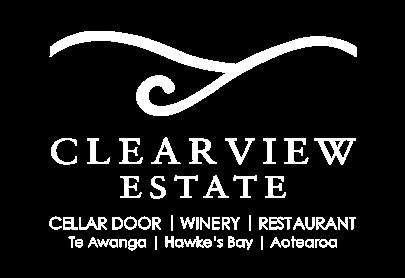


coffee |
| wine
| small
| mains
family
legendaryChardonnays open days Wed Thurs Frid Saturday & Sunday restaurant 11am - 3pm cellar door 10am - 4pm menuofAotearoa on line BOOKING ahead is RECOMMENDED clearviewestate.co.nz (06) 8750150 194 Clifton Road | te awanga since 1989 JohnStaniford March + April 2023 BAYBUZZ 57
lunch
plates
friends &
gatherings
Ideas + Opinion
Ian Thomas

Eggless
The current egg shortage is the result of major farming changes as the industry moves to cageless systems. The change has been accelerated by retailers, wholesalers, fast-food chains, and manufacturers as they target 2027 as the year they will no longer sell, distribute, or use eggs other than those produced from cage-free systems, namely barn and free-range.
This decision and its declaration have been a blow to the 30% of the New Zealand industry that has invested in the colony-cage system, believing they had more time before the complete banning of cages. Colony cages are large cages within which hens have access to perches, nest-boxes, and scratch pads. They have more room than in the old battery cages (outlawed 31st December 2022) and are thus able to stretch their wings.
A steppingstone en route from battery cages to barn and free-range production, the colony system is often able to be retrofitted into existing cage sheds. This negates the need for land purchase and construction of new cage-free farms.
Despite the colony system complying with the Animal Welfare Act, it is still a cage system. And it’s not what the group of large customers –who are calling the shots – want. The animal welfare lobby is relentless and powerful and will move their attention onto colony systems now the batteries have gone. All power to them. We don’t get better eggs from cage-free systems, but we certainly get a little warmth from knowing the hens have better lives.
Supermarkets, foodservice operators, fast food restaurants and manufacturers have made ‘Cage-Free’ commitments to their customers without their customers asking for it. While supermarkets are being highlighted
because they are the most visible, the change is happening across many major egg users. This is causing the egg shortage. And arguably, the price gouging felt by the end consumer.

New Zealand producers are looking at offshore trends with the growth of free-range and the number of customers who will stop buying colony eggs here in the next few years. Barn production is the next step to the eventual endgame of total free-range, but it hasn’t gained much traction overseas. Farmers, therefore, are reluctant to invest in barn production as they feel there is uncertainty around the longevity of the system given its slow growth and the rejection of the colony system by egg users here. Barn sales in British supermarkets account for 2% compared to free-range sales at 74%. Traditionally, NZ follows UK and EU industry trends.
The likely conclusion is that freerange is the best format to invest in to ensure longevity for New Zealand
egg farmers’ businesses. The cost of developing a free-range egg farm is at least $180 per hen space, and to service the egg needs of NZ there needs to be about 4 million hens in production. These are very large capital decisions often being made by family businesses.
Today’s shortage, which will be with us for at least six months, was created by the closure of battery farms and the slow pace at which those laying hens are being replaced by cage-free birds. This is made even slower by the hesitation of farmers due to the uncertainty of future market demands. It’s not just a case of opening the cages and letting the hens roam free.
Fresh egg imports are prohibited into New Zealand due to our low disease status and eggs are in short supply across the world even if we could import them. So, we’ll have to ride this one out and expect to pay more due to that old supply-anddemand equation.
58 BAYBUZZ March + April 2023
Life
In the wake of watching the plundering of our rich land, finding the talent that has helped shape Hawke’s Bay gives us hope.

We honor William Gummer’s architectural ability in two of his houses still standing tall after a century and John Buck’s vision in launching a New Zealand Poet Laureateship to celebrate Te Mata Estate’s centenary. Today Kate McLeay, with her indomitable spirit, puts us back on track to achieve our dreams. Yvonne Lorkin discovers someone who is doing just that, and Rosheen FitzGerald unearths emerging artists whose talents could shape our tomorrow.
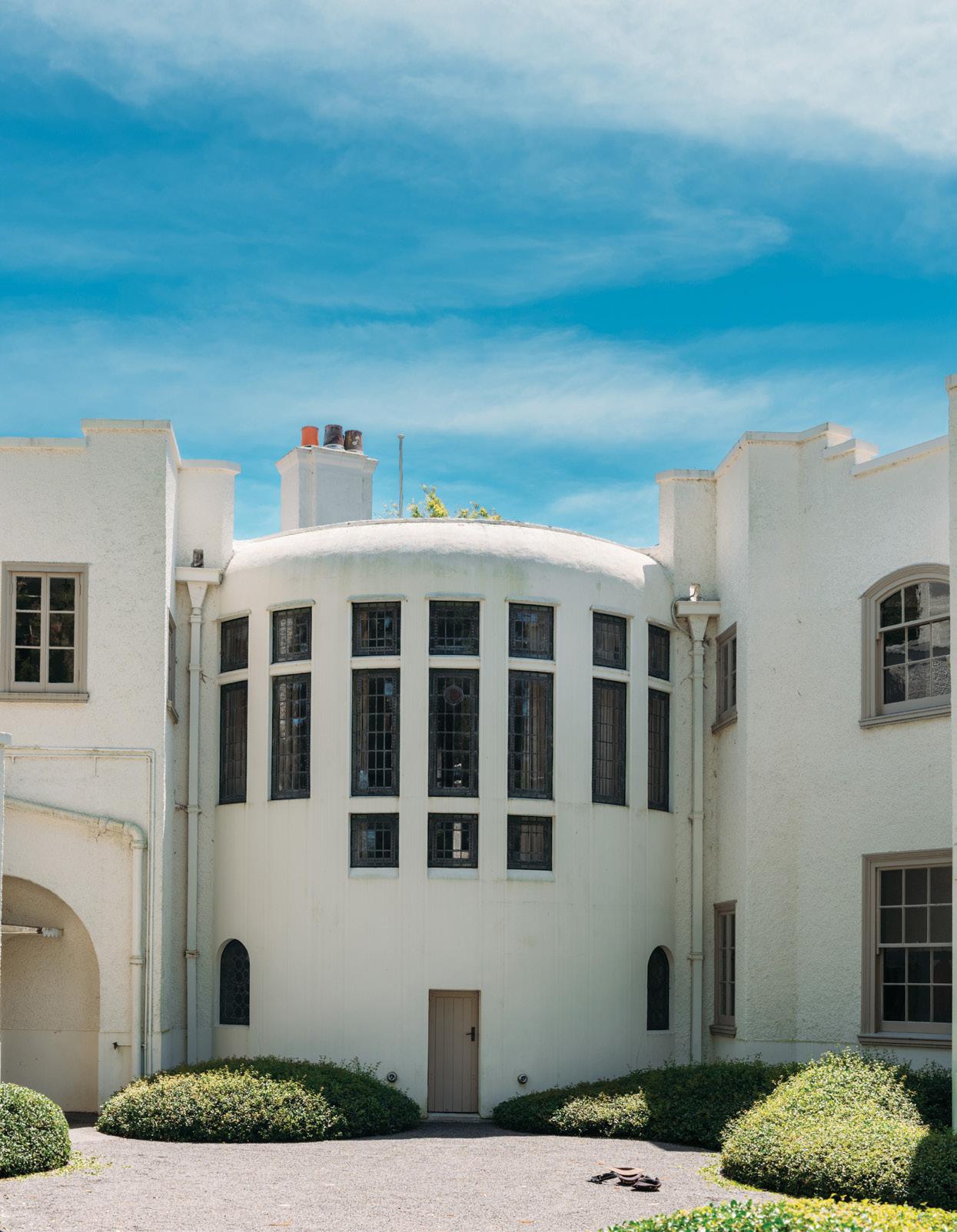 Hastings District Council is proud to sponsor BayBuzz culture and lifestyle coverage.
ABOVE: An exclusive peek inside two historic Havelock North homes.
Photo: Florence Charvin
Hastings District Council is proud to sponsor BayBuzz culture and lifestyle coverage.
ABOVE: An exclusive peek inside two historic Havelock North homes.
Photo: Florence Charvin
A TALE OF TWO HOUSES
 Story by Mark Sweet
Photos by Florence Charvin
Story by Mark Sweet
Photos by Florence Charvin
Life Mark Sweet
In Havelock North there are two homesteads of outstanding architectural merit. Built in 1916 and 1926, both are listed Category One with the Historic Places Trust, and deservedly so, as they are among the finest examples of grand domestic architecture in the country.
TAUROA
It is unsure how, in 1914, Thomas Mason Chambers came to choose architect William Gummer to design his new house after the original timber homestead burned to the ground.

Auckland-born Gummer had returned to New Zealand in 1913, after six years studying, travelling and working in Europe and the United States. Perhaps it was his cadetship with Sir Edwin Lutyens, famous for his designs of English Country houses and gardens, which persuaded Chambers to commission the young architect. William Gummer was thirty years old. He must have worked tirelessly to produce three design concepts. The fire was on 2 September 1914, and in a letter dated 22 November 1914, Chambers wrote, “We have carefully considered the plans submitted and have decided that the C plan with a little modification will suit us best.”
The modifications Chambers requested were numerous, but didn’t alter the basic plan, only positioning within. He asked that the entrance be moved to the side to, “be more convenient to get around to the motor house,” the music room be larger, the washhouse be part of the main building, instead of detached. And he asked, “We should like our private bathroom where it can get the morning sun.”
“Mrs Chambers,” he wrote, “asks for a storeroom off the kitchen,” and he suggested, “The servants hall I think would be better if larger.” He also asked for, “a small office somewhere near the library,” and, “A fireplace would be required in the sewing room and if possible, in the bedroom above it.”
A unique feature of Tauroa, cited in
the Historic Places description as innovative, came from a Chambers’ request. “We should like to have one or two balconies for sleeping on if possible.”
By February 1915 plans were agreed upon. Then the correspondence centered on construction materials. “If the walls are not to show any brick work then I think it would be better to build it entirely of ferro-cement,” Chambers wrote.
He was acutely aware of earthquake risk having witnessed the destruction wrought by the September 1914 East Coast 6.7 quake where, “not a brick chimney was left standing on the Coast.” However, he took Gummer’s advice. “On your assurance of the safety of brick panels, I’m quite willing to adopt it.” Chambers signed his letters with his preferred name, Mason.
The floor plan of Tauroa centers on the two-storied domed circular entrance hall with curved double return staircase to the upper floor. Two wings radiate from this hub forming a V shape, living downstairs, sleeping above, and flow passes through the staircase hall. The convex side of the
V is orientated to the sunny northern aspect, while the concave side forms the rear service yard. Most of the house is only one room deep which gives an outside impression of being much larger than it really is.
Construction began in 1915 and took two years to complete. External walls are double brick, with a cavity between, supported by reinforced concrete pillars and beams. Gummer’s confidence in the construction method was tested in the 1931 Napier earthquake. Tauroa survived unscathed.

In tune with the Beaux-Arts Tradition, Classical Revival, and Arts and Craft Movement, Gummer’s design of Tauroa is a modernistic blending of traditions, similar to Renee Mackintosh in Scotland (The Hill House 1902) and Frank Lloyd Wright mansions in Oak Park, Illinois.
Downstairs, Tauroa rooms connect seamlessly, dining room, music room, and library radiating from the hall, which is grand and proportioned, an inhabited work of art. Upstairs the four main bedrooms branch from the spacious circular gallery. Curved walls


March + April 2023 BAYBUZZ 61
soften spaces and Gummer’s room configuration is masterful.
Attention to detail, quality materials, and craftsmanship, also make Tauroa a masterpiece of design and build.
Window joinery is kauri, flooring is jarrah, as are the curved staircase bannisters, supported by iron work, where every section is different, shaped to fit the curve. Craftsman blacksmith, Mr McDowell, set up his forge on site.
Cabinets and bookcases in the library and music room, built in seating, and the curved dining room sideboard are superbly crafted, as is the beaten copper fire hood with Latin inscription, “Bless the Lord, fire and heat, praise and extol him greatly.”
Tiling in the circular hallway is finely fitted and has worn the test of time, as have the much-touched door finger plates entwined with the initials, T.M.C.

An innovation never commissioned is a vacuum system ducted throughout the house. Its motor was aboard a merchant ship sunk by a German U-Boat in 1916.
Tauroa was home to Mason and Madge Chambers for nearly thirty years. They were great entertainers, many old photographs depicting terraces and garden, crowded with guests. When the Governor General visited Hawke’s Bay, he stayed at Tauroa and they raised the Union Jack.
After Mason Chambers died in 1948, Tauroa was taken over by his son Maurice, until his death thirty years
later. Maurice left his estate to his grandchildren and Tauroa was offered for sale by auction in November 1983.
In a letter to Council dated, 4th October 1983, a ‘Consortium at Wanganui’ enquired if Tauroa could be ‘developed into a high-class restaurant/ dine and dance establishment’. There is no record of a reply.
Interested in the sale were Hamish and Audrey McHardy. Hamish recalls visiting Tauroa prior to the auction and Jack Chambers asking him the purpose of his visit. Jack was a trustee of his brother’s estate. Hamish did not declare his interest, but when the auction attracted no bidders, he was offered Tauroa at the reserve price which was considerably lower than he expected. No doubt Jack Chambers was pleased with the transfer. Hamish is his godson. With their budget unmet the McHardy’s additionally purchased around three hundred acres bounding the house. The land was zoned rural at the time.
By the mid-nineties Hamish had planted over seven thousand trees on unstable land, mostly eucalyptus and kowhai to encourage native birds, and land in the gullies was set aside as reserves. Staged subdivision followed. William Gummer is remembered with a street named after him.
Hamish and Audrey McHardy have preserved and maintained Tauroa to a high standard with very little alteration works.
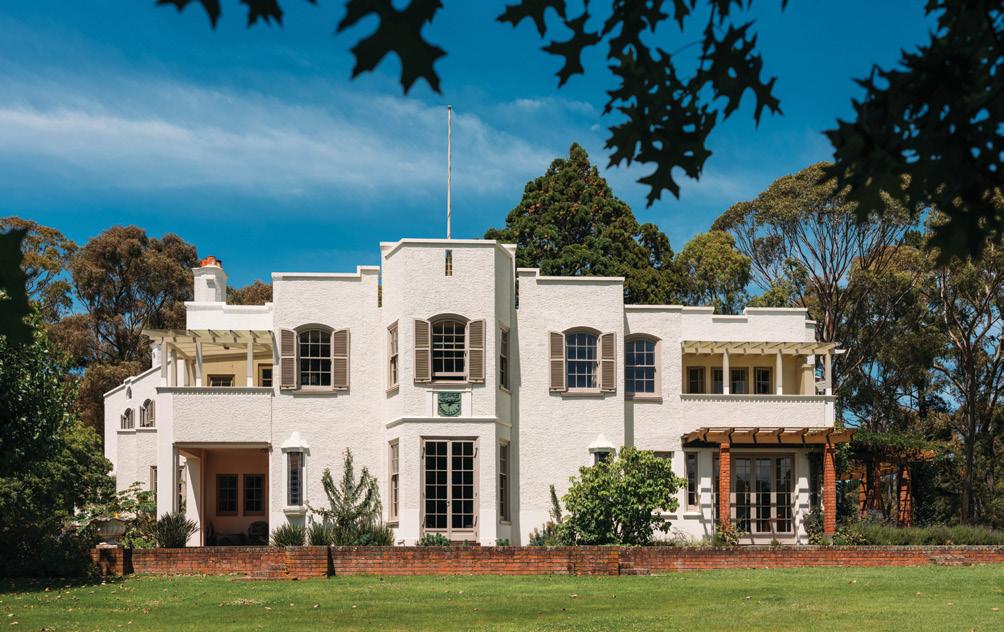
One innovative venture was to tile the bathroom floors. Audrey contacted an English bespoke tile maker featured in a magazine. Photographs of house and garden features were taken, dimensions supplied, and the maker shipped boxes of tiles, which were installed by two visiting German expert tilers. Years later the tile maker visited Tauroa, and Audrey recalls he wept at the sight of his work so beautifully rendered.
The kitchen was modernised in 2002. Design work was by Andy Coltart. The butler’s pantry was removed to give easier access to the dining room, casement windows were replaced by full height French doors, and the servants’ hall was adapted to a cosy snug adjoining the kitchen.
A feature of Tauroa’s preservation is the care and attention Audrey continues to tend the garden, also designed by Gummer, with changes over the years as trees matured.
62 BAYBUZZ March + April 2023

March + April 2023 BAYBUZZ 63

ARDEN
When, in 1925, William Gummer was commissioned to design a home for Maurice and Miriama

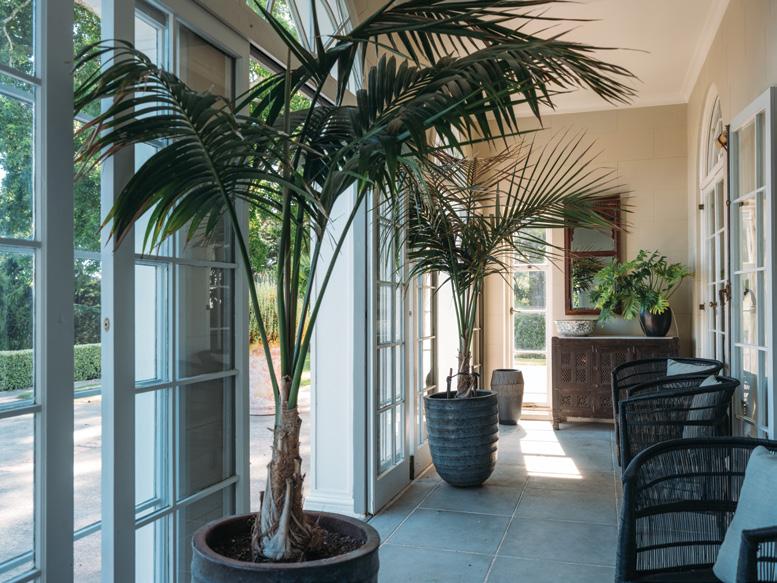
Chambers, he did so as a member of the family. Gummer married Miriama’s sister, Oiroa Batley, in 1923. They met years earlier at Tauroa. Maurice was Mason’s son.
In the same year as his marriage, Gummer had formed a partnership with Charles Ford, and in the opinion of curator, Paul Waite, Arden has features which appear in houses designed by Ford, indicating the work was a collaboration. Senior draftsman for the project was Francis Gordon Wilson, who later became Government Architect, famous for the Dixon Street Flats in Wellington.
First sight of Arden, up a long driveway, is a stunning introduction to this grand house sitting on the crest of the hill.
The north facing front facade is symmetrical and perfectly proportioned, described as Stripped Classical style. The ground floor arched doorways contrast with rectangular upper floor windows and doors. A repeated motif on the parapet seems a symbol for the geometry of the design, and in a hat tip to classicism are two Greco columns hugging the portico. With white plaster finish, arches, and terrace balconies, Arden has an Italianate/ Mediterranean look.
The main entrance is from the rear courtyard. A Juliet balcony in sight of the entrance is a decorative touch, perhaps referencing Arden’s connection
to William Shakespeare. The Forest of Arden appears in his play, As You Like It From the hallway, the study, library, and sitting room are immediately accessible. An elegant staircase curves to the upper floor, and the geometric symbols from the frontage, are repeated in the fret work. Upstairs, most of the bedrooms open onto a terrace and linked balconies, for sleeping on hot summer nights.
An unusual feature is the enclosed sunroom attached to the sitting room, originally a billiard room. It acts as a visual filter to the outside, and a heat trap on sunny but cold winter days. Semi-circular fan lights above the French doors soften the rectangle. In the library, walls are fitted with finely crafted glass-fronted totara bookcases. A small alcove connects to the

March + April 2023 BAYBUZZ 65
billiard room for passing the telephone, and French doors lead to the terrace.
A corner cabinet in the dining room is described by Paul Waite as Lutyenesque, influenced by Edwin Lutyens, who Gummer worked for in London.
Construction was the same as Tauroa, ferro-steel frame supporting bricks, which came from a brickworks in Havelock North set up by Samuel Eves in 1907. He bought five acres with a clay spur on the corner of Busby Hill and Campbell Street, set up crushers and kiln, and the clay was mined by his family until depleted in the 1960’s.
The last bricks built the houses in Shortland Street, the levelled site of the old brickworks.
In 1944 Arden was sold to Woodford House. For the next twenty years it operated as a boarding hostel and domestic sciences hub for the school, and was named Hodge House, after the school’s founder Mabel Hodge.
Maurice and Miriama Chambers moved to Tauroa.
Council records show the first enquiry to convert Arden into flats was received in August 1962, but it wasn’t until 1965 that a company, ‘New Arden
Limited’, were granted permission, and purchased the property. Principals of the company were Nan Whitlock, wife of Bill Whitlock, long time editor of the Herald Tribune newspaper, his daughter, and her husband Colin Treadwell.

The Treadwell family lived in the main body of the house. The wing was converted into two flats on each floor.
In 1985 Council agreed to a request from Rick and Vicki Lowe for Arden to be a Guest House. The Lowe’s refigured the flats to suit their accommodation needs, and they built a porte cochère to cover the entrance, imitating the
66 BAYBUZZ March + April 2023
building style.
A Herald Tribune article dated 9 January 1988, announced Arden had sold ‘for the highest price ever paid for a house in Hawke’s Bay, $825,000. The new owners, Pam and Tom Donnelly, planned an upmarket Lodge, with ‘a staff of six, a chef, a second chef, a kitchen hand, a gardener and a wine waiter.’
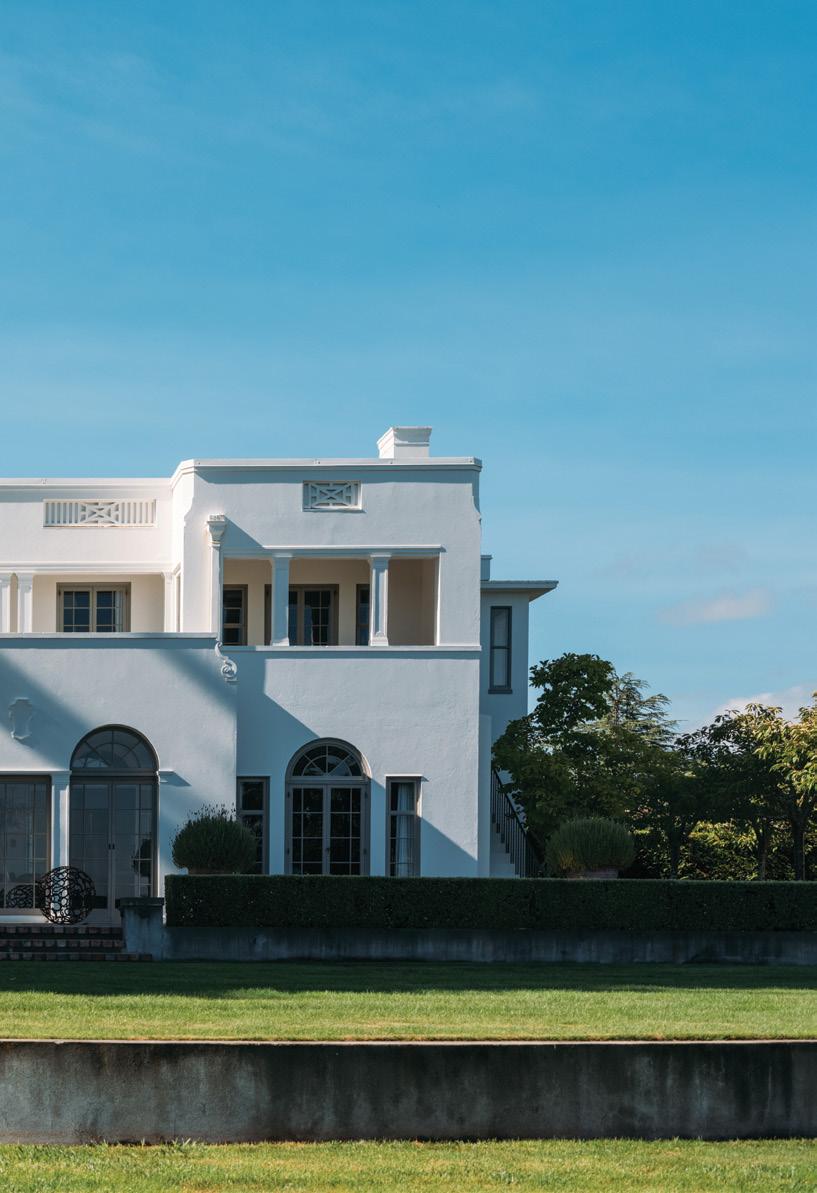
With only five guest rooms, high overheads, and an undeveloped tourism industry, the business never took off, and Arden changed hands again in December 1989.
New owners, Paul and Jennifer
Officer, held Arden for seventeen years, until selling in 2006.
In a curious loop to Chambers time, Tauroa and Arden, are again owned by the same family. The purchaser was Jonathan McHardy, Hamish and Audrey’s son.
With Andy Coltart designing and supervising, and Redmond Builders contracting, Arden has been meticulously restored.
Fortunately, the damage wrought over the years, was remedial. Andy sourced demolition jarrah from Woodford House to repair flooring,
My strong work ethic, integrity, commitment and dedication to my clients shows my determination to achieve the best result possible.
I believe my clients want to feel protected, educated and in control throughout the process. I build a strong relationship with my vendors and ensure I develop a unique strategy individualised to each property.

A strong relationship with my vendors is essential for a successful outcome.
Call Sophie now for a considered and proactive approach to real estate.
+64 27 273 0446 sophie.sheild-barrett@nzsir.com
Sophie Sheild-Barrett, premium real estate expert.
Each office is independently owned and operated. SHB Ltd (licensed under the REAA 2008) MREINZ
and original rimu trim was matched and skillfully applied. All fireplaces were refurbished, not to original, but a plaster treatment, repeated in a new outdoor fireplace.
In a past time natural timbers were painted over. Some have been stripped and restored. The staircase, however, originally exposed jarrah, is painted white, giving lightness to the space, which in old photographs appears
gloomy. The kitchen has been modernised, and full height doors open onto an east facing terrace overlooking the swimming pool.
In addition to the house renovation, a slice of Tauroa has been built on the reshaped grounds. Gummer had designed a tennis pavilion that wasn’t built. His plans and construction method were faithfully followed, which required boxing and pouring



concrete, reinforced with steel, and brick cladding. The elegant building now serves as a pool house.
Jonathan and Christina McHardy have restored Arden to its original purpose, a family home, and in doing so recreated the integrity of the Gummer and Ford design. Tauroa and Arden are architectural Taonga, and it is heartening they have kaitiaki who care deeply for the their heritage.
68 BAYBUZZ March + April 2023
New Zealand Sotheby’s International Realty are proud to have won the Asia Pacific Property Award

Best
Real Estate
Agency
We are delighted to announce that we have won the International Property Award for “Best Real Estate Agency 5-20 Offices Asia Pacific 2022-2023”. We are incredibly honoured to win such a prestigious award. Thank you to all our teams and clients who have made this recognition possible. Contact us to experience the highest level of expertise and service in the real estate industry.
NZSOTHEBYSREALTY.COM TARADALE HAVELOCK NORTH +64 6 835 8399 +64 6 877 8199 NAPIER +64 6 835 8399 AHURIRI +64 6 833 8950
ASIA PACIFIC 5-20 OFFICES Each office is independently owned and operated. SHB Limited (licensed under the REAA 2008) MREINZ.
Great excitement followed the announcement of the brand new and very shiny Poet Laureate for the 2022 –2024 tenure. Our poet is the fabulously glamorous Chris Tse who will bring to the role an element of bling, of pizazz, and a charm all his own. In addition of course to the very serious business of advocating for poetry and encouraging the reading and the writing of it.
Story by Louise Ward
CHRIS TSE: A POET LAUREATE TO MAKE OUR TOENAILS TWINKLE

Chris’s official response to his appointment is this carefully considered statement:
“Since the public announcement, the significance of the role and the legacy that I’m now a part of has been a lot to grapple with, but I feel very honoured to be entrusted with this role for the next two years. It means so much to me that the appointment process begins with public nominations, so I really feel like I have the support of my peers and the community behind me. I’m excited about using my time as Poet Laureate to collaborate with poets around the country, and to create opportunities for poets and poetry to reach new audiences.”
Reading between the lines, his mind was clearly blown. But the response he gave to Vanessa Mei Crofskey for Pantograph Punch when asked what he will be wearing to the appointment ceremony shows more of who we are dealing with here:

“So many possibilities! I’d love to collaborate with a queer and/or Asian designer for something special that incorporates my Chinese heritage but is also super gay. There will be poetry and fashion over the next two years, mark my words!”
Chris hails from Wellington but the Poet Laureate award in Aotearoa New Zealand is firmly anchored in Hawke’s Bay. Here is its origin story.

“Finally,” breathed the collective breath of the nation’s poets, who had been given recognition, and a home (and some money and some wine).
Once upon a time, John Buck, owner of Te Mata Estate Winery, had his ear caught by a conversation at a party at which several government ministers were present. The conversation concerned a flat in Bloomsbury, London, where a New Zealand poet might be offered a residency. Nothing came of the plan in the end, but a seed had been planted.
When John was wondering how to celebrate the centenary of Te Mata Estate, he remembered the Bloomsbury idea and the seed began its germination. The writer, publisher and wine expert Keith Stewart put John on to Brian Phillips (then publisher at Random House) and along with Bill Manhire (a mentor to his son, award winning writer Toby Buck) they gathered the people who could make things happen. Aotearoa should have a Poet Laurate, a champion for the art that ‘makes your toenails twinkle’, as Dylan Thomas said.
The wider cast of players included John’s friend Tom Mulligan and Ngahiwi Tomoana, then Chair of Ngāti
LEFT: Poet Laureate, Chris Tse (photo supplied).
RIGHT: Jacob Scott with a selection of previous tokotoko he has carved. Photo: Florence Charvin
March + April 2023 BAYBUZZ 71

When John was wondering how to celebrate the centenary of Te Mata Estate, he remembered the Bloomsbury idea and the seed began its germination.
72 BAYBUZZ March + April 2023
John Buck. Photo: Florence Charvin
Kahungunu Iwi, who felt the award had an obvious spiritual home at which to anchor the poet and the proceedings surrounding them. That place was, and remains, Matahiwi Marae, of which Tom was, helpfully, Chair. Jacob Scott was to be the artist charged with carving the tokotoko, a ceremonial walking stick, traditionally a symbol of the status of a speaker on the Marae and the perfect token for the poet.
In 1996 Bill Manhire was appointed New Zealand’s first Poet Laureate, paid partly in wine after the century’s old British tradition, plus a lot of money and a book deal. “Finally,” breathed the collective breath of the nation’s poets, who had been given recognition, and a home (and some money and some wine).
Te Mata Estate created five Poets Laureate over ten years: Bill Manhire, Hone Tuwhare, Elizabeth Smither, Brian Turner and Jenny Bornholdt, after which time John and Bill came to the conclusion this really should be a government-funded award. Michael Cullen, then deputy prime minister and a Shakespeare aficionado, supported the idea and National Library took over responsibility in 2007 under the wing of facilitator, Peter Ireland.
Thankfully, Te Mata Estate still provides the wine.
Since 2007, seven more Poets Laureate have been welcomed onto Matahiwi Marae and received their tokotoko: Michele Leggott, Cilla McQueen, Ian Wedde, Vincent O’Sullivan, CK Stead, Selina Tusitala Marsh and David Eggleton.
So, what’s the journey from notification to inauguration? And what does a Laureate do anyway?
The Laureate’s stipend is $80,000 and this is their job, as stated on the National Library’s website:
For a two-year period, the Laureate is supported by the National Library to create new work and promote poetry throughout the country.
The Laureate is an accomplished and highly regarded poet who can speak on behalf of New Zealand poetry, and to its readers.
Chris’s inauguration will take place at Matahiwi Marae on Saturday 22nd April, followed by a public event in the evening hosted by Hawke’s Bay Readers and Writers Trust. But there is a lot of work to do before Chris gets his party.
Chris will have several conversations with Jacob Scott about the creation of his tokotoko. Jacob is principal of Scott Design, former director of Te Kura Toi o Te Wananga o Aotearoa and founder and head of EIT’s Art & Design School. He is
one of Aotearoa’s greatest contempo rary artists.
Jacob likens the tokotoko to a talking stick, and a fire stick; it will feature Chris’s whakapapa, where he fits in life, his story shaped into its symbolic form by Jacob’s hand. It will serve to anchor him to Hawke’s Bay, to Matahiwi, and to his role whenever he uses it. Their kōrero will be pivotal but as Jacob states, “A poet is a poet, an artist is an artist. I take the liberty of making my own piece of work.” The matua, or parent tokotoko is held at the National Library and carved so that if it were to be dis mantled, the pieces could be rubbed together to make fire, the flame passed from the matua to the poet.
Matahiwi Marae is an integral part of the Poet Laurate story, Ngāti Kahungunu being kaitiaki of the award since its creation. John always felt that it made sense to anchor the award here in this place, to Te Mata Peak as our maunga, to the Tukituki as our awa. The recipient of the award, and of the tokotoko, becomes attached to Te Matau ā Māui. Jacob again, a wordsmith himself: “It will be his Tūrangawaewae, his ground to stand upon, and spring from.”
The day at Matahiwi is a beautiful experience for the poet. Chris and his party will be welcomed with a pōwhiri, there will be readings, waiata, oratory, mooring Chris to the spiritual home of the Laureate. The poet Marty Smith will MC proceedings, offering her own mag ical words, as Chris takes on the mantle. There will be kai, korero, a new whānau. And then there’s the party. After what is surely an incredibly emotional day, Chris will celebrate with his public, the voices he represents in his role, dressed no doubt, in spectacular fashion.
This year, the Big Night In with the Poet Laureate, will take place on Saturday 22nd April at Toitoi’s Assembly Rooms at 7pm. Chris will be joined by Marty Smith and Ben Fagan as MCs and his own poetry crew: Emma Barnes, Nathan Joe, and Louise Wallace.
It’s a deeply significant day for the poet, personally as of course the attention is directed toward him, but on a greater level because it isn’t about him, it’s about all of us. It’s about the embodiment of the power of words to change everything. And it began here, in Hawke’s Bay, with the seed of an idea nurtured by a passionate group of friends.
For more information on the Big Night In with the Poet Laureate, visit www.hbreadersandwriters.co.nz
Sommelier Sidebar

We all know the classic food and wine pairingsChampagne and oysters, Cabernet Sauvignon and steak, Chardonnay and seafood - but what happens when you fancy something a little outside the box? Smith & Sheth Oenothéque sommelier Jason shares his take on four unconventional pairings you can try at home that will have your taste buds tingling

1. Cabernet Franc and gourmet burgers

I ' h e so versatile company any style Its firm d fruit, silken e and smooth ns make for a deliciousness burger night
Rosé and p Sate your t tangy rosé the salty b favourite s perfect exc a bottle of Heretaung on an autu

3 Orange wine and curry with simple but t flavours create balance with the plexity of Indian sine The North terbury Orange yramid Valley is a great example that looks and tastes great, and won't get lost in the spiciness of the curry

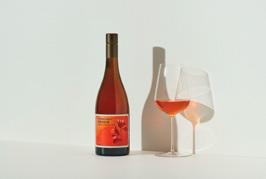
4. Goat's cheese and Sauvignon Blanc They say 'what gro together, goes tog and like Sauvignon Blanc, goat's chees has origins in the Loire Valley It's fr citrus flavours are perfect with the en palate of our just-released 2022 CRU Wairau Sauvignon Blanc
Have a food and wine question? Call into the wine bar for a tasting or chat - we love answering our guest's creative (or curly!) questions
www smithandsheth com
Jason
Life Wellbeing / Kate McLeay Yes! You can do it
Four ways to beat overwhelm and live the beauty of your dreams
Do your big dreams overwhelm you? CHARGE ON treasure because YES! You CAN do it. As Martin Luther King Jr said “You don’t have to see the whole staircase, just the first step”.
If the size of your dreams vis a vis the busyness of your life cancel each other out or you need a boost of motivation, then read on. The world needs you AND your beautiful dreams.
Let’s face it, we all know what ‘overwhelm’ feels like. Finding balance within the demands of family, work, friends, community service and so much more in this highly charged, changeable world can feel like a real circus act sometimes. I like to look at the onset of overwhelm as a powerful message that we have a choice to listen to or not. One that whispers love notes beneath the noise. A message to slow down. To take stock. To practice self care. To work smarter not harder. To dig deep. To up level. To remember and activate the beauty of your dreams.
Here are some top tips I’ve gathered from experience and from folks much wiser than me in this journey of many chapters called life. It’s said that everyone has a chapter they don’t read out loud.
I’ve got a few. Within that few I’ve also got those which make me still pinch myself and ask if they are really real.
One as a school principal leading a team that turned around a now stellar International School in Uganda. The other is our current gig at Cape South Country Estate and Retreat Centre with a collection of legends arguably bringing to life some of the most epic and transformational wellness retreats and experiences on the planet. Living the dream may look like paradise on the outside. But let me tell you, having a structure
and support to get there can really help when the chips are on the table.
The Uganda chapter I wish I had had the list below when I embarked on the school principal gig in Uganda. The truth was I was as surprised as anyone to get the job. The school was ailing. When I took the reins there were just 26 students left … 2 of them my own.
At the time my beautiful man Cam was just as busy as I was with our adventure tourism business. Whitewater rafting had expanded to include bungee, jetboat, a campsite and a luxury lodge on an island in the middle of the Nile. Thrown into the mix were epic adventures like navigating upsteam to a new, longest source of the Nile river in Rwanda. I mean, who does that?
My angels had an eye out for me. They came in the form of angels on earth. The staff who stayed at the school when I took over and the ones who came were truly phenomenal. So were all of the precious students and many of their parents. I learnt to delegate. To share my vision. To listen to theirs. To think outside the box.
Another angel on earth came from an unlikely quarter. An older gentleman who was the director of the American International School came to meet me because he wanted to find out why students were coming to us instead of them. He took me under his wing. He provided sage advice on every school-related subject imaginable. He was a remarkable and generous mentor for whom I remain forever grateful. Success breeds confidence. The school quickly grew to 260 pupils and we built 10 classrooms. It has since gone on to far more greatness. I still love them all fiercely from afar. In the end I nailed the first 3 points below.
The last one not so much. I could set priorities for my workload but not for me. The concept of boundaries and non-attachment were like a foreign language. The chapters I didn’t want to read out loud were yet to bestow their wisdom.
1. Create and give thanks for your vision
“You have to dream before your dreams can come true.”
A. P. J. Abdul Kalam
Organisational Psychologist Benjamin Hardy advises us to set absurdly ambitious goals. I totally love this. Throw out the copy book and write your own. A clear vision is like setting a compass point. Feeling the feeling of them already here is like the wind in your sails. Giving thanks and being grateful is the activator. Appreciate what you have already got, notice the wins and take the lessons along the way AND give thanks for the future manifest now. However you wish to dream your dreams – brainstorming, journaling, meditation, vision setting, lists, the power of attraction, manifesting models, strategic planning –get to it. And DREAM BIG … be absurdly ambitious!
2. Be prepared to step outside your comfort zone
“A comfort zone is a beautiful place – but nothing ever grows there.”
Anonymous
Mindfulness teaches you to turn towards your discomfort and observe your mindset and use this as a springboard to grow. Whether it be fears, doubts, judging yourself harshly,

74 BAYBUZZ March + April 2023
negative self-talk, getting stuck in unhelpful stories about yourself, the world and your place in it. Get present and observe. Know that you don’t need to believe anything you tell yourself. Or what others tell you, for that matter. Unless it serves to uplift you. Your choice. Study and utilise the concepts of mindfulness and be the gatekeeper of your mind. Learn about the concept of non attachment. Embrace discomfort so you can fight for your dreams with both gloves off.
3. Perservere
“Character consists of what you do on the third and fourth tries.”
James A Michener
My dear old Dad Charles used to say that if you give up on your dreams, your dreams will give up on you. Expect challenges and reframe them by looking for your learnings. Take time to go back to the drawing board and seek trusted counsel if needed. Take the wisdom and don’t let the setbacks define you. As Nelson Mandela said, “it always seems impossible until it is done.”
4. Set boundaries & prioritise
“You will never find time for anything. You must make it.”
Charles Buxton
You know the saying you can’t give from an empty cup. Set healthy boundaries
around yourself and your time. Make lists of your priorities and batch them together and blast them out when you are at your most productive. Remember every great journey starts with a single step. Outsource and delegate where you can. Do what you need to do to stay energised and healthy, constantly upgrading and on point. Prioritise sleep, eat well, exercise your body and mind, stay connected and be supported and inspired by high vibing humans who believe in you AND in your dreams.
The Cape South chapter
A decade or so later this current chapter of dreaming up what more is possible is at the Grand Old Duchess of Cape South. It feels like a dream come true. This stunningly beautiful French colonial style homestead in the coastal foothills between Waimarama and Waipuka (Ocean Beach) with 8 divine ensuite rooms, a yoga studio, mineral pool, gym, spa and sauna within 16 acres of paradise has everything and more. There have been many challenges. Hasn’t that been true for many in the last few crazy years? But I’m better at embracing discomfort these days. I’ve learnt to let go of the boulders I can’t move. The loose stones on this unpredictable journey don’t keep me up so much at night. I also have my main man Cam by my side. Nothing much fazes Cam. He has the energy of an ever-ready bunny and an infallible self-belief and optimism that anything and everything is possible.
I’m still a work-in-progress but I mostly have my own back these days after some solid years of meditation, yoga, study and self-development. And again my angels have also delivered in droves. Precious people who have come and blessed our journey. So many of them, it humbles me deeply. Too many to mention by name and what they’ve done, but they know who they are. We do too. Sent from heaven. Every one of them.
My last word. Dream your dreams, treasure. Take what resonates for you from the words above. Or better still make up your own words. Read the books below if you like (actually I listened to the bottom two as I’m a bit dyslexic and they have some very big words in them) … and if like me you love a good chat to your angels then keep that up. Hand on your heart. Whisper this sweet everything to yourself: “Yes. I can do it.” One step at a time. Great things will surely grow.”
• Into the Magic Shop
by Dr James R. Doty
• Becoming Supernatural Dr
Joe Dispenza
• The Master Key
by Charles F. Haanel
Kate McLeay a mindfulness mentor, yoga teacher and retreat host based out at Cape South Country Estate and Wellness Retreat near Waimarama in Hawke’s Bay. www.katemcleay.com

March + April 2023 BAYBUZZ 75
ARTISTS IN RESIDENCE

Our ongoing series discovering the talents of the many artists of Hawke’s Bay.
Story Rosheen FitzGerald
Photographs by Florence Charvin
childhood friends on Hastings’ streets. With such an insatiable artistic spirit, performance art was a natural progression. A Blossom Parade favourite by day, by night lighting up Spaceship with the Fucked-Up Family Circus, Smith as KooKoo channels anarchic glee from pavement to stage.
A walking juxtaposition, the ‘ugly’ moniker scrawled across canvases and etched into his face contrasts with his objectively beautiful visage. An obsession with filth contradicts the extreme cleanliness of his practice, his love affair with bleach. If FitzGerald’s measure of intelligence as the ability to simultaneously contain opposing ideas is true, then he is a genius.
His preferred materials are free, painting on whatever large surfaces he can scavenge – curtains hold paint, don’t require priming, and are easily salvaged, along with disused house paints. 90% of his work, from laying down background to fine detail, is done with a 40mm brush. Waiting for paint to dry is his favourite part of the process.
He might be Hastings’ greatest painter you’ve never heard of … yet. At just twenty-seven, Phillip John Smith’s work eschews definition, scrawling all over genre from abstraction to expressionism, realism to surrealism. Hungry to hone his craft, he absorbs influence from disparate sources, regurgitating prolifically all over his canvases.
Early artistic experiments were discouraged, provoking concerns over the darkness of his subjects, the strange insights they provided to an addled mind. But despite his attempts at suppression, the ideas festered, germinating beneath the surface to emerge on his skin.
He began tattooing himself, “drunk, for shits and giggles. I had no interest in art whatsoever. I didn’t care for it,” he remembers. Rather, expression attempted to purge his mind of the corruption inside, to drag it into the light. This remains a central tenet of his work, exposing and examining the ugly underbelly of an unquiet psyche, finding comfort in the macabre.
Heinous imagery mottles his entire left side, mostly self-executed by his own right hand; his right side clean in a rare gesture of self-control. “Everyone tells you to be yourself. If I’m myself, I’ll end up in jail or dead,” he obtusely explains.
This manifests in his alter ego, KooKoo the Clown, born from a self-made mask, used to take on a new persona, married with his considerable physical skills. The flips and tricks he picked up in Hastings’ concrete wastelands were honed by a brief youthful foray into MMA, the international cage fighting death match sensation. For Smith, clowning began as a tactic to draw the ire of hoodrats who plagued his
I’m trying to portray human emotion so I paint humans. They have no culture, no race, no gender, they’re all me but they’re not me, they’re a little bit of everyone, inspired from my mind ...
Phillip John Smith
“I make a mark. Then make another mark that makes that mark better. I have no plan. Every time you put the paint on you see something else. It’s intuitive, mind and body work together to make something new… to create something I’ve never seen before, something I thought wasn’t possible,” he elaborates, “I’m trying to portray human emotion so I paint humans. They have no culture, no race, no gender, they’re all me but they’re not me, they’re a little bit of everyone, inspired from my mind … I despise copying photos, it’s not art, it’s design. I’m not a printer, I’m a human.”
Murals and contributions to group shows at his Spaceship studio aside, despite his huge and varied oeuvre, Drunk and Ugly in Hastings, is the first public opportunity to view the fruits of Smith’s tortured toiling in the darkness. Intentionally shunned by conventional galleries, like the work itself, he forces the viewer into an alien, uncomfortable space, consciously raising a middle finger to the art establishment who cannot help but sit up and take notice.
Drunk and Ugly in Hastings is showing now.
March + April 2023 BAYBUZZ 77
Phillip John Smith
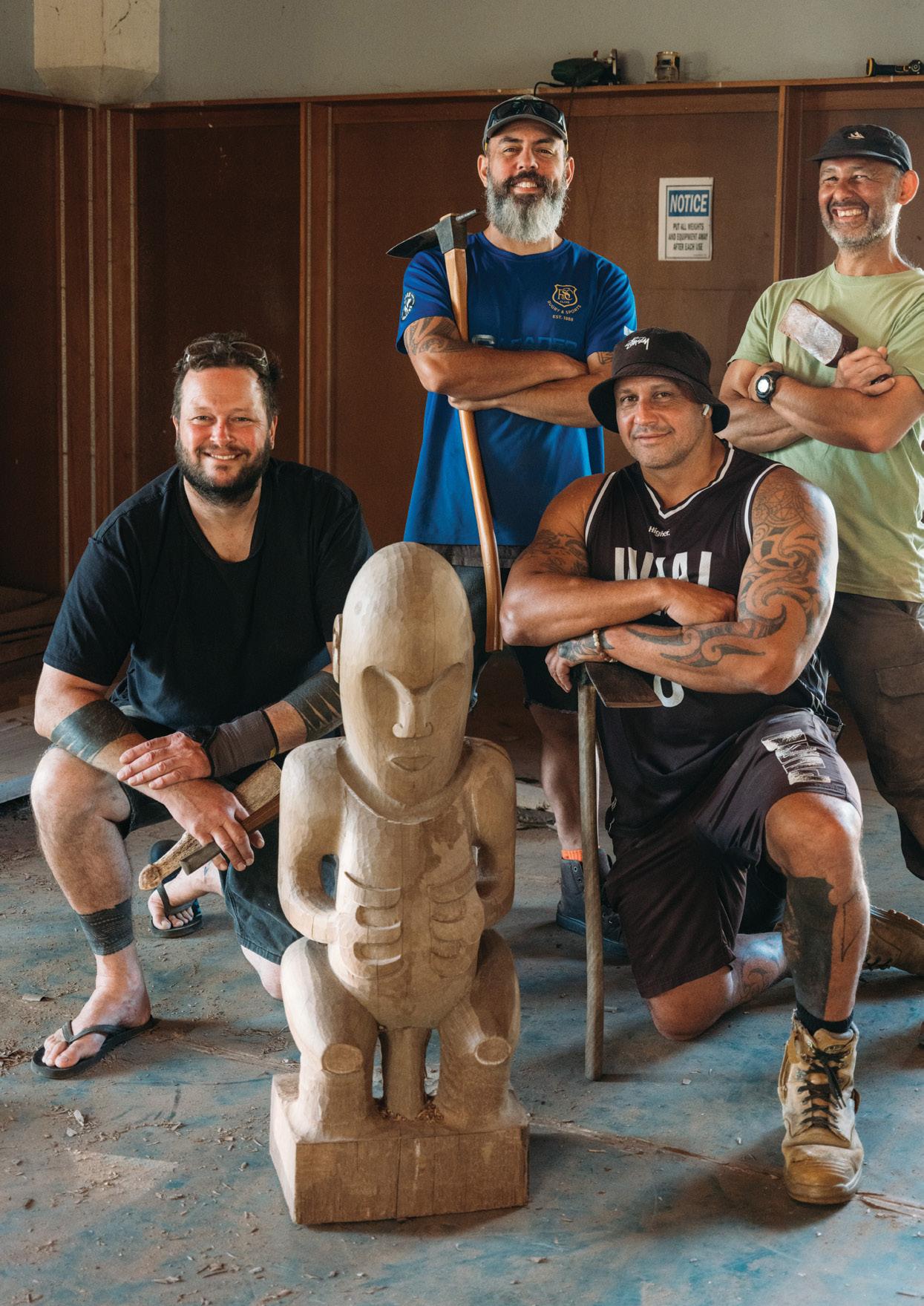
Waiaroha Kaiwhakairo
Hastings Council’s shadow hides a hive of activity. The Waiaroha project is in progress. Heavy machinery and high vis construction of our new water treatment plant, council’s answer to the increasingly dire water crisis, catch the eyes of passersby.
Adjacent, in the Heretaunga Tamatea Settlement Trust-owned Tuaka building, a team of carvers chip away at what will be the whare ako, a place of learning combining whakapapa and Māori science to teach future generations to preserve this most precious, threatened resource.
Master craftsman, Charles Paringatai, carries the torch of tradition both in his kōrero and his practice. “We’re bringing awareness to the ecology of water before colonisation. Before we had books we told and recorded history through our whakairo, our kōwhaiwhai, our tukutuku,” he explains.
Together with fellow kaiwhakairo, Nathan Foote, Caine Tawhai and Phil Belcher, a wealth of pūrākau tinged with mauri and wairua are poured into this project, along with prodigious skill, meticulous planning and heartfelt intention.
Enormous tōtara logs, sourced from the Manawatū River, are sketched with chalk, hacked with adze and power tools then refined with steel chisels and occasionally traditional pounamu, revealing forms rendered expertly with stunning surface detail.
Informed by stakeholders, they chart the kōrero they wish to convey, dividing component parts and narratives between them to achieve compositional balance in their complementary styles, converting pūrākau to symbolism-laden imagery.
The poukaiawha (front pole on the porch of the Whare Ako) at the piece’s heart, charts the whakapapa of atuatanga. Where it meets the outstretched arms of the maihi, is Io Matawai, the supreme being particular to the Kahungunu telling of this tale, and his bride, Whaea Rikoriko, personifying the glimmer of light on water’s surface. From their union came the universally recognised Ranginui, ingrained at the tekoteko topknot, his son Tāne-nuia-rangi, the forest god, who ascended to heaven to receive the kete of knowledge, nestled between his legs. His mother, Papatūānuku provides balance at the base of the poukaiawha, representing their separation which resulted in the creation of the world as we know it. Below Tāne-nui-a-rangi his consort Hine-tūpari-maunga, made from clay and mother of rocks – Pūtoto, Tuamatua, and crucially to the educational element of this tale, Parawhenuamea, who emerged as pure spring water only to gather the silty maunga run-off that today causes so much environmental grief. Another of Tāne’s wives, Hine-ite-repo, personifies the wetlands, the once abundant precious fibres – harakeke, raupō and so forth.
Flanking the poukaiawha are twin maihi, depicting kaitiakitanga, guardianship of our waterways.
Karukaru, ruahāpia, ruamano, pāpāwai, moremore and crucially takaparata all feature. According to
received kōrero, the latter travelled up the Ngaruroro on the Tākitimu, the Kahungunu waka, before morphing into a hammerhead shark, burrowing into our aquifer to create our vital clean water source. Takotowai, a derivative of Pūtoto, is the personification of our natural filtration system. Her many children of stone mated with water women – Rākāhore with Hine-maukuuku, making clay; and Makatiti with Hine-waipipi to produce shingle. Here on the pare and whakawae, pūrākau expertly and intricately rendered in whakairo filter ecological truth through mātauranga Māori.
The waharoa tell of eleven heavens, each with complementary male whatukura and female mareikura, the cross section dominion of the twelfth and highest heaven. Illustrated, too, is the Kahungunu whakataukī, Ko Heretaunga Haukunui, Ararau, Haaro te Kaahu,Takoto Noa – Heretaunga of the life-giving dew, of the hundred pathways, the vision of the far-sighted hawk, left to us, the humble servants. The shape of the hawk echoes in the carved forms and will be laser cut into fabricated steel that will cast shadows with the sun’s movement, referencing, not just the local whakataukī, but Māui’s escape from the fiery hands of Mahuika. The origin of manu too, are alluded to, Tāne foiling the plot by Whiro to steal the kete of knowledge on his descent from heaven, bringing with him the birds and winged creatures. Abundant native birds are an integral indicator of a thriving waterway.
From divinity and myth to practical partnership, the amo tell of here and now. Each side is different, one depicting Kahungunu, representing mana whenua, the other the councillor, tangata tiriti. Yet the halves join together as one, as we must collaborate, to preserve increasingly scarce resources.
The kōrero of rangatiratanga and kaitiakitanga is idealistically writ large in wood, but the truth of the mahi tells a different story.
This project runs three months behind because the tōtara they needed from the Tukituki was rendered inaccessible, a direct consequence of our changing climate. Such is the scale of their mahi they must seize materials where they can, but storage is an issue. These are itinerant artists, lent a studio by crown and council while on the job, but left to hustle in an increasingly bleak funding landscape to secure workspace for future projects.
This is the coal face of land disenfranchisement. It’s near impossible to find a local Kahungunu artist with their own secure studio. As a people we need to examine how we make good on our treaty promises and give mana whenua the space they deserve to create.
We’re bringing awareness to the ecology of water before colonisation. Before we had books we told and recorded history through our whakairo, our kōwhaiwhai, our tukutuku.
Charles Paringatai
LEFT TO RIGHT: Phil Belcher, Charles Paringatai, Caine Tawhai, Nathan Foote
Glossary
Waiaroha Love of Water
Kaiwhaikairo Carver(s)
Tuaka Feather
Whare Ako House of Learning
Whakapapa Genealogy
Kōrero Discourse
Whakairo Carving
Kōwhaiwhai Scroll Ornamentation, often painted
Tukutuku Woven Lattice Work
Pūrākau Legend, Story
Mauri Lifeforce
Wairua Spirit
Tōtara Native Tree used for Carving and Construction
Manawatū Principal River of the Manawatū Region
Pounamu Native Greenstone
Poukaiawha Front Pole on the Porch of the Whare Ako
Atuatanga Divinity
Maihi Diagonal Arms of Wharenui
Io Matawai Supreme God
Kahungunu Tribe of Heretaunga
Whaea Rikoriko Consort of Io Matua Kore, Goddess of the glimmer in the water.
Ranginui Father Sky
Tāne-nui-a-rangi Forest God, gatherer of knowledge.
Papatūānuku Mother Earth
Hine-tūpari-maunga Ruahine Ranges, Consort of Tāne-nui-a-rangi
Pūtoto Red Jasper, Child of Tāne-nui-a-rangi and Hine-tūpari-maunga
Tuamatua Child of Tāne-nui-a-rangi and Hine-tūpari-maunga
Parawhenuamea Goddess of Run-off, Child of Tānenui-a-rangi and Hine-tūpari-maunga
Maunga Mountain
Hine-i-te-repo Consort of Tāne-nui-a-rangi, Mother of Wetlands
Harakeke Flax
Raupō Wetland plant used for weaving
Kaitiakitanga Guardianship
Karukaru Guardian
Ruahāpia Guardian
Ruamano Guardian
Pāpāwai Guardian
Moremore Son of Pania, a Taniwha (Water Spirit)
Takaparata Hammerhead Shark, a Taniwha
Ngaruroro Principal River of Heretaunga
Tākitimu Canoe that traversed the seas to land here in Aotearoa.
Waka Canoe
Takatowai Guardian of the aquifers, Child of Parawhenuamea
Rākāhore Child of Takatowai
Hine-maukuuku Water Spirit creating Clay, Consort of Rākāhore
Makatiti Type of Rock, Child of Takatowai
Hine-waipipi Water Spirit creating Shingle, Consort of Makatiti
Pare Lintel

Whakawae Upright Door Surrounds
Mātauranga Māori Indigenous Wisdom
Waharoa Entranceway
Whatukura Male Denizens of Heavens
Mareikura Female Denizens of Heavens
Whakataukī Proverb

Māui Demigod of Legend and Lore
Mahuika Fire Goddess
Manu Bird
Whiro Whiro-te-tipua, God of the Underworld, Brother of Tāne
Kete Basket
Amo Uprights supporting Maihi of Marae
Mana Whenua People of the Land, Māori
Tangata Tiriti People of the Treaty, non-Māori
Rangatiritanga Self Determination
Tukituki Heretaunga River running from Ruahine Ranges to Haumoana
Mahi Work

80 BAYBUZZ March + April 2023
We can renovate your Bathroom & Wardrobe! AWNINGS | BALUSTRAUDE | BATHROOMS | FENCING & GATES | INSECT S CREENS | SECURITY SCREENS & ROLLER SHUTTERS | SHOWERS WARDROBE DOORS & ORGANIZERS With our own Designers, Builders & Installers, the team at HomePlus can arrange your Bathroom Renova on from concept to comple on From Wire Ven ated Wardrobe Organizer to our Wall Hung or Floor Mounted Melamine Systems, HomePlus has a range to suit any budget or home. Visit our Showroom at 1014 Omahu Road, HASTINGS or Call Now (06) 879 8397 for your FREE Measure & Quote!
find out more about our response
hbrc.govt.nz, search: #cyclone

From humble Hawke’s Bay beginnings, to nationwide coverage
Industrial Automation, Processing and Plant Maintenance

Residential New Homes, Renovations, Heating and Ventilation
Commercial Schools, Hospitality, Warehousing and Office Blocks
Rural Dairy Sheds, Irrigation and Effluent Systems
We’re working hard to repair our region
SAVED BY THE DECIBEL

Life Wine / Yvonne Lorkin
Daniel Brennan was born in New York and grew up in a part of Philadelphia known as Southern New Jersey, or as the locals say, South Jersey. He’d been living in the city, right near the Philadelphia Art Museum (remember the steps Rocky Balboa ran up?) for about 7 years, working at his family’s restaurant and taverna when he was first introduced to New Zealand wines. It was love at first sip. He couldn’t shake it and had to have more. So after hefty research, lots of consideration, and harnessing the spirit of his great grandfather, Michelino Rodolico (a winemaker and barrel maker who travelled from Sicily to America to follow his dreams) Daniel flew to Hawke’s Bay to study Wine Science and Viticulture at EIT.
He did pretty well. Well enough to land work as an assistant winemaker to Jason Stent at Paritua Vineyards in Bridge Pa. That’s where I first met him, while filming a story for my wine show Thirsty Work back in 2014. We connected over a shared history in the music industry, a love of podcasts and both having changed tack to carve out careers in wine.
Today Daniel has his own business, Decibel Wines, which recently opened up Hastings’ first dedicated urban cellar door on the corner of Heretaunga St East and Warren Street South. It’s a city cellar door because Daniel, or ‘Decibel Dan’ as he’s become known, doesn’t own vineyards or a winery.
“I decided instead to partner with some superb growers in Hawke’s Bay and the Wairarapa to source my fruit, then I work with a team of good friends and trusted colleagues on the winemaking side,” Dan explains. “So that means, in any given vintage, I’m

making my wines at about three different wineries and I’m often driving around between them, checking on ferments, preparing for bottling, or popping in to top-up barrels. It’s not that different from the norm, I mean any winery relies on a team to get the job done and so does Decibel.”
And ‘holy basket press Batman’, does he get the job done! Each year Dan will produce between 10 and 15 different wines, to release across his three brands. “Decibel is our core range of single vineyard wines that I started making back in 2009. That range includes Sauvignon Blanc, Viognier, Rosé, Pinot Noir, Malbec and now a Pet Nat.” That’s short for Petillant Naturel, a sparkling wine style.
“Testify is sort of our ‘Reserve’ range,” he says. “Those wines include a Chardonnay, a Pinot Noir and a Malbecdominant blend which I believe, in fact I can testify, that they are the greatest wines I can make and I’ll make them only in the best vintages.” Testify wines are on small allocation with some of Decibel’s distributors, but are mostly sold in the shop or directly online.
Giunta (pronounced JUNE-tah) is another range of wines named after Dan’s grandmother, Stella Giunta and her family, and they tend to be seen more in restaurants and wine bars. Dan reckons the rules for making the Giunta wines are somewhat loose. “Lots of fun stuff happens in this range,” Dan grins. “Some are one-offs or experimentally made, such as our skin-fermented Viognier or the Riesling. But Giunta also includes annual regulars like Malbec Nouveau, Crunchy Red, Crispy White and Pinot Gris, wines that have their own fan following.”
And the fans are definitely following. Stepping into the bright, cosy cellar door located in the very cool Albert Quarter in the East Blocks of Heretaunga Street, you’ll see Dan or his small team

March + April 2023 BAYBUZZ 83
Photographs by Florence Charvin
cheerfully chatting a regular stream of inquisitive visitors through his wines every day of the week. And if you’re passing on a Tuesday after 6.30pm and peek through the windows, you could spot him hosting one of his famous monthly, 12-person ‘Decibel Dinner’ parties. They’re a chance for Dan to open up his cellar and serve some interesting sips alongside a set menu devised by a talented local chef. Being social, hosting dinner parties, bringing people together over food, drink, great music and rich conversations is what fills his hospitality cup and sparks his joy.
Joy he also gets by working with creative people, artists, viticulturists, winemakers, musicians, graphic designers and even woodworkers to build the Decibel aesthetic. “Come check out some of the craftsmanship in the shop!” he urges.

Dan also enjoys employing left-field winemaking techniques and pushing the boundaries of style, particularly in the young, fresh, red wine space. “I’d also love to work with more concrete tanks, clay amphorae and large, I mean really big, oak vessels, but they’re pretty expensive and tough to come by here in NZ.” Would he build his own? “I’d love to build something like that but we just don’t have the craft workers here. I also can’t really preach sustainability and then ship a giant amphora or concrete tank across the world just because I think it would be cool to try it out. So I’m getting the word out now: Crafty local concrete folks hit me up yo!”
Most of Dan’s wines are either certified organic or are in conversion to get there. At the very least, they’re all certified sustainable, but organics

“Our seven-year-old daughter Cecilia has grown up around this business and we have lots of fun experiencing this together. She’s learning every aspect of the process and is the future CEO whereas Juliette isn’t quite two yet, so she’s still developing her skills.”
start with baby steps. “I have a lot of empathy for the growers that I work with. Organics is a big undertaking that can’t happen overnight or on your own. So I endeavour to be patient and not too dogmatic in this space and I try to walk the talk by spending the extra money to support organic grape growers. I also try to convince growers who aren’t too sure about it, to just try one thing at a time, like eliminating weed sprays for example. It’s not easy, it’s a big commitment and I don’t take it lightly. Yet I think everyone knows it’s the smartest way to go, and some version of organics, biodynamics or regenerative agriculture is the future of farming.”
Speaking of farming, Dan is also growing a young family. On any given visit to the cellar door (which doubles as Dan’s office) it’s common to see his
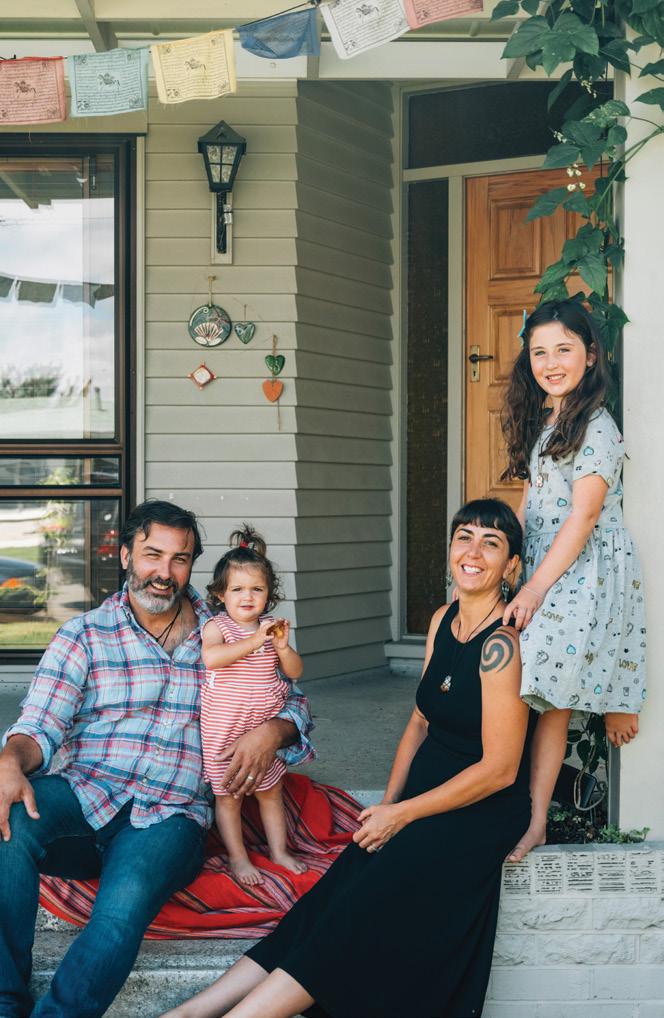
84 BAYBUZZ March + April 2023
children quietly playing and ‘helping’, so I’ve begun calling him ‘Decibel Dad’ instead.
The wine business, however, is mostly a solo gig. “My beautiful partner Mara is Italian and like me she enjoys wine, but unlike me, it’s not her passion. She’s not currently involved in the dayto-day stuff because she’s a busy artist and a busier teacher; however I consult with her in much of my decision-making. She has awesome energy about her, probably coming from her Italian blood, and we’re hoping in 2023 she might have time to come on board to help a bit more,” Dan enthuses. “Our sevenyear-old daughter Cecilia has grown up around this business and we have lots of fun experiencing this together. She’s learning every aspect of the process and is the future CEO whereas Juliette isn’t quite two yet, so she’s still developing
her skills,” he laughs.

Anyone who meets Daniel will know he’s a cool cucumber, calm, cheery and generally unflappable. But as with all small business owners, especially when you’re working with nature, there’s constant, underlying pressure, tension and uncertainty.

For Decibel, shipping is the headache du jour. “There’s so much disruption on the oceans and in ports around the world right now and we have to keep a watchful eye on it. We’re getting the sense that things are slowly improving, but it’s very nerve-racking and slows down the momentum and growth necessary to be profitable,” he shrugs.
“I’m not trying to be a giant international corporate or anything, but there are hard realities to the wine business. Many people don’t want to admit it, but below a certain level of production

Gretchen has also been recognised as No. 12 Top Residential Salesperson Nationwide for Bayleys New Zealand, No. 20 across all divisions Bayleys Nationwide, and Top 5% of Bayleys Salespersons Nationwide for the third year running.
M 021 988 904

STILL AT THE TOP AS NUMBER ONE
ONE AGENT FOR BAYLEYS HAWKE’S BAY 2021/22 ALTOGETHER BETTER EASTERN REALTY LTD, BAYLEYS, LICENSED UNDER THE REA ACT 2008
E gretchen.paape@bayleys.co.nz
NUMBER
and revenue, it’s simply not possible to survive,” he adds. “That is unless you want this to be your ‘side gig’ or you have some other source of income. But not me. I want to do this full-time. So that requires a certain commitment to growth and issues like this can be very disheartening.”
According to Daniel, in order for wine production to make any sense, you need to make a lot of it. “I encourage any aspiring wine entrepreneurs to read the Deloitte wine industry survey that comes out every year. Those numbers don’t lie. Day to day, we’re just like any growing company, albeit with some unique challenges. We have to manage cashflow where, in the best case, we have a six month turnaround before we can even start to recoup our costs on a wine.” Six months! That’s almost as bad as being a freelance wine reviewer! And in the most extreme cases, Dan explains it can be years before he’ll see any returns.
“But we are growing, so we had to find Decibel a home base, a place where we could sell our wines direct to the people. We opened our tasting room and shop in 2021 before weathering the toughest year for hospitality that anyone can remember for a long time.” Despite Christmas 2022 and New Year 2023 being soggy and boggy weather-wise, the shop’s been busy and Dan feels a corner is being turned. “But I think it’ll be a few years, maybe many years, before we return back to pre-pandemic levels of off-season business, having an employee talent pool that can handle peaks in tourism and having the economic confidence required to pull many businesses out of the mess we’re in.”
Things might be messy, but living in Hawke’s Bay helps. “Days at Ocean Beach, hikes up Te Mata Peak, sunsets after a hard day’s work in the vineyard and peaceful moments in the dark corners of the winery are some of my
favourite things,” Dan says. He thrives when he’s with family and friends.
“And I love being part of a real neighbourhood on the East side of Hastings, making those daily human connections with mates up and down the blocks,” he adds. “Plus it’s great being able to talk to people from around New Zealand and now, finally, from around the world who visit our tasting room.”
But his real happy-place, Dan’s real pocket of paradise, is when he comes home each day to his cosy house on his quiet street in Hastings to mess around and play with his daughters. “There’s a lot of joy there. And even though Mara and I are busy, Hawke’s Bay affords us a happy, balanced life.”
So when he’s not parenting, tending grapes, making wine, working in the cellar door, away on sales trips and coordinating special events and marketing, does he have any hobbies or indulgences in those rare squeaks of downtime? “I play a bit of guitar. But I’m no musician. I mean, if you made wine in your garage would you call yourself a winemaker? I swim and do hot yoga, not so much for fun, I have to do it for my health. I’d rather play basketball but my knees can’t take it anymore,” he sighs. “I’m also a bit of a closet dork. My first degree was in political science and philosophy” (which would explain his considered, thoughtful demeanour). “So I read a lot and listen to plenty of those sorts of podcasts. What can I say? I’m someone who had an epiphany reading Camus.”

I wish I could say, dear reader, that I whipped back with ‘Blessed are the hearts that bend; they shall never be broken’, but I can never remember Camus quotes when they’re called for.
“I love science and history and cycle through phases of devouring a lot of fiction,” he adds. “I’m also kind of addicted to Substack and all it has to offer for talented writers, free speech and creative ideas.”
And if he wasn’t making wine in Hawke’s Bay? “I reckon I’d be living in Italy, talking to old bastards in cafés. I once entertained the idea of moving to Central or South America to join a junta or something,” he replied. “But now I think I just want to spend time talking to people, hearing their stories.”
And that’s when a Camus quote finally came to me! So I went to offer, “But what is happiness except the simple harmony between a man and the life he leads?” But Dan had already left to serve some customers.
decibelwines.com
86 BAYBUZZ March + April 2023
“And I love being part of a real neighbourhood on the East side of Hastings, making those daily human connections with mates up and down the blocks. Plus it’s great being able to talk to people from around New Zealand and now, finally, from around the world who visit our tasting room.”
Locally Owned & Operated
KITCHEN | BATHROOM | LAUNDRY
With 4 sites across Napier and Hastings, Holders Plumbing Plus has been around in the Bay Bay for three generations. We’re known for our friendly, experienced and highly knowledgeable staff who are quick to resolve all your plumbing and bathroom ware needs. Complex plumbing headaches suddenly seem evaporate when Holders take charge. We make creating great bathrooms easy.

Our high quality products are sourced from the best in the business – top companies with international reputations. We only deal with suppliers who can back up their products with solid guarantees. So, if you’re looking for a high quality shower, bath, vanity, basin, toilet suite or tap – we can show you a superb range to suit your requirements.
supporting your local community
As Hawkes Bay has grown, over the years, Holders Plumbing has forged deep roots into the community. Many of our clients have grandparents who also used to be customers. People keep coming back to us for the great service they can rely on.
We also support local businesses and we have worked together on many local projects. For example, we recently collaborated with New Zealand’s favourite fabric and furnishing design store, Little & Fox and we have some of their fabulous big, bold wallpapers on display in Napier.
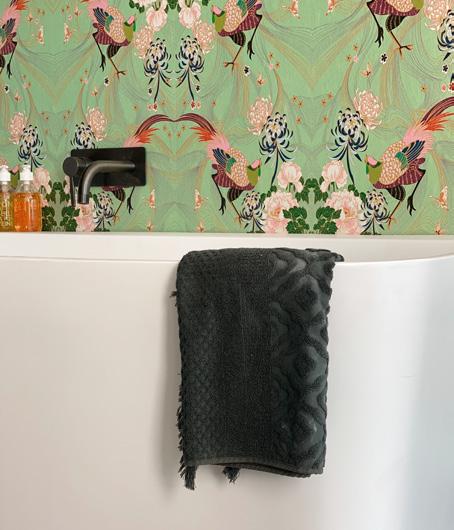
We invite you to visit our two bathroom showrooms –one in Taradale Road Napier, the other in Ellison Road Hastings behind the trade Warehouse – where we have the Bay’s biggest and the best range of products on display. Come in, chat to us and be inspired.

501 Warren Street, Hastings | 302 Ellison Road, Hastings 1018 Omahu Road, Hastings | 118 Taradale Road, Napier
H O L D E R S
PLUMBING SUPPLIES | BATHROOM SHOWROOM
Some of the wallpapers donated by Little & Fox, Napier
HASTINGS
If you take a walk through Hastings CBD, your senses are in for a treat. Impressive architecture to appease your eyes, an array of international food and drink choices to entice your taste buds, the buzz of diverse community groups, and retailers with an abundance of goods to inspire and delight.
Written by Lucinda Perry, General Manager of Hastings City Business Association

Hastings is eclectic, unique, and rich in history, but it’ll also keep you guessing – with new stores popping up around the city and developments that bring it further to life; what’s not to love?
At Hastings City Business Association, our members are the local businesses that make up the CBD. They are what keeps our city thriving and have seen plenty of change in Hastings over the years. Dining options aplenty, a world class cultural and arts scene and something to entertain the whole family – vibrancy, diversity and opportunity are words I hear a lot and for good reason.
Leah Bernie, Director of Bramwell Bate Lawyers, says “The revitalisation of the Hastings CBD has brought new energy to the city centre. It is fast becoming the dining destination of choice which is exciting for the new and established restaurants and bars.”



A born and bred local, Angus Thomson, Owner of Thomson’s Suits, has certainly seen Hastings CBD in its good, and not so good times. “In the last few years, I can see the vibrancy returning to Hastings. The new stores coming to the main street and the developments that are happening close by all add to the liveliness… it’s a great place to do business, shop and live which is only going to improve moving forward!”
Our local Hastings District Council’s proactive approach to matters such as security, means we’re always evolving to help locals and visitors alike. We have a world class ‘City Assist’ system in place, with ambassadors of the CBD aiding visitors and residents every day, connecting with people in a way that naturally diffuses any difficult situations.
I’m always inspired by the visionary private investors taking a punt on our CBD. Precincts like The Tribune, by Rob and Barb Hansen, are a welcome combination
Long Island Delicatessen
Bollywood Hastings
Hastings City Business Association team members, Emma Sey & Lucinda Perry - OMGoodness Bread & Café
Café Kaos on H
of delicious eateries, health and beauty services, retail and event space. With Albert Square now being home to Rush Munro’s, Michael Whittaker and Wallace Development are bringing surrounding buildings further to life with laneways, eateries and professional services in the mix.
Craig Riddiford, Hastings City Business Association Chairperson, says “Hastings CBD is thriving. It is a great place to do business, there is always something happening, and it is continuing to grow.” Echoing that sentiment is Damon Harvey, HDC Councillor, who says “Hastings CBD is reflective of the community – it’s vibrant, eclectic and has come of age and a desirable place to work or shop, a popular place to catch up with friends over a drink, bite to eat or a show and is an up and coming living zone.”

With a renewed focus on urban living and more people choosing Hastings as a place to live, the current momentum of liveliness and enthusiasm will only continue to grow – keeping the uniqueness we’ve grown to love so much about Hastings.
We’re fortunate, unlike many city centres, that big box retail doesn’t suck the heart out of the city. Wendy Schollum, HDC Councillor says, “Hastings is preserving it’s city centre through urban spaces which attract unique boutique retailers and hospitality offerings, inner city living, to provide 24/7 activity and passive security; and culture, proudly proclaiming our cultural history within the city’s design ensures we are uniquely Heretaunga.”
Although there’s still more work to be done and spaces to be filled, James Landon, Owner of Plaza Books, believes “businesses and people with fresh ideas and energy in time will make it happen given the right opportunities.”
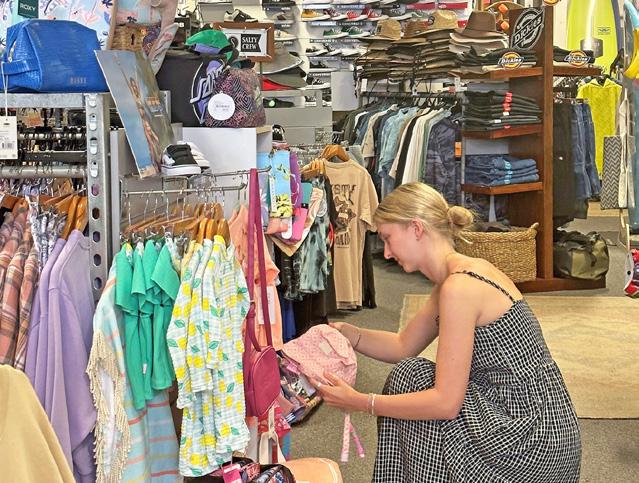


So come and discover what this treasure of a city is all about.
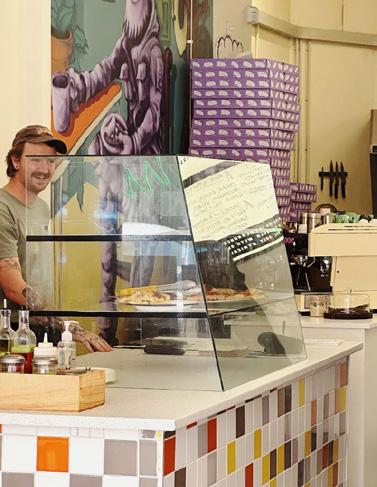 PHOTOS FROM TOP RIGHT: Serving up pizza at Spooky’s Pizzeria; beautiful homewares at The Boho Delhi; one of the many murals in Hastings CBD BELOW: Browsing the many options at Hustle Surf & Moto
PHOTOS FROM TOP RIGHT: Serving up pizza at Spooky’s Pizzeria; beautiful homewares at The Boho Delhi; one of the many murals in Hastings CBD BELOW: Browsing the many options at Hustle Surf & Moto
ADVERTORIAL
Life Food / Ian Thomas
Egg appreciation
Twenty things I know about eggs, and you should too.
1. Egg farming in South East Asia was a ‘thing’ three and half thousand years ago. The jungle fowl was domesticated and the chook has been part of the landscape ever since.
2. If you’re lucky enough to have an egg in the house then you have a meal in the house.
3. Often taken for granted like the dependable, but frumpy, aunt of food ingredients, the cackleberry has a habit of being there when we really need something wholesome.

4. Henfruit is as delicious as it is wondrous. It’s the thing we eat that also has the capability of creating a new life. Your quinoa, cashew cheese, and kale chips can’t do that! The egg really is the Wonderfood.
5. A multitalented oblate spheroid is the heart of mayonnaise while simultaneously being the key player in the meringue game. There never was, nor will be, a more complete food or versatile ingredient. What other food makes its own sauce?! I cannot resist that unctuous, oozing yolk that wraps the white and the Vogel’s toast in a golden, silky blanket, speckled lightly with freshly ground pepper and flakes of boujee salt.
6. Aside from its deliciousness and protein characteristics, the humble bum-nut is easy to produce at relatively low cost in all kinds of climates and keeps well for a month or so. The built-in mechanism to indicate when it’s past its best assaults the air and leaves no doubt.
7. Such is the importance of eggs in the professional kitchen that the toque, or chef’s hat, has a fold for every egg recipe the chef has mastered from souffle to sabayon. Urban legend has it that a new cook
will be asked to cook an omelette by the chef so as to demonstrate their skills. It’s not just about producing a good omelette. The test shows dexterity and experience as well as how confidently the new cook handles a pan over a flame.
8. Egg white is called albumen and turns white when it reaches 60 degrees celsius.
9. The best before date for eggs is five weeks from the date of laying. Unlike a ‘use by’ date you can eat eggs after they have passed this date. If you’ve kept them in the fridge they may well be good for another two weeks. As the egg gets older the whites become less firm. Crack eggs into a cup rather than adding them directly to baking or cooking mixes just in case you’ve left it too late.
10. The strength of an egg white is measured in haugh units. Eggs from young pullets score over 90 while eggs from older hens only reach the 70s. Younger birds produce eggs that poach better. They’re often smaller (size 6). Eggs from young hens have darker brown, smoother shells. As the hen ages the white becomes less firm and the shell becomes paler and rougher in texture.
11. After selecting the freshest and best eggs for poaching, cook them gently in a pan of not-quite-boiling water. Add a little vinegar to help the whites set. Don’t crowd the pan.
12. If you struggle with poaching, try froaching! Start by gently frying eggs then add water to the pan and put a lid on it. The eggs will steam their way to perfection.
13. If you’re baking and want a bargain, search out ‘commercial’ grade eggs from your local egg farm (sadly few in number now). These eggs are generally from older hens and have weaker shells but are just fine for
baking or scrambling.
14. My go-to brunch or lunch dish, particularly for guests that drop in out of the blue, is a frittata. Perfect for turning anything you find in the fridge or garden into a quick meal. The Eggah/Ejjeh is an Egyptian version of the frittata full of onions lightly caramelised with cumin and coriander seeds, raisins, nutmeg and fresh herbs. The perfect standby for when your mummy drops in unexpectedly.
15. Drop an egg or two into soup to boost the protein.
16. Top two-minute noodles with a boiled egg.
17. Make a thin one-egg omelette and use it to wrap sushi.
18. Add 2 tablespoons of water to your omelette mix for a fluffier, lighter texture.
19. Let’s not forget eggs’ best friend, bacon. The farmyard marriage began in 1500 BC when salted pork belly dropped in China. Picture the delight of the peasant that first joined the egg, bacon, and bread dots together to create a winning trifecta of such magnificence that it is ubiquitous in pork-eating cultures and probably always will be. My favourite B&E sammies are found at Holly Bacon in Hastings and Adoro Cafe in Napier.
20. Despite shopkeepers telling farmers how to farm and customers what to buy, the egg will triumph and be with us in so many guises for as long as we want omelettes for breakfast, quiche for lunch and tiramisu for dessert.
Ian Thomas is a caterer and formerly free range egg farmer, cooking demonstrator, and manager of a commercial food production business. He specialises in cooking paella. paellaagogo.com
90 BAYBUZZ January + February 2022

Life Books / Louise Ward
Gratuitous graphics
Graphic: adjective
1. relating to visual art, especially involving drawing, engraving, or lettering.
“his mature graphic work”
2. giving clear and vividly explicit details.
“a graphic account of the riots”
When I “were” a lad, they were called comics, but these days graphic novels are a legit thing, and not just for children. From the questionably literate and insanely popular Dog Man books for first readers by Dav Pilkey, to the 2018 Booker long listed Sabrina by Nick Drnaso, the comic strip as a method of storytelling is alive and well.
Teachers, dyslexia advisors and booksellers are turning to the graphic novel as a way of engaging readers. There’s still some angst around them though; one school librarian wouldn’t stock them because she thought they were ‘rubbish,’ another because the kids stole them.
Blackwater
 by Jeannette Arroyo and Ren Graham
by Jeannette Arroyo and Ren Graham
(Henry Holt & Co, $27.99) is aimed at young adults, or anyone over about 14 years who likes action, romance, and werewolves and that’s most of us, right? Told in chapters alternating between angry High School jock Tony, and shy, unwell Eli, we follow the path of the boys’ burgeoning, unlikely friendship, and their investigation into the creature that’s stalking the local forest.
Each author narrates and illustrates a chapter in turn, enhancing the characterisation and atmosphere. Tony’s palette is full of oranges and reds packed with a pulsing strength and energy. Eli
is contrastingly pale, greens and greys marking his lapses “in and out” of his autoimmune disease. The story is told just as much through facial expressions and the debris in an abandoned cottage as through the speech and thought bubbles.

As adults, we tend to skip over the pictures, but any reader of children’s picture books will tell you how much story is to be gleaned from illustrations. This is a fascinating way to read; having to slow down and examine a page to get the whole story makes it a deep reading experience, one of great value to all readers and vital to those who struggle or who are reluctant.
Another form of graphic is, of course, the shockingly explicit. As we read, our imagination tends to edit out the most uncomfortable parts of a story, something our eyes cannot do when assaulted by the televisual version of Game of Thrones in all its pornographic and violent glory. This year’s Booker Prize winner, The Seven Moons of Maali Almeida by Shehan Karunatilaka relates the history of the Sri Lankan Civil War through the dead eyes of our eponymous hero, a photographer who saw it all, from all sides.
We begin in the afterlife with a second person narrative:
“You wake up with the answer to the questions that everyone asks. The answer is Yes, and the answer is Just Like Here But Worse.”
Maali has seven moons to find out how he ended up in the afterlife, after which he can enter The Light, or will remain in a form of purgatory, haunting the streets of Colombo. He initially chooses to follow a floating garbage

“You wake up with the answer to the questions that everyone asks. The answer is Yes, and the answer is Just Like Here But Worse.”
THE SEVEN MOONS OF MAALI ALMEIDA
bag clad figure who promises him answers and revenge, but who should he trust? The tortured ghosts telling him, ‘Even the afterlife is designed to keep the masses stupid,’ or the ‘helpers’ encouraging him to move on. Who knew the afterlife could be as tricky as the before death?
The complex story of the Tamil and Sinhalese peoples of Sri Lanka is related through historical events such as the 1981 riots in Jaffna to which Maali is witness. He photographs child soldiers, suicide bombers, and Sri Lankan government officials where they shouldn’t be. There seems to be no sense to be made of the war, which is the point.
As Maali investigates his death, we are introduced to the love of his life, DD, and his best friend Jaki, the agencies he worked for and the garbage men who dispose of bodies. All will become suspects in the mystery of his death.
It’s not all chopped limbs being thrown into Beira Lake though. In life Maali was a lover, a friend, a chronicler of horror because someone had to do it. He’s a beautifully rendered, complex character whose despair at his country’s self-destruction might turn to hope after death. He’s a handsome man who loves beautiful boys, on one hand a wastrel, on the other incredibly clever and brave.
The violence is graphic, but when it’s done beautifully as this, with the most gruesome pieces off the page (the sounds coming from a cell for example), it’s palatable and necessary, because fiction like this helps us to understand the worst of humanity.
Whether you choose graphic (1) or graphic (2), a well-chosen book is always going to be enriching.
92 BAYBUZZ March + April 2023
Let the talented team at Little and Fox transform your loved pieces of the past or recover that tied sofa.





With our in-house upholstery department you can speak directly to the makers and create that perfect piece.
With hundreds of fabrics to choose from and a design team at your disposal the world's your oyster!
We also make custom headboards and ottomans. Get in touch today.

STYLISH, QUALITY FLOORING THAT DOESN’T COST THE EARTH Creating your dream flooring has never been easier! At Floormart Hastings, we’re proud to deliver an affordable range of products and services to our clients. From carpet to tiles, we’ve got you covered. 0800 78 98 70 www.floormart.co.nz 1000 Omahu Road, Hastings
Reupholster
Reduce Reuse
www.littleandfox.co.nz info@littleandfox.co.nz • 06 834 1368 60 Bridge Street, Ahuriri, Napier
Havelock North Village is the vibrant heart of Hawke’s Bay. Sip great coffee at the local cafes, discover stunning natural attractions, eat and drink your way around the Village eateries, or wander around stunning boutique retailers and artisan providores; there is something for everyone to love about Havelock North!
NATURAL FIBRE BOUTIQUE

Welcome to the Hawke’s Bay home of OFI. We offer exclusive selected Natural Garments sourced from around the Globe, intertwined with that Italian art, culture and fashion development of New Zealand. We pride ourselves on our quality Stylish Sustainable Woman’s Clothing that makes you feel and look great!
Havelock North store: 3/4 Joll Road (06) 877 5327

Waipukurau store: 97 Ruataniwha Street (06) 858 8675
diahannboutique.co.nz

Pop in our boutique, to experience the joy of being stylized in our beautiful new autumn collection clothing by our caring team.

www.nzonlyfromitaly.com



94 BAYBUZZ March + April 2023
OFI
Luxurious Natural Fibre Clothing Boutique
SHOP 6 JOLL ROAD HAVELOCK-NORTH, 4130 TEL: 06-8775677 29 HASTINGS STREET NAPIER, 4110 TEL: 06-8336610
HAVELOCK NORTH











March + April 2023 BAYBUZZ 95 4 Donnelly St • 06 877 7650 • edgesworkshop.co.nz Open Monday to Friday 9am – 4.30pm & Saturdays 10am-1pm. Closed Sundays & long weekends. www.gardenalia.co.nz @gardenalia.havelocknorth.nz| @gardenalia.nz gardenalia 28 Havelock Road Havelock North garden inspired living with antiques and vintage gardenalia from the UK ADAMO • 8 Joll Road • 06 877 9777 • adamo.co.nz FLORIST • Shop 8, Village Court • 06 877 6465 • zinnia.co.nz Shop 10, Village Court, 10 Napier Road 06 650 5777 • email havelock@shoescience.co.nz HAVELOCK NORTH
Life Mouthy Broad / Jess Soutar Barron

Just enjoy the pizza!
Of all the political footballs being kicked around this year, the one we all need to be rooting for is Michelle Lee’s private members bill.
It’s going to have lasting ramifications for all salt-of-the-earth kiwi families just trying to stretch their meagre resources across all the mounting bare necessities of life. Parents just wanting to do the best by their children. Children just needing to use the little they have for the greatest reward. Grand-dads just trying to help out where they can on their ever-diminishing financial reserves.
It’s the bill that will counter cost-ofliving woes, tackle inflation panic and calm the choppy seas of interest rates. It’ll mean we as a nation can rest a little easier at night, with a little more padding in our pocketbook, knowing the government has got our collective back.
It’s the Gift Card Expiry Bill.
It’s an amendment to the Fair Trade Act that will see expiry dates on your book token, your prezzie card, and that voucher Uncle Dave gave you for Briscoes pushed out to three years. When the Bill got picked from the ballot I can imagine Lee slapped her hands together and crowed, “This is just the silver bullet we need!”
Three months out from Chrissie, I have one such token in my handbag that I can’t bring myself to use. It’s for a Vinci’s pizza. But to me it’s worth so much more than six slices of the weekly special (even if it is Prawn Cocktail with Mary Rose Sauce). The voucher is my Break-Glass-In-CaseOf-Emergency, Get-Out-Of-Jail-Free, Golden Ticket. It’s a little packet of potential that means even if I’ve got an empty tank the night before pay day I can host a work shout, bribe a kid, take a mate on a date or simply treat myself.
For every scenario I can imagine, the value of the card grows exponentially
It’s a little packet of potential that means even if I’ve got an empty tank the night before pay day I can host a work shout, bribe a kid, take a mate on a date or simply treat myself.
just because it makes so many options possible. As long as I don’t actually turn my aspirational goals for it into hard reality, it retains its promise of good things to come.
Across the country we get hundreds of these ephemeral favours every Crimbo, and sometimes we get them for our birthdays too. Friend just had a sprog? Gift a Farmers voucher. Friend just got a dog? Gift a Farmlands voucher. From New World to Kathmandu, from the big boxes to that cute little craft co-op on the high street, everywhere offers vouchers and every one of them represents a future moment of retail satisfaction.
Not that we always take those moments. Too often we don’t, preferring to let them wallow in our wallets like a happiness timebomb ‘til we pull the pin and trade them for stuff.
Seven out of ten of us received a gift card in the last year. Half of all voucher giftees can’t check the amount, can’t find the shop or can’t find anything in the shop they actually want. A quarter of all gift cards don’t get used because they expire or they get lost or the business they are for goes bust. Mother’s Day accounts for a big slice of the voucher pie. Men buy them more than women. Nearly half are for $50-$70. That $20 K’Mart voucher you got as a “Thank You”? You were robbed!
Giving money is vulgar and actual gifts can be hard to nail down in terms of taste. If you can manage to narrow
gift-buying to an actual shop and a specific amount then you are winning. From that point on it’s up to the receiver. If the gift is crap or doesn’t eventuate at all, that’s on them.
The real winner – when it comes to gift cards – is retail. Consumer magazine says it’s hard to calculate because business is staying shtum on the details, but when a company is doing their accounts they assume a percentage of gift voucher holders won’t redeem them. Most put the figure at around 5-10%. They win in another way too. The sale of the voucher sits in the assets column of the ledger while there’s no actual item handed over in exchange for ages. That helps with cashflow. And three-quarters of us will spend more than the amount on the voucher when – if – we do go in to use it. Win, win, win.
Before we get too far into the year, ransack your backpack looking for rogue gift cards. There’ll be one in there somewhere even if it’s one that’s half spent. Chances are if you’ve still got it there’s money still on it.
Here’s some use-it-or-lose-it tips for gift cards:
• Always check the expiry date.
• Make it a mission to use it in the same month as you get it.
• Keep it up front in your purse not just chucked in with the mullock at the bottom.
• Use it to buy a treat for someone else.
• Give it to a kid and see what they can do with $20 at K-Mart.
• Stop daydreaming about the perfect scenario, companions and timing, and just enjoy the pizza!
Sponsored by Little Red Robot
96 BAYBUZZ March + April 2023

Wise-up on smart water use, Hawke’s Bay! And do your bit for water conservation. Using a cover saves up to 80% of your pool water from evaporation... Good to know, right? Visit knowourwaterhb.co.nz for water tips and info
THE ULTIMATE IN PERFORMANCE.
The new Jaguar F-PACE SVR is our ultimate performance SUV, delivering greater performance, agility and dynamism than ever before.

From 0-100km/h in just 4.0 seconds, its powerful 5.0 litre V8 supercharged engine with 550PS (405kW) of power and 700Nm of torque guarantees a thrilling driving experience each time you get behind the wheel.
Book a test drive today.
Bayswater European 93-107 Carlyle Street, Napier 06 650 0799
jaguar.co.nz
Terms and conditions apply. The standard Scheduled 5 Year Servicing is included. Speak to your retailer for more details or visit www.jaguar.co.nz. JLR229742
NEw JAGUAR F-PACE SVR



































































 Puketapu Bridge washed out. Photo: Patrick O'Sullivan
Story by Bonnie Flaws
Puketapu Bridge washed out. Photo: Patrick O'Sullivan
Story by Bonnie Flaws




























 Jarden is proud to sponsor BayBuzz regional economic coverage.
Digital Circus. Photo: Florence Charvin
& airport cope with cyclone.
Jarden is proud to sponsor BayBuzz regional economic coverage.
Digital Circus. Photo: Florence Charvin
& airport cope with cyclone.







































 Hawke’s Bay Airport
Hawke’s Bay Airport











 Hastings District Council is proud to sponsor BayBuzz culture and lifestyle coverage.
ABOVE: An exclusive peek inside two historic Havelock North homes.
Photo: Florence Charvin
Hastings District Council is proud to sponsor BayBuzz culture and lifestyle coverage.
ABOVE: An exclusive peek inside two historic Havelock North homes.
Photo: Florence Charvin
 Story by Mark Sweet
Photos by Florence Charvin
Story by Mark Sweet
Photos by Florence Charvin

























































 PHOTOS FROM TOP RIGHT: Serving up pizza at Spooky’s Pizzeria; beautiful homewares at The Boho Delhi; one of the many murals in Hastings CBD BELOW: Browsing the many options at Hustle Surf & Moto
PHOTOS FROM TOP RIGHT: Serving up pizza at Spooky’s Pizzeria; beautiful homewares at The Boho Delhi; one of the many murals in Hastings CBD BELOW: Browsing the many options at Hustle Surf & Moto


 by Jeannette Arroyo and Ren Graham
by Jeannette Arroyo and Ren Graham



























